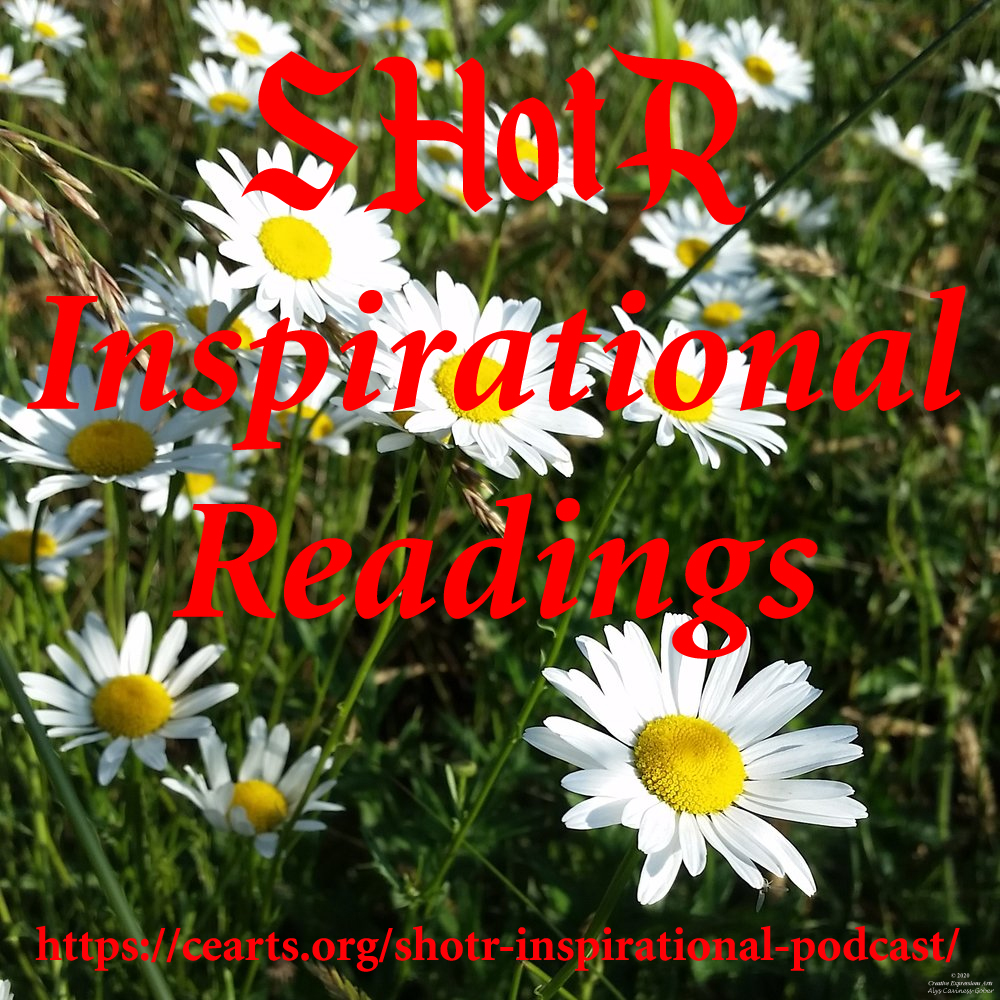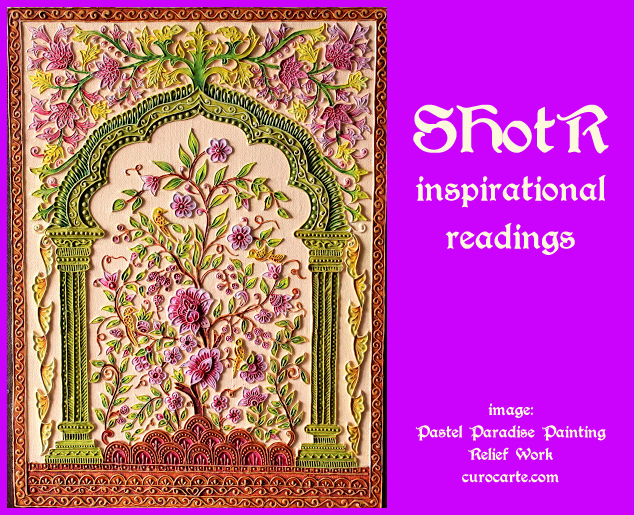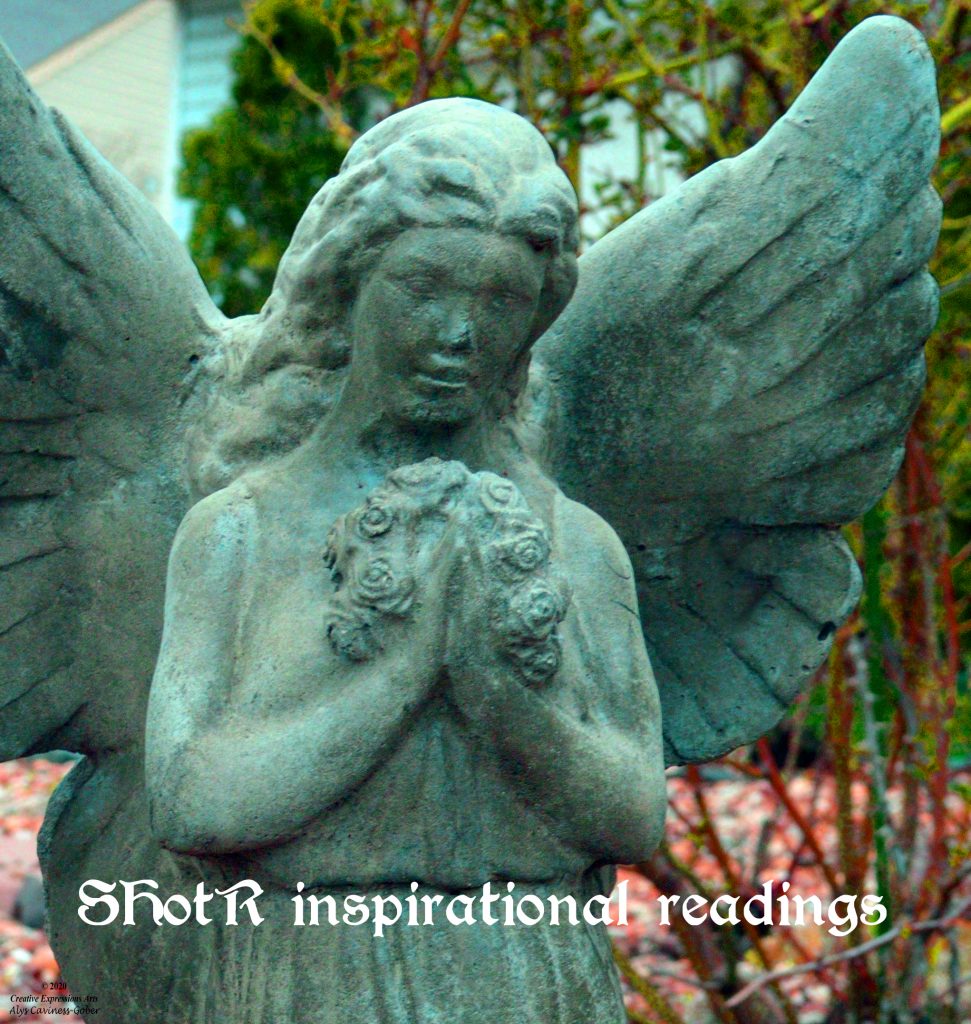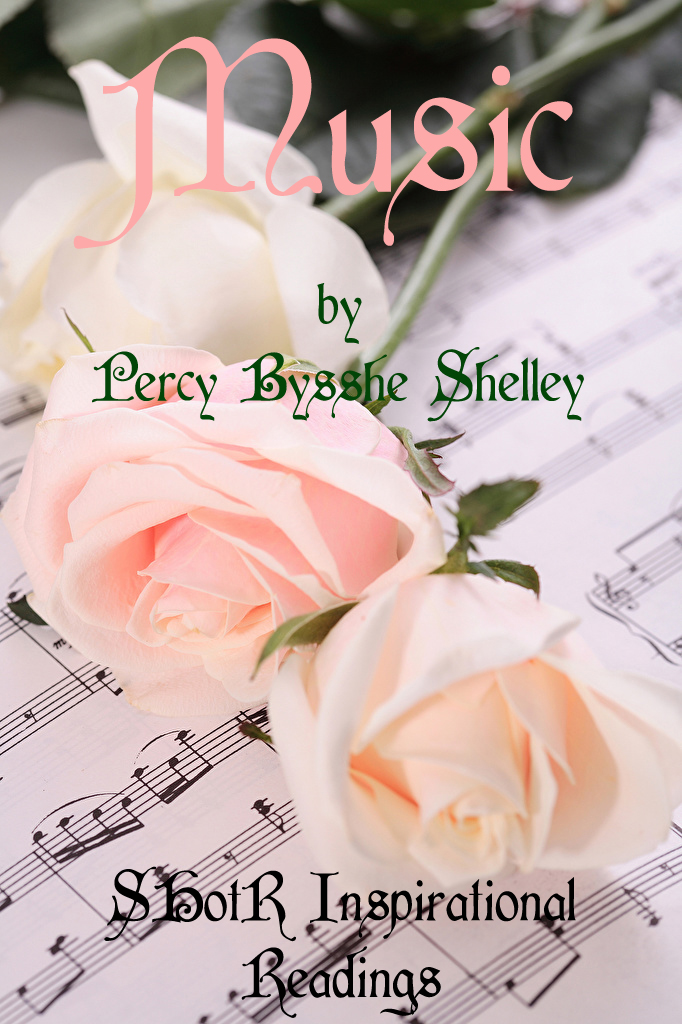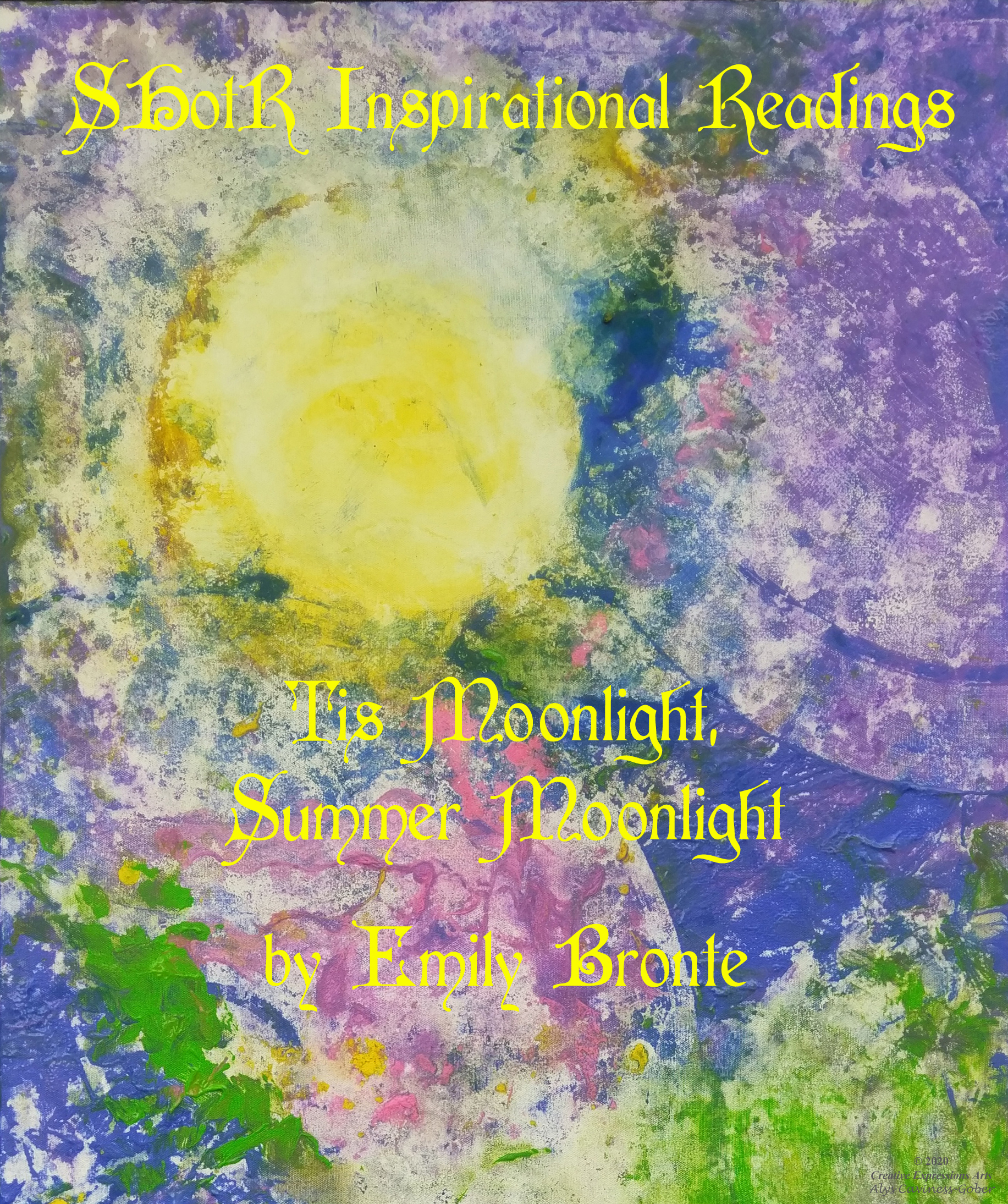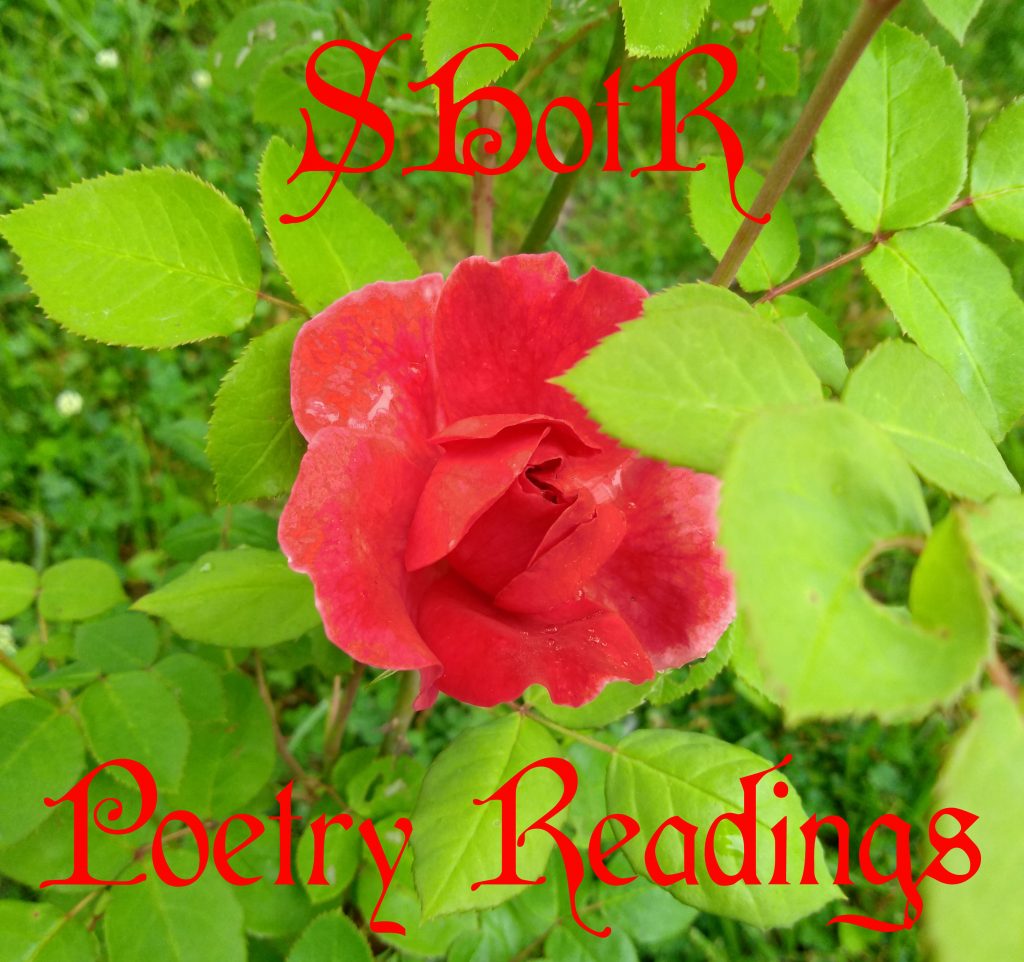
We’re pleased to provide Spiritual Humanity on the Rise (SHotR), formerly known as Sacred Heart of the Rose, with this space for their poetry readings recordings. CEArts has a longstanding relationship with Spiritual Humanity on the Rise, a 501(c)(3) non-denominational spiritual organization; like CEArts,
SHotR is a 501(c)(3) nonprofit organization, welcoming and supporting ALL people. “Love” is the watchword: SHotR promotes behavior and actions that come from a place of love: fear is left outside our hearts and love carries us. Formed in 2010, the organization’s original name Sacred Heart of the Rose was chosen for particular reasons. When the organization was founded, its founder asked herself, What is sacred? The answer was, love. Love is perfect in its divinity, and is often represented by a heart. Divine perfection can seen in a rose: a perfect rosebud unfurls to become an astonishingly blossom. Put all of that together: Sacred Heart of the Rose. It was with that mission in mind that SHotR recorded the poetry readings (below), as insiprational messages for all on this life’s spiritual journey.
SHotR is working on recording and uploading prose and poetry readings that will (hopefully) be inspiring to YOU, so that you feel the positive power of our combined Spiritual Humanity, and help support its RISE in this troubled world. We, as human souls, can change the world for the better through the power of our thoughts and our actions. We are the stars in the night sky, the moon as it rises and sets, the sun that shines down upon us, and the tides that ebb and flow. We are Spiritual Humanity. Blessings upon you as we rise up!
In the meantime, enjoy these older SHotR poetry readings:
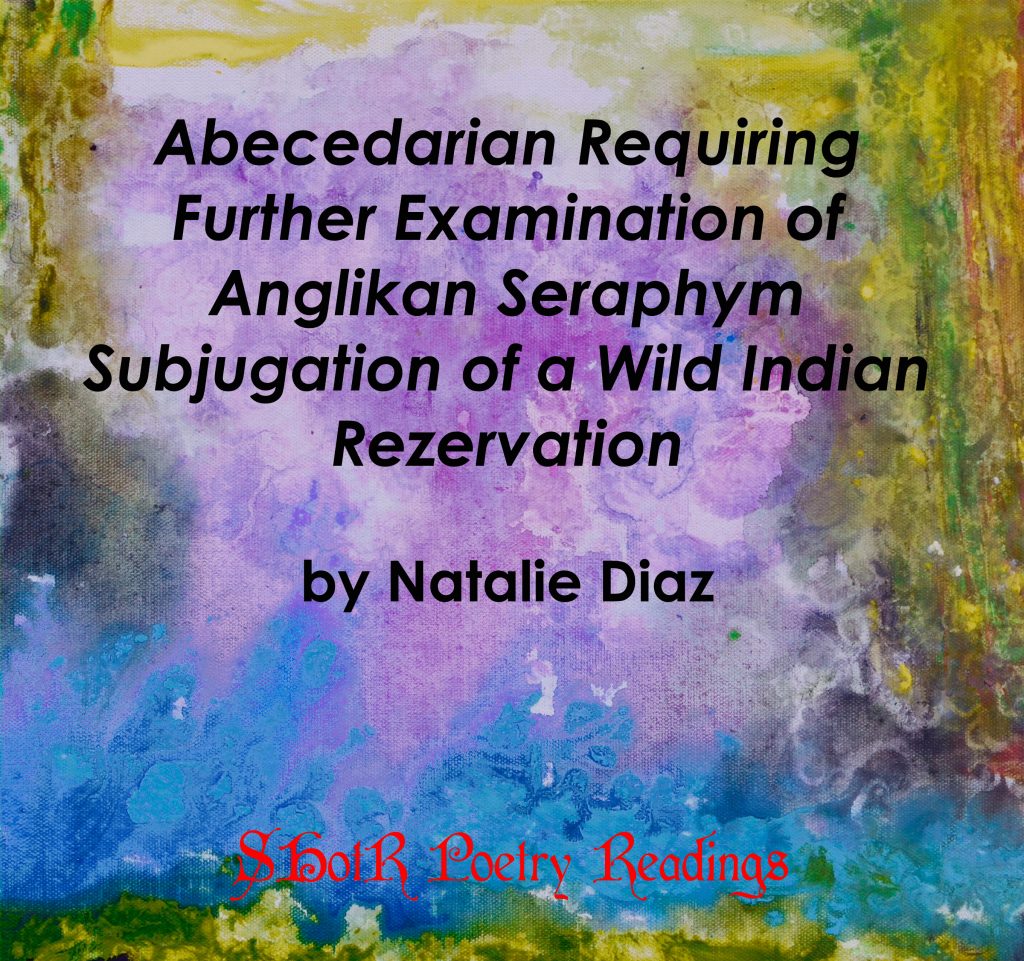
Natalie Diaz, “Abecedarian Requiring Further Examination of Anglikan Seraphym Subjugation of a Wild Indian Rezervation” from When My Brother Was an Aztec. Copyright © 2012 by Natalie Diaz.
Natalie Diaz was born in the Fort Mojave Indian Village in Needles, California. She is Mojave and an enrolled member of the Gila River Indian community. She earned a BA from Old Dominion University, where she received a full athletic scholarship. Diaz played professional basketball in Europe and Asia before returning to Old Dominion to earn an MFA. She is the author of the poetry collections Postcolonial Love Poem (2020), winner of the Pulitzer Prize; and When My Brother Was an Aztec (2012), which New York Times reviewer Eric McHenry described as an “ambitious … beautiful book.” Her other honors and awards include the Nimrod/Hardman Pablo Neruda Prize for Poetry, the Louis Untermeyer Scholarship in Poetry from Bread Loaf, the Narrative Poetry Prize, and a Lannan Literary Fellowship. Diaz lives in Mohave Valley, Arizona, where she has worked with the last speakers of Mojave and directed a language revitalization program. In a PBS interview, she spoke of the connection between writing and experience: “for me writing is kind of a way for me to explore why I want things and why I’m afraid of things and why I worry about things. And for me, all of those things represent a kind of hunger that comes with being raised in a place like this.”
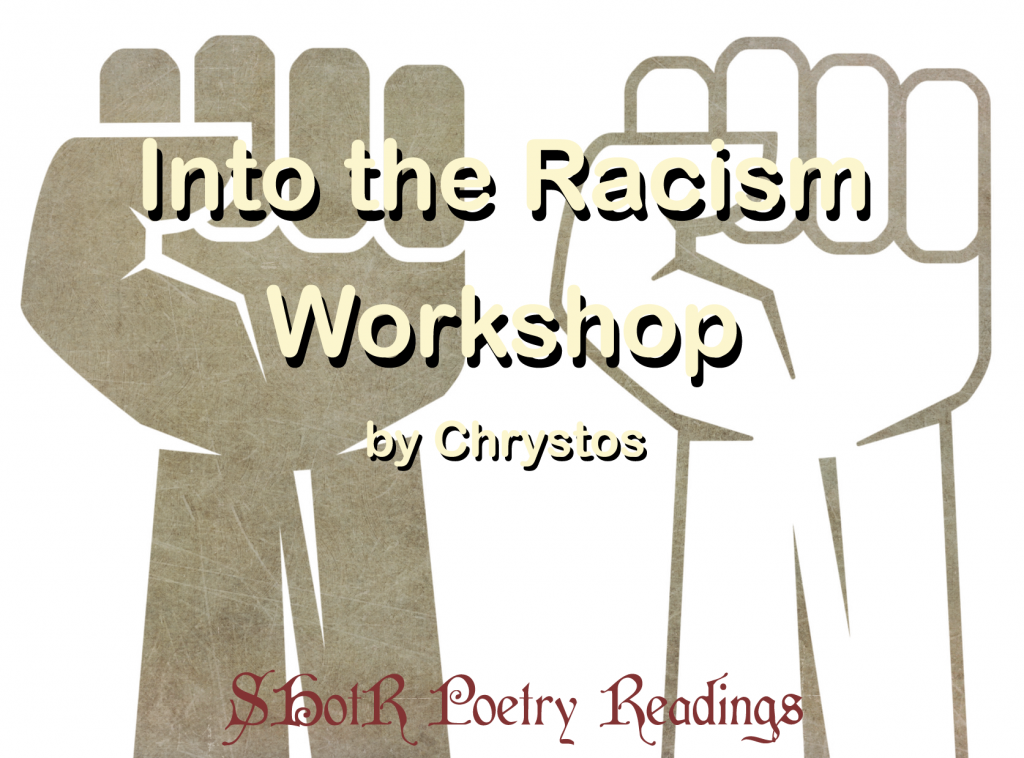
Chrystos, “Into the Racism Workshop” from Fugitive Colors. © 1995 Chrystos.
Chrystos (1946 – ) is a Menominee poet and activist, born in San Francisco, California. In her work, she examines themes of feminism, social justice, and Native rights. She is the author of several poetry collections, including Fire Power (1995), Dream On (1991), and Not Vanishing (1988). In a 2010 interview for the Black Coffee Poet blog, Chrystos said, “Since my 20’s, when I saw the need to address social justice issues in words, my work just ‘pops out.’ A newspaper story, an incident from my life, a book, a song, a garden snake, a sad face I see—I have no idea, actually, how these become poems. A line begins in my mind and won’t leave me alone. I’ve learned to sit and write it down and the rest just flows.” Chrystos’ work has been featured in This Bridge Called My Back: Writings by Radical Women of Color (1981), edited by Cherríe Moraga and Gloria E. Anzaldúa, and Living the Spirit: A Gay American Indian Anthology (1988), edited by Will Roscoe. With Tristan Taormino, Chrystos coedited the anthology Best Lesbian Erotica 1999. Her honors include the Audre Lorde International Poetry Competition, a Barbara Deming Grant, a National Endowment for the Arts grant, and the Sappho Award of Distinction from the Astraea Lesbian Foundation for Justice. Chrystos lives on Bainbridge Island, Washington.
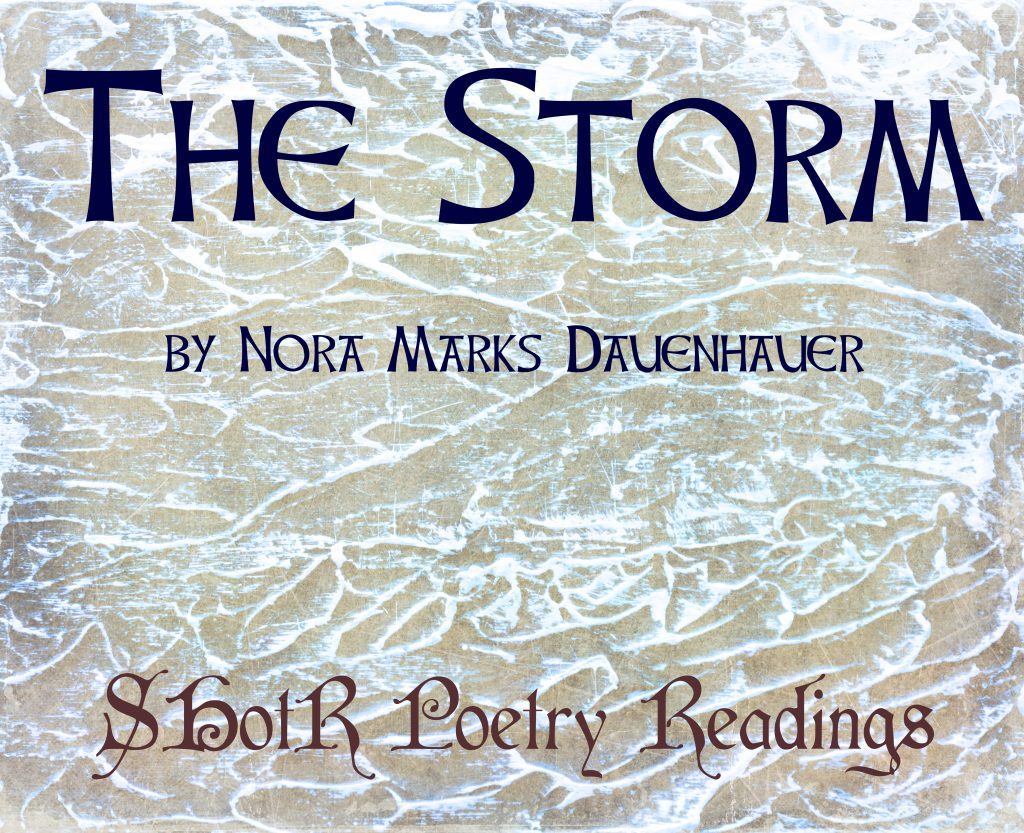
Nora Marks Dauenhauer, “The Storm” from Life Woven with Song. Copyright © 2000 by Nora Marks Dauenhauer.
Nora Marks Dauenhauer (1927 – 2017) was born in Juneau, Alaska, and grew up in Juneau and Hoona; her father was a fisherman and carver, her mother a beader, and the family lived at times on a fishing boat and in seasonal camps. As a member of the Tlingit tribe, Dauenhauer’s first language was Tlingit; she did not learn English until she was eight. She earned a BA in anthropology from Alaska Methodist University in Anchorage and was the author of the poetry collection The Droning Shaman (1988). She published a volume of poetry and prose, Life Woven with Song, in 2000. An “autoethnography” of the Tlingit tribe, it contains autobiographical pieces detailing Dauenhauer’s life in the natural world of the northern Pacific coast; the collection also includes short lyric poems and a cycle of dramatic plays depicting traditional Tlingit Raven stories. Influenced by the land and sea, Dauenhauer’s work preserves the stories and oral culture of previous generations. Dauenhauer worked as a Tlingit language researcher, translating, transcribing, and compiling Tlingit stories, sometimes in collaboration with her husband, Richard Dauenhauer. Her books include a Tlingit grammar, Beginning Tlingit (1976). She was a Tlingit language researcher for the Alaska Native Language Center at the University of Alaska, Fairbanks, from 1972 to 1973 and the principal researcher in language and cultural studies at the Sealaska Heritage Foundation in Juneau from 1983 to 1997. Dauenhauer was named the 1980 Humanist of the Year by the Alaska Humanities Forum. Her other awards included the Alaska Governor’s Award for the Arts, an American Book Award from the Before Columbus Foundation, and the 2005 Community Spirit Award from the First People’s Fund. She was a mother, grandmother, and great-grandmother and lived in Juneau, Alaska until her death.
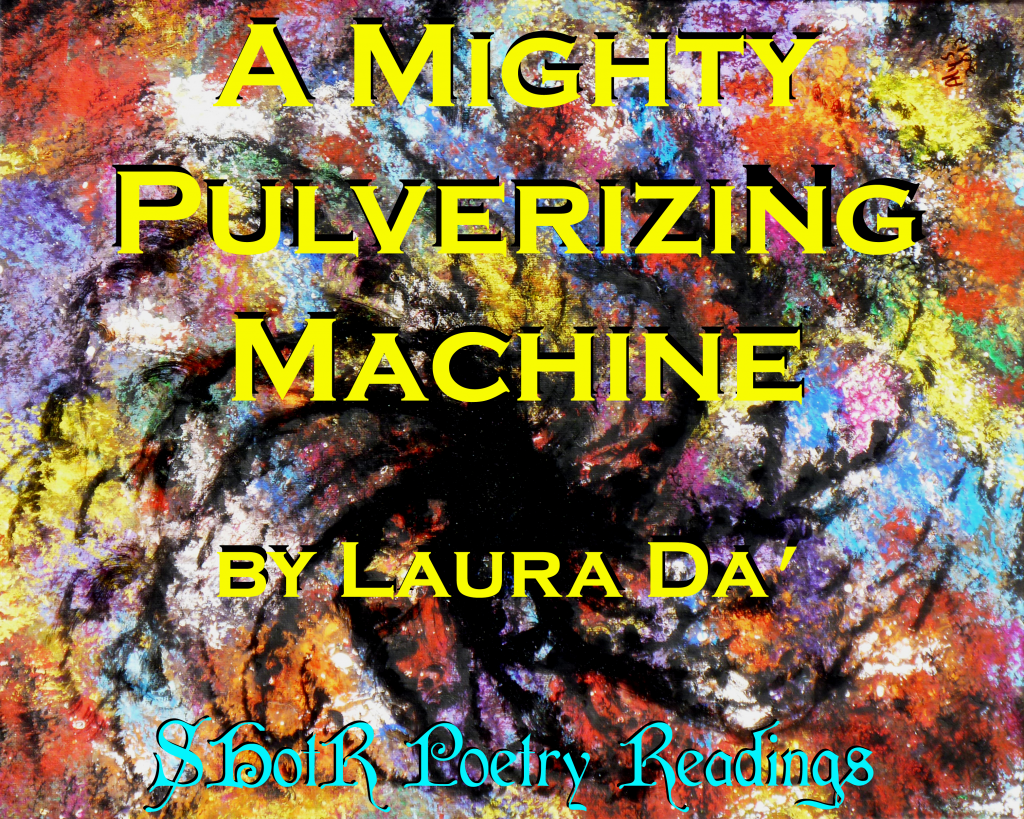
“A Mighty Pulverizing Machine” from Tributaries by Laura Da’. Copyright © 2018 by Laura Da’.
Laura Da’ is a poet and a public-school teacher, who studied creative writing at the University of Washington and the Institute of American Indian Arts. She is the author of the collections Instruments of the True Measure (University of Arizona Press, 2018) and Tributaries (University of Arizona Press, 2015), winner of the 2016 American Book Award and the chapbook The Tecumseh Motel. Her work has appeared in the anthologies New Poets of Native Nations (Graywolf Press, 2018) and Effigies II (Salt Publishing, 2014). A member of the Eastern Shawnee Tribe, she received a Native American Arts and Cultures Fellowship. Da’ has also been a Made at Hugo House fellow and a Jack Straw fellow. She lives in Newcastle, Washington, with her husband and son.
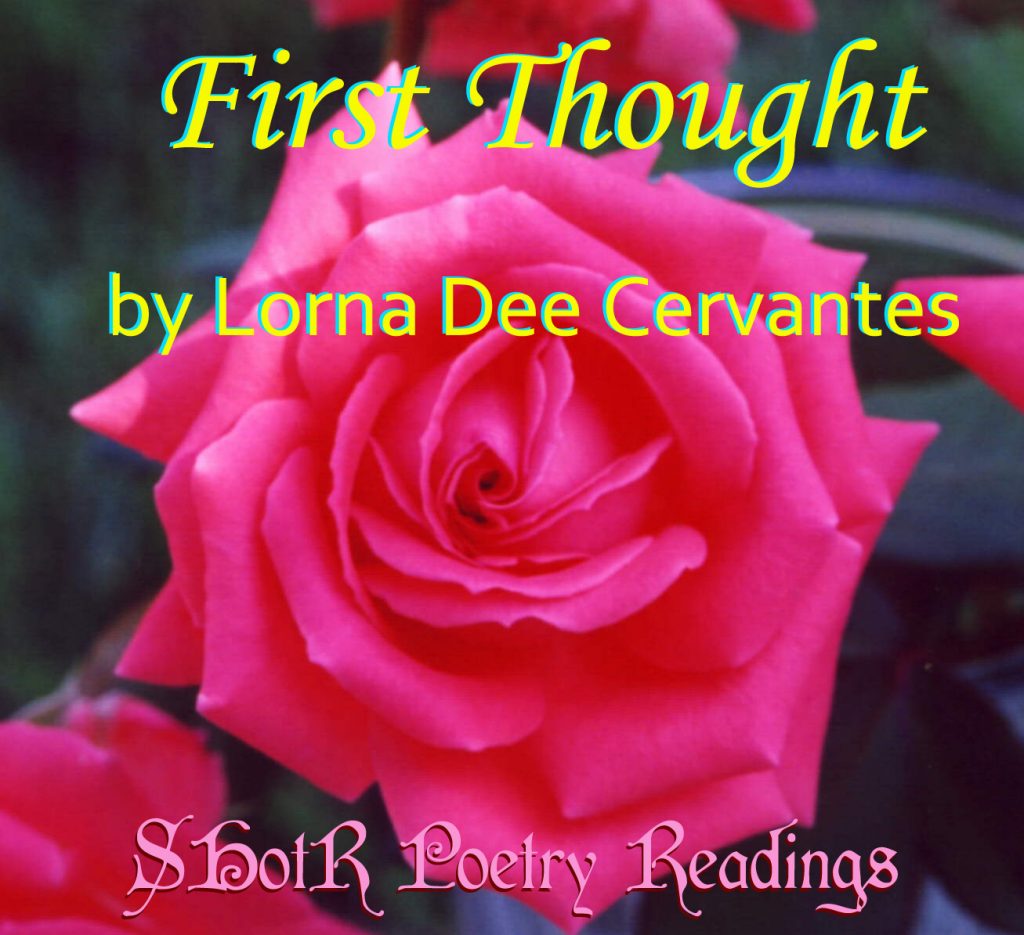
Lorna Dee Cervantes, “First Thought” from Sueño. Copyright © 2013 by Lorna Dee Cervantes. Source: Sueño (Wings Press, 2013)
Lorna Dee Cervantes (1954 – ) is a major voice in Chicana literature. Her writing evokes and explores cultural difference — between Mexican, Anglo, Native American, and African American lives — as well as the divides of gender and economics. Born in San Francisco in 1954 to Mexican and Native American ancestry, Cervantes was discouraged from speaking Spanish at home to protect her from the racism prevalent at that time. This loss of language and subsequent inability to fully identify with her heritage fueled her later poetry. When her parents divorced in 1959, Cervantes and her mother and brother moved in with her grandmother. Her brother had a job at a local library and she became familiar with Shakespeare, Keats, Shelley, and Byron, who would have the most influence on her self-conception as a poet. By the age of fifteen she had compiled her first collection of poetry. In 1974 she traveled to Mexico City with her brother, who played with the Theater of the People of San Jose at the Quinto Festival de los Teatros Chicanos. At the last moment, Cervantes was asked to participate by reading some of her poetry. She chose to read a portion of “Refugee Ship,” a poem that enacts the major dilemma of being Chicano — feeling adrift between two cultures. This reading received much attention and appeared in a Mexican newspaper, as well as other journals and reviews. The poem was later included in her award-winning debut, Emplumada (1981). The term Emplumada can be translated as a combination of “pen flourish” and “feathered,” and it ties poetry’s concern with beauty and myth to Cervantes’s own obsession with language. Cervantes’s use of Spanish in her first collection presaged the struggles over bilingualism that took place in the 1990s by presenting Spanish and English side-by-side, switching seamlessly from one to the other. Emplumada earned considerable critical acclaim and continues to be an important work in Chicana literature. In 1982 it won the American Book Award. Following Emplumada’s publication, Cervantes’ life was tragically transformed when her mother was brutally killed in 1982. This incident, and Cervantes’s subsequent mourning and rebuilding of her life, affected her next work, From the Cables of Genocide: Poems of Love and Hunger (1991). Cervantes’ Drive: The First Quartet (2006) is arranged as five books and collects work that had previously been available only in little magazines and literary journals. The book, along with Cervantes’ other recent collections such as Ciento: 100 100-Word Love Poems (2011) and Sueño (2013), demonstrates Cervantes’ ongoing concern with social injustice, radical politics, self-identity, and women-centered artistic and intellectual activity. Cervantes has been much anthologized — most notably in multiples volumes of the Norton Anthology — and has been the recipient of many honors and awards, including a Lila Wallace-Reader’s Digest Award, the Paterson Prize for Poetry and a Latino Literature Award. She is director of the creative writing program at the University of Colorado-Boulder.
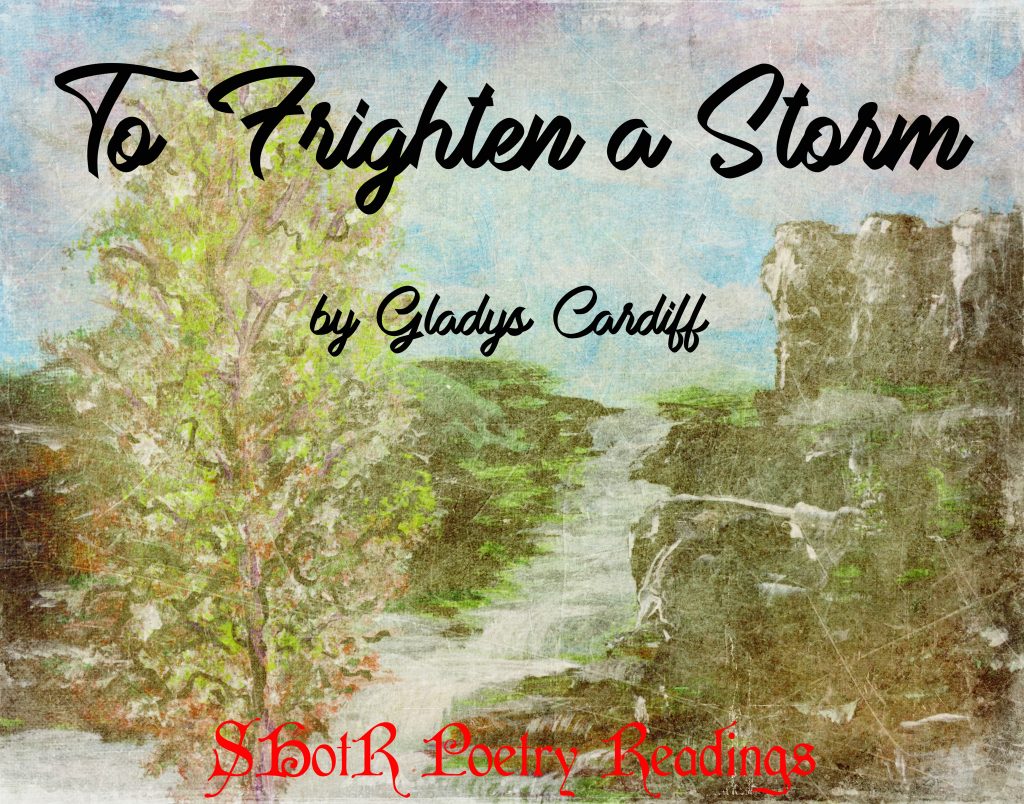
Gladys Cardiff, “To Frighten a Storm” from To Frighten a Storm. Copyright © 1976 by Gladys Cardiff. Source: To Frighten a Storm (Copper Canyon Press, 1976)
Gladys Cardiff (1942 – ) was born in Browning, Montana, and grew up in Seattle, Washington. She is a member of the Eastern Band of Cherokee. Her mother was of Irish and Welsh descent, her father a member of the Owl clan of the North Carolina Cherokee. Cardiff received an MFA from the University of Washington, where she studied with the poet Theodore Roethke, and a PhD in literature from Western Michigan University. Cardiff’s collections of poetry are To Frighten a Storm (1976), winner of the Washington State Governor’s First Book Award, and A Bare Unpainted Table (1999). Her poems have been anthologized in From the Belly of the Shark (1973), Carriers of the Dream Wheel (1981), Songs from This Earth on the Turtle’s Back (1983), Harper’s Anthology of 20th Century Native American Poetry (1988), and Reinventing the Enemy’s Language (1998). She has received prizes from the Seattle Arts Commission and currently teaches at Oakland University in Michigan.
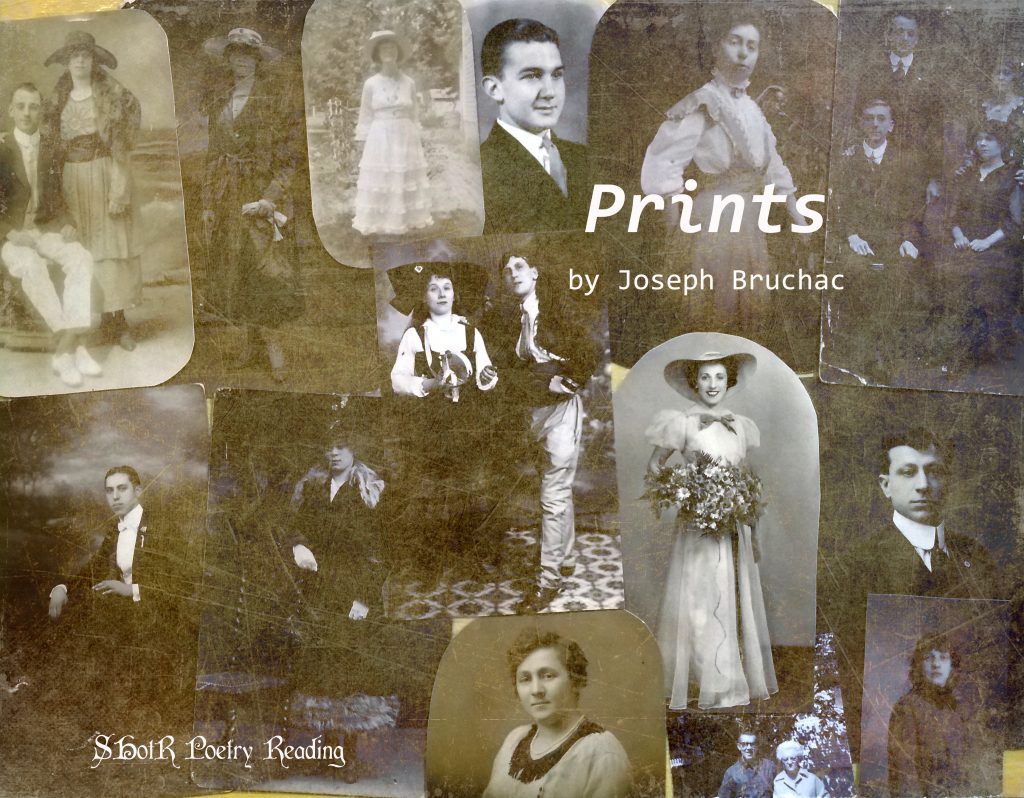
Joseph Bruchac, “Prints” from Sing: Poetry from the Indigenous Americas. Copyright © 2011 by Joseph Bruchac. Source: Sing: Poetry form the Indigenous Americas (University of Arizona Press, 2011)
Joseph Bruchac is a poet and storyteller, born in Greenfield Center, New York. He earned his BA from Cornell University, MA from Syracuse, and PhD in comparative literature from the Union Institute of Ohio. He is the author of more than 120 books for adults and children, including Tell Me a Tale: A Book About Storytelling (1997); The First Strawberries: A Cherokee Story (1993); Keepers of the Earth (1988), which he coauthored with Michael Caduto; his autobiography, Bowman’s Store: A Journey to Myself (1997); and novels for young readers such as Dawn Land (1993) and The Heart of a Chief (1998). In his work, Bruchac explores his Abenaki ancestry and Native American storytelling traditions. His honors and awards include fellowships from the Rockefeller Foundation and the National Endowment for the Arts, as well as a Cherokee Nation Prose Award, a Knickerbocker Award, a Hope S. Dean Award for Notable Achievement in Children’s Literature, and both Writer of the Year and Storyteller of the Year awards from the Wordcraft Circle of Native Writers and Storytellers. He also received a Lifetime Achievement Award from the Native Writers’ Circle of the Americas. Bruchac founded the Greenfield Review Literary Center and the Greenfield Review Press and has edited a number of anthologies of poetry and fiction, including Breaking Silence (1983), which won an American Book Award. Bruchac has performed across the United States and internationally and has been storyteller-in-residence for Native American schools, including the Institute of Alaska Native Arts and the Onondaga Nation School. He lives in the house where his maternal grandparents raised him, in Greenfield Center.
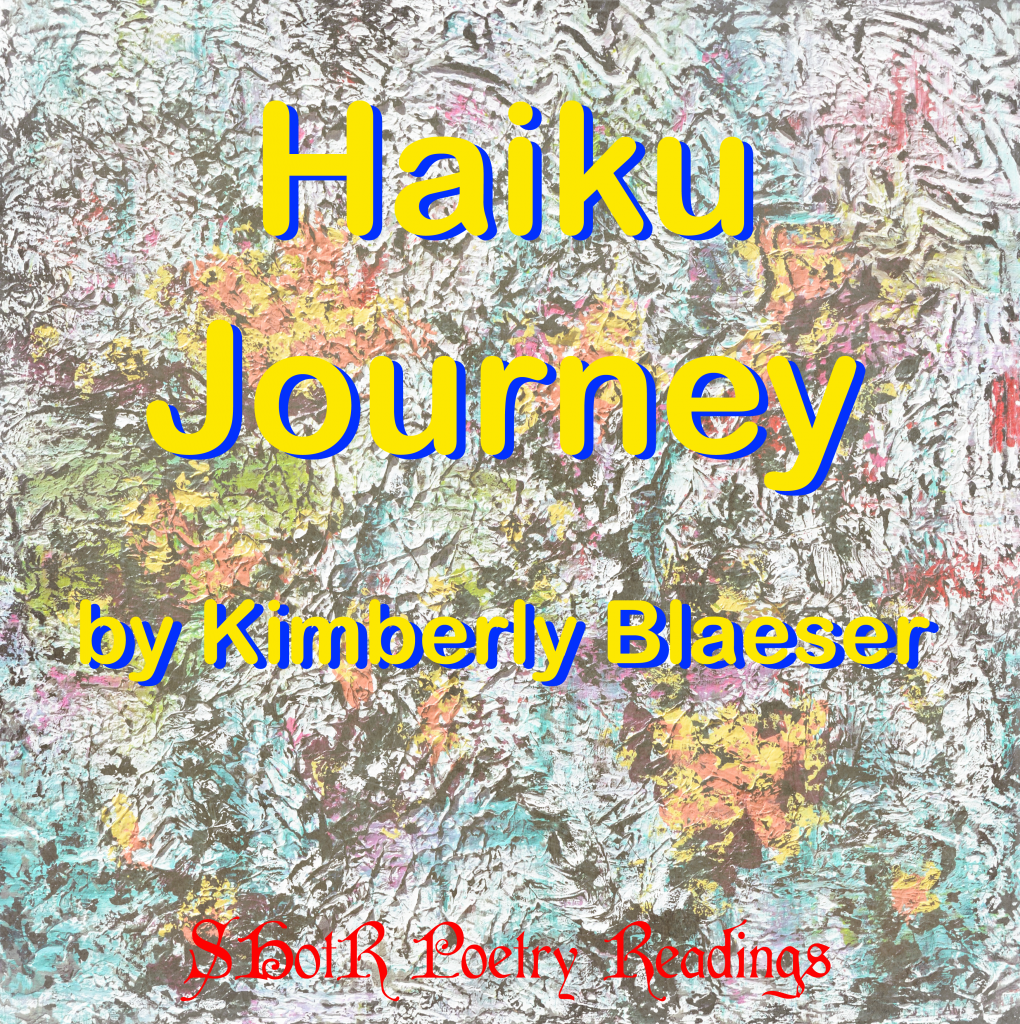
Kimberly Blaeser, Haiku Journey from Apprenticed to Justice. Copyright © 2007 by Kimberly Blaeser. Reprinted by permission of Salt Publishing. Source: Apprenticed to Justice (Salt Publishing, 2007)
Kimberly Blaeser (1955 – ) is a poet, photographer, scholar, and fiction writer. She is an enrolled member of the White Earth Nation and grew up on the reservation in northwestern Minnesota. Blaeser worked as a journalist before earning her PhD from the University of Notre Dame. She is currently a Professor at University of Wisconsin-Milwaukee, an MFA faculty member at the Institute of American Indian Arts in Santa Fe, and founding director of In-Na-Po (Indigenous Nations Poets). Blaeser’s poems embody her work as a naturalist, offer intimate glimpses into the lives of Native American life and culture, and exhibit a political activism that extends to current issues both tribal and global. She writes in hybrid forms that vary from extended narrative to haiku poems to concrete poetry and her work incorporates the Anishinaabe language. Her collections of poetry include Résister en dansant/Ikwe-niimi: Dancing Resistance (2020), Copper Yearning (2019), winner of the Edna Meudt Poetry Book Award, Apprenticed to Justice (2007), Absentee Indians and Other Poems (2002), and Trailing You (1994), which won the Native Writers’ Circle of the Americas First Book Award. She is also the author of a critical study on fellow White Earth writer Gerald Vizenor, titled Gerald Vizenor: Writing in the Oral Tradition (1996). Blaeser, who is a past Wisconsin Poet Laureate, has been recognized with various awards including a Lifetime Achievement Award from the Native Writers’ Circle of the Americas (2021), Notable Authors Award from the Wisconsin Library Association (2021), Wisconsin Academy Fellow Award (2020), Zona Gale Short Fiction Award (2020), Individual Artist Fellowship in Poetry from the Wisconsin Arts Board (2001). She has served on the editorial boards of Michigan State University’s American Indian Studies Series and the University of Nebraska Press’s Indian Lives Series. Blaeser’s photographs, picto-poems, and ekphrastic pieces have appeared in exhibits such as “Ancient Light,” “Visualizing Sovereignty,” and “Nomorestolensisters.” She lives in rural Wisconsin; and, for portions of each year, in a water-access cabin near the Boundary Waters Canoe Area Wilderness in Minnesota.

Sherwin Bitsui, “River” from Shapeshift. Copyright © 2003 by Sherwin Bitsui. Reprinted by permission of University of Arizona Press. This material is protected from unauthorized downloading and distribution. Source: Shapeshift (The University of Arizona Press, 2003)
Sherwin Bitsui (1975 –) is a Diné (Navajo) from the Navajo Reservation in White Cone, Arizona. He received an AFA from the Institute of American Indian Arts Creative Writing Program, and is the author of the poetry collections Shapeshift (2003) and Flood Song (2009). Steeped in Native American culture, mythology, and history, Bitsui’s poems reveal the tensions in the intersection of Native American and contemporary urban culture. His poems are imagistic, surreal, and rich with details of the landscape of the Southwest. Flood Song is a book-length lyric sequence that explores the traditions of Native American writing through postmodern fragment and stream of consciousness. Bitsui has received a Whiting Writers’ Award, a grant from the Witter Bynner Foundation for Poetry, a Truman Capote Creative Writing Fellowship, and a Lannan Literary Fellowship. He teaches at the Institute of American Indian Arts.

Esther Belin, “Bringing Hannah Home” from From the Belly of My Beauty. Copyright © 1999 by Esther Belin. Reprinted by permission of University of Arizona Press. Source: From the Belly of My Beauty (University of Arizona Press, 1999)
Esther Belin (1968 – ) is a Diné (Navajo) multimedia artist and writer, who grew up in Los Angeles, California. She is a graduate of the Institute of American Indian Arts and the University of California, Berkeley. Her first book of poetry, From the Belly of My Beauty (1999), won the American Book Award from the Before Columbus Foundation. She is also the author of the collection Of Cartography (2017). Belin’s parents were relocated from the Southwest in the 1950s as part of the federal Indian relocation policy, and her work reflects the experience of a Native American living in urban Los Angeles. She often addresses the attempts to assimilate Native Americans into mainstream American culture, as well as larger themes of racism, alienation, and substance abuse. In a 2000 interview for SAIL (Studies in American Indian Literatures), Belin stressed the connection between writing and the oral tradition. She elaborated: “I see myself as an interpreter of what happened in my parents’ generation, and I want to let people know about their experiences, especially with boarding schools and relocation. I see my books as an anthropological text — telling what it’s like for Native people.” Belin lives in Durango, Colorado with her husband and children.
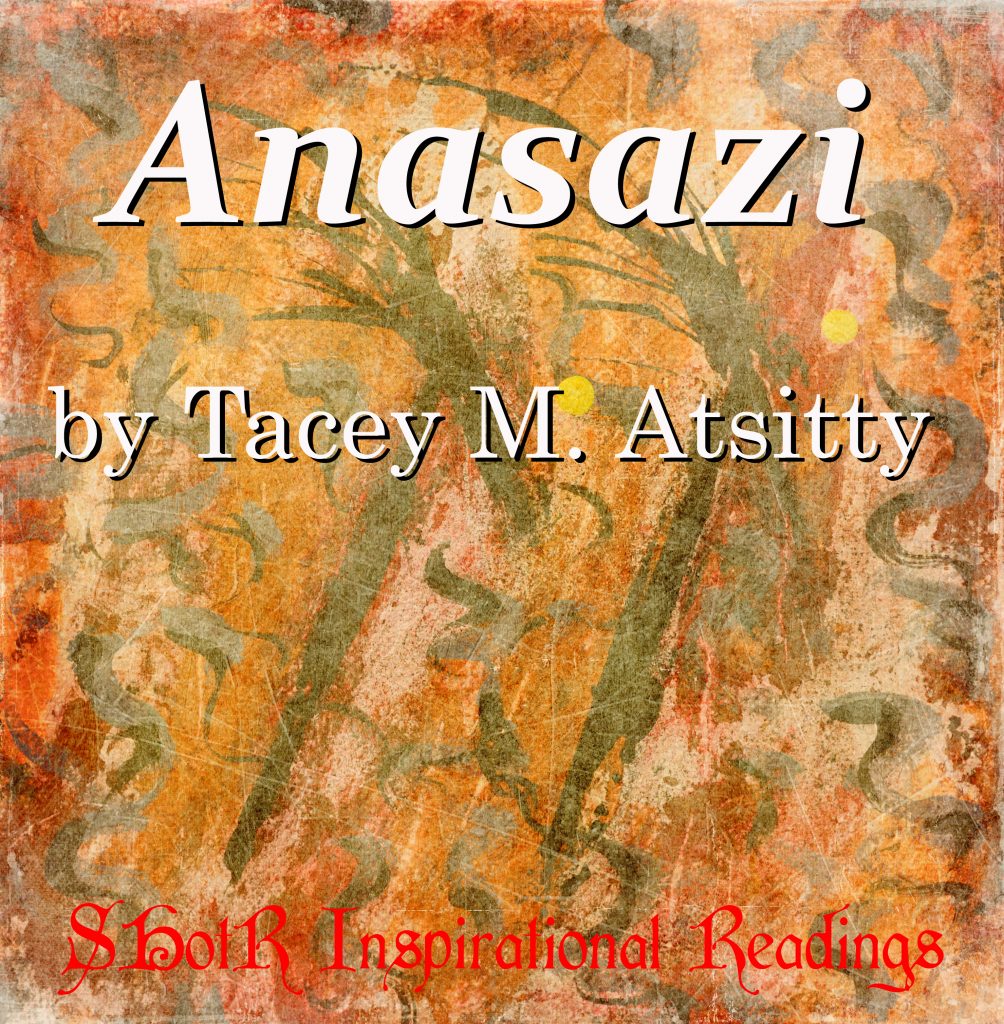
Tacey M. Atsitty (Diné) is Sleep Rock People and born for Tangle People. Her first book is Rain Scald (University of New Mexico Press, 2018).
Anasazi from Rain Scald. Copyright © 2018 by University of New Mexico Press. Reprinted by permission of University of New Mexico Press.
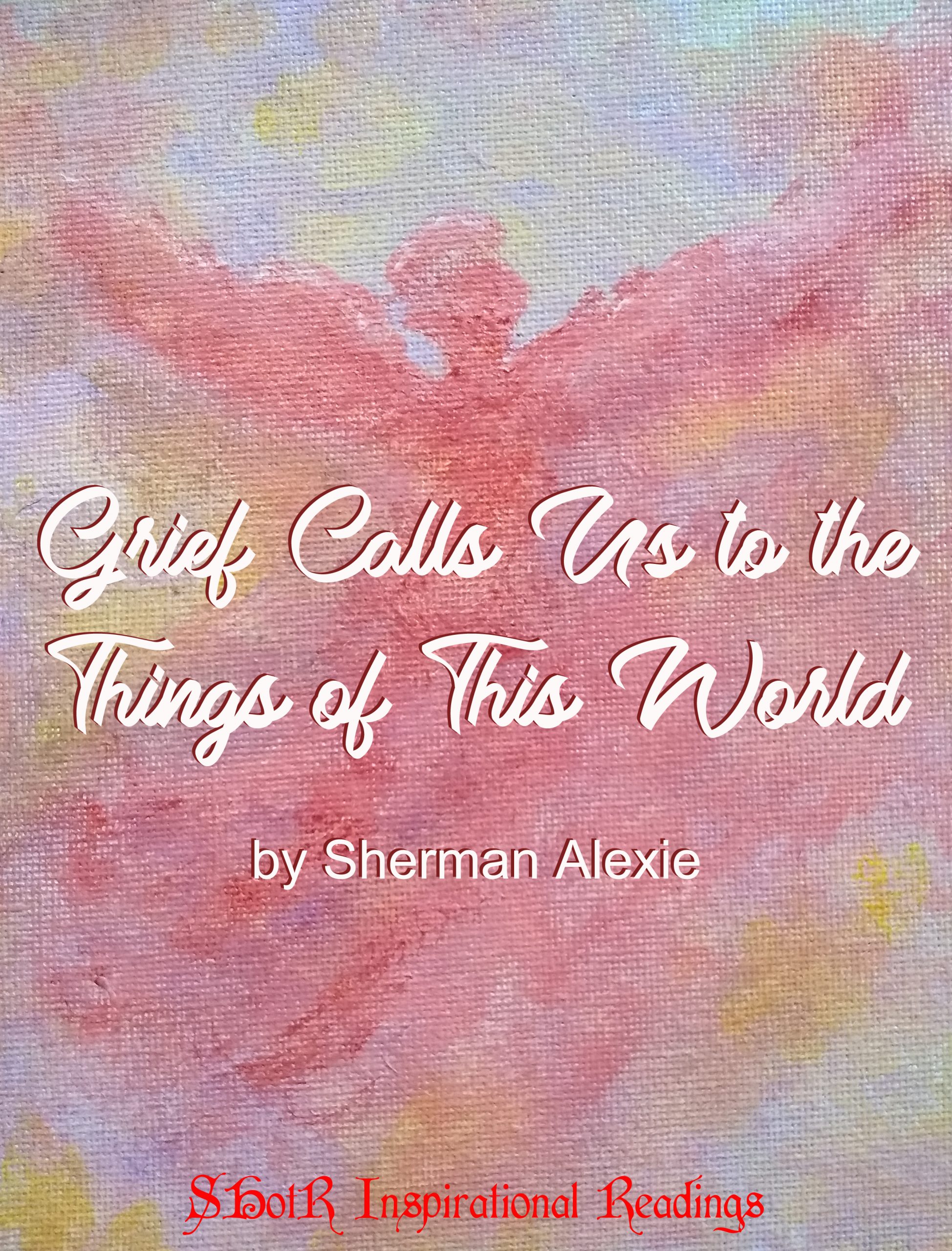
Sherman Alexie, “Grief Calls Us to the Things of This World” from Face. Copyright © 2009 by Sherman Alexie. Reprinted by permission of Hanging Loose Press. Source: Face (Hanging Loose Press, 2007)
Sherman Alexie is a preeminent Native American poet, novelist, performer, and filmmaker. He has garnered high praise for his poems and short stories of contemporary Native American reservation life, among them The Business of Fancydancing (1992), The Lone Ranger and Tonto Fist Fight in Heaven (1993), which won a PEN/Hemingway Award, and Smoke Signals (1998), a critically acclaimed movie based on one of Alexie’s short stories and for which he co-wrote the screenplay. Alexie held the World Heavyweight Poetry title for four years.
A Spokane/Coeur d’Alene tribal member, Alexie grew up on the Spokane Indian Reservation in Wellpinit, Washington. Alexie was born hydrocephalic and underwent an operation at six months of age; he was not expected to survive. Though he lived through the experience, he was plagued with seizures as a child and spent most of his childhood reading. In the eighth grade, he decided to attend Reardan High School, located twenty miles outside the reservation. His achievements in high school secured his admission to Spokane’s Jesuit Gonzaga University in 1985, where he had a successful academic career but began to abuse alcohol. Alexie transferred to Washington State University in 1987 and began writing poetry and short fiction. In 1990 Alexie’s work was published in Hanging Loose magazine, a success he has credited with giving him the incentive to quit drinking. He has remained sober ever since. In his short-story and poetry collections, Alexie illuminates the despair, poverty, and alcoholism that often shape the lives of Native Americans living on reservations, evoking sadness and indignation, yet also leaving readers with a sense of respect and compassion. Involved with crime, alcohol, or drugs, Alexie’s protagonists struggle to survive the constant battering of their minds, bodies, and spirits by white American society and their own self-hatred and sense of powerlessness. Alexie’s poetry is more self-conscious and ironic than his prose. A mix of narrative, formal innovation, and gorgeous lyricism, his poetry collections often contain extended prose pieces, as in The Business of Fancy-Dancing, First Indian on the Moon (1993), and One Stick Song (2000). His collection Face (2009) includes poems written in forms like the sestina and villanelle, as well meta-textual effects like extended footnotes and frame-breaking moments of self-awareness. Alexie has been the recipient of numerous awards and grants, including the 2009 Mason Award, the 2008 Stranger Genius Award, a Pushcart Prize, the PEN/Malamud Award, a National Endowment for the Arts Poetry Fellowship, and numerous honorary degrees. He is a highly sought-after public speaker and has been a guest on nationally-broadcast radio and TV programs like the McNeil-Lehrer Report, NOW with Bill Moyers, and the Colbert Report. He lives in Seattle, Washington with his wife and two sons.
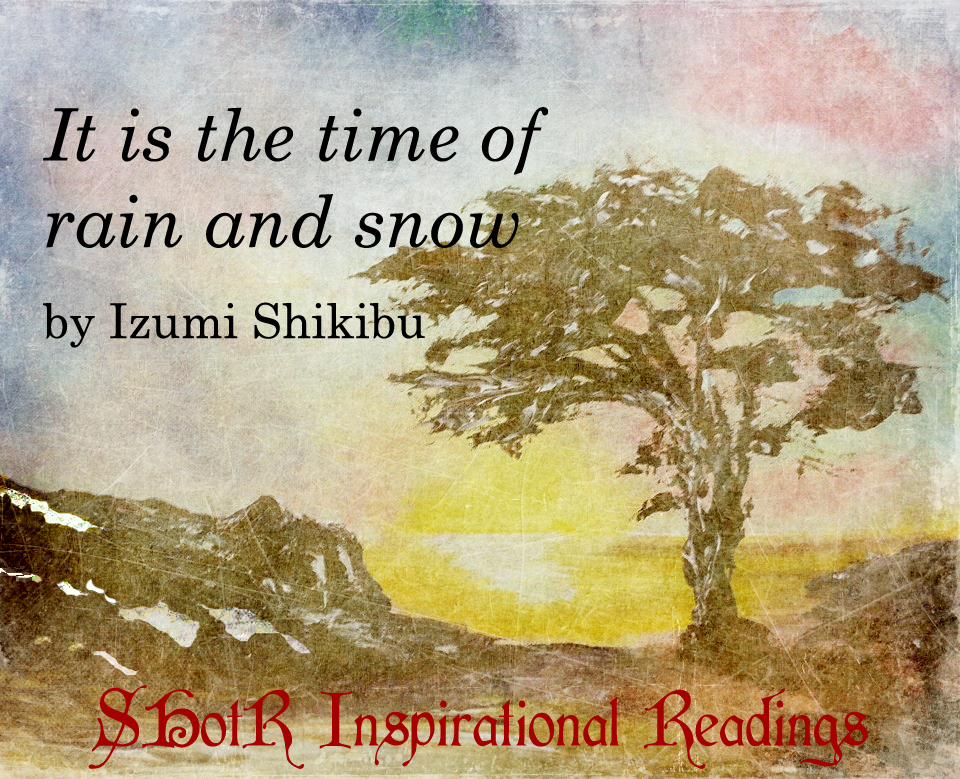
Izumi Shikibu (976 – 1030) is one of the greatest woman poets of the Heian period. As is standard for Heian period women, her name is a composite of Izumi from her husband’s charge and her father’s official designation of master of ceremony (shikibu). She is a member of the Thirty-six Medieval Poetry Immortals, and was a contemporary of Murasaki Shikibu and Akazome Emon at the court of empress Joto Mon’in. In 995, at the age of 20, Izumi was married to Tachibana no Michisada, governor of Izumi. Their daughter was born in 997, Koshikibu no Naishi, who also became a poet. However, Izumi soon divorced, and her former husband died soon afterwards. She had affairs at the imperial court in Kyoto, and before her marriage to Michisada, she is believed to have been the companion (some accounts say wife) of a man named Omotomaru at dowager Queen Shoko’s court. While still married to Michisada, she fell in love and had an affair with Emperor Reizei’s third son, Prince Tametaka, as a result of the scandal her husband divorced her and her family disowned her. The Eiga Monogatari implies that Tametaka fell ill and died because of his “continual nocturnal escapades.” After Tametaka’s death, she was courted by Prince Atsumichi, Tametaka’s brother. The first year of this affair is described in her semi-autobiographical Diary, written at the beginning of Izumi’s relationship with Prince Atsumichi and continues for about nine months (1003-1004). Written in a third person narrative, the diary contains waka poetry, with over one hundred poems including renga. The story told through the poems is one of alternating ardor and indifference on the part of the Prince and of timidity and yearning on the part of Izumi. Izumi then moved into Atsumichi’s residence, and the two had a public courtship until Atsumichi’s death in 1007 at the age of 27. Soon after, probably in 1009, Izumi joined the court of Fujiwara no Shōshi, who was the daughter of Fujiwara no Michinaga, and the consort of Emperor Ichijō. Her life of love and passion earned her the nickname of The Floating Lady (ukareme); the nickname came from Michinaga. Further testimony of the scandal caused by her successive affairs with the Princes Tametaka and Atsumichi are found in two historical tales (rekishi monogatari) about the period, A Tale of Flowering Fortunes (or Eiga Monogatari, c. mid-eleventh century), and The Great Mirror (Ōkagami, c. late eleventh century). Izumi’s important work is in the Izumi Shikibu Collection (Izumi Shikibu-shū) and imperial anthologies. While at the court in 1009, she married Fujiwara no Yasumasa (958-1036), a military commander under Michinaga. Yasumasa was famous for his bravery and Izumi left the court to accompany him to the Tango Province. She later devoted herself to Buddhism, donning Buddhist robes that she wore for the rest of her life. Her Dharma name was Seishin Insei Hōni. Izumi outlived her daughter Koshikibu no Naishi, but the year of Izumi’s death is unknown; the last Imperial correspondence from her was a poem written in 1027, and the Eiga Monogatari includes this poem.
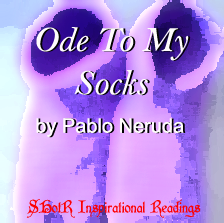
Pablo Neruda (1904 – 1973) was born Ricardo Eliecer Neftalí Reyes Basoalto in the town of Parral in southern Chile; his life was charged with poetic and political activity, and he is regarded as the greatest Latin American poet since Darío. In 1923, he sold all of his possessions to finance the publication of his first book, Crepusculario (Twilight), publishing the volume under the pseudonym Pablo Neruda to avoid conflict with his family, who disapproved of poetry as an occupation. In 1924, he found a publisher for Veinte poemas de amor y una cancion desesperada (Twenty Love Poems and a Song of Despair), the book that made a celebrity, and he gave up his studies, at the age of twenty, to devote himself to his craft. In 1927, Neruda began his long career as a diplomat, in the Latin American tradition of honoring poets with diplomatic assignments. After serving as honorary consul in Burma, in 1933 Neruda was named Chilean consul in Buenos Aires, Argentina. While there, he began a friendship with the visiting Spanish poet Federico García Lorca. After transferring to Madrid later that year, Neruda also met Spanish writer Manuel Altolaguirre. Together, in 1935 the two men founded a literary review called Caballo verde para la poesîa. The outbreak of the Spanish Civil War in 1936 interrupted Neruda’s poetic and political development, but he published from the war front, chronicling the horrendous war years (which saw the execution of his friend, García Lorca) in Espana en el corazon (1937). Neruda’s outspoken sympathy for the loyalist cause during the Spanish Civil War led to his recall from Madrid in 1937, and he moved to Paris and helped settle Spanish republican refugees in Chile. Neruda returned to Chile in 1938 and renewed his political activity and wrote prolifically. Named Chilean Consul to Mexico in 1939, Neruda left Chile again for four years. Upon returning to Chile in 1943, he was elected to the Senate and joined the Communist Party. When the Chilean government moved to the right, they declared communism illegal and expelled Neruda from the Senate. He went into hiding; during those years he wrote and published Canto general (1950). In 1952 the government withdrew the order to arrest leftist writers and political figures, and Neruda returned to Chile. He married Matilde Urrutia, his third wife (his first two marriages, to Maria Antonieta Haagenar Vogelzang and Delia del Carril, both ended in divorce). For the next twenty-one years, he continued a career that integrated private and public concerns and he became known as the people’s poet. Neruda received numerous prestigious awards, including the International Peace Prize in 1950, the Lenin Peace Prize and the Stalin Peace Prize in 1953, and the Nobel Prize for Literature in 1971. While serving a two-year term as ambassador to France, Neruda was diagnosed with cancer and resigned his position, ending his diplomatic career. On September 23, 1973, just twelve days after the defeat of Chile’s democratic regime, Neruda died in Santiago, Chile.
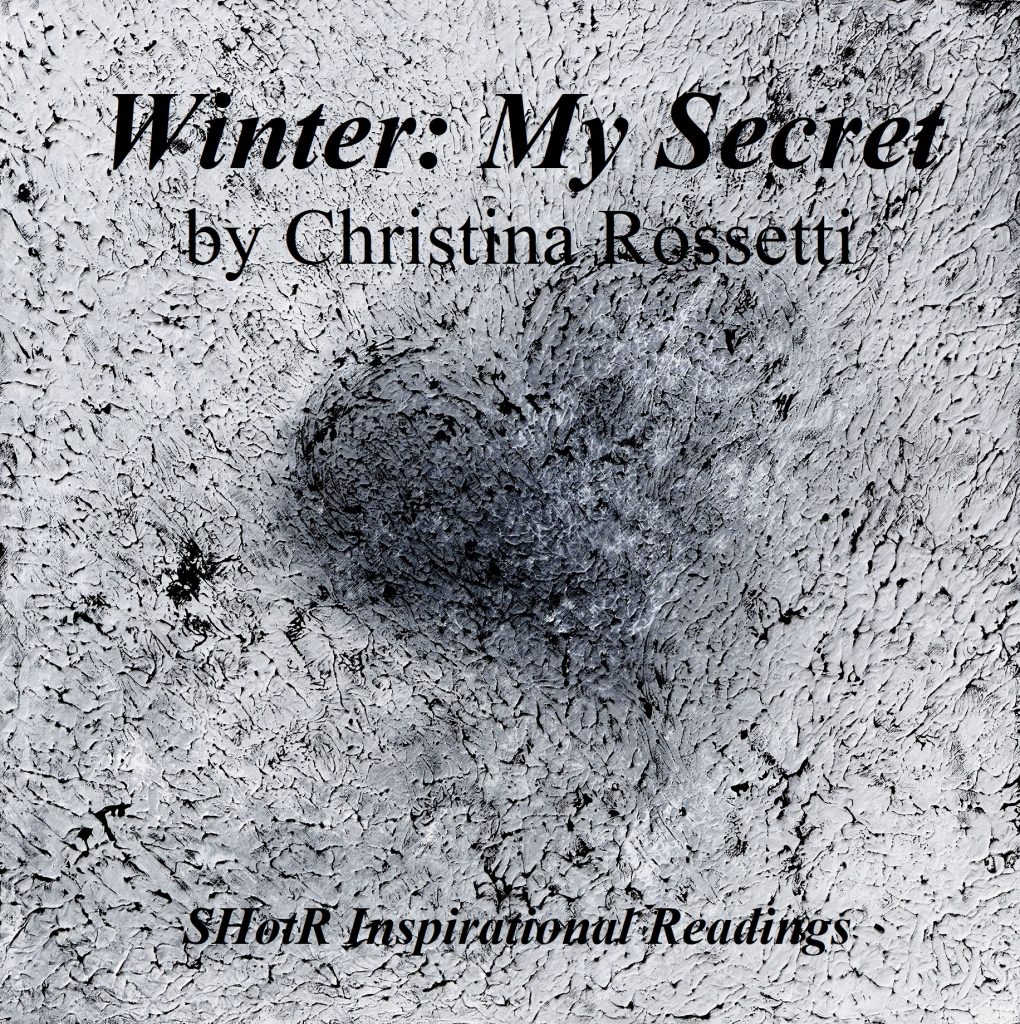
Christina Georgina Rossetti (5 December 1830 – 29 December 1894) was an English poet who wrote romantic, devotional, and children’s poems. She was born in London, one of four children of Italian parents. Rossetti’s parents were Gabriele Rossetti, a poet and a political exile from Italy, and Frances Polidori, the sister of Lord Byron’s friend and physician, John William Polidori. Rossetti had two brothers and a sister: brother Dante Gabriel became a poet and an influential artist; brother William Michael and Maria both became writers. When she was 14, Rossetti suffered a nervous breakdown and left school; she suffered henceforth from bouts of depression and related illnesses. It was during that time she, her mother, and her sister became absorbed in the Anglo-Catholic movement that developed in the Church of England, and religious devotion became important in Rossetti’s life. Rossetti published her first two poems (Death’s Chill Between, Heart’s Chill Between) in the Athenaeum in 1848, when she was 18. She was engaged three times: first in her late teens to the painter James Collinson; he, like her brothers Dante and William, was a founding members of the avant-garde artistic group, the Pre-Raphaelite Brotherhood (founded 1848), but their engagement was broken in 1850 when he reverted to Catholicism. Later, linguist Charles Cayley asked her to marry him, but she declined for religious reasons. Her third offer of marriage came from the painter John Brett, whom Rossetti also turned down. Rossetti’s first poems were written in 1842 and printed in her grandfather’s private press. In 1850, under the pseudonym Ellen Alleyne, she contributed seven poems to the Pre-Raphaelite journal The Germ, which had been founded by her brother William Michael and his friends. Rossetti is best known for her ballads and her mystic religious lyrics, and her poetry is marked by symbolism and intense feeling. Rossetti’s best-known work, Goblin Market and Other Poems, was published in 1862. The collection established Rossetti as a significant voice in Victorian poetry. The Prince’s Progress and Other Poems, appeared in 1866 followed by Sing-Song, a collection of verse for children, in 1872 (with illustrations by Arthur Hughes). Rossetti was diagnosed with Graves’ disease in 1872, after suffering a near-fatal attack in the early 1870s. By the 1880s, the illness restricted her social life, but she continued to write poems, compiled in later works such as A Pageant and Other Poems (1881). Rossetti also wrote religious prose works, such as Seek and Find (1879), Called To Be Saints (1881) and The Face of the Deep (1892). Rossetti’s brother, William Michael, edited her collected works in 1904 (but the Complete Poems were not published before 1979). Rossetti’s more critical reflections on the artistic movement, initiated by her brother Dante Gabriel, began with her 1856 poem In the Artist’s Studio, in which she reflects on seeing multiple paintings of the same model. Rossetti sat for several of her brother Dante Gabriel’s most famous paintings: in 1848, she was the model for the Virgin Mary in his first completed oil painting, The Girlhood of Mary Virgin, which was the first work he inscribed with the initials PRB to signify the Pre-Raphaelite Brotherhood. In 1849 Rossetti modelled for her brother’s two paintings, the Annunciation and Ecce Ancilla Domini. A line from her poem Who shall deliver me? inspired the famous painting by Fernand Khnopff called I lock my door upon myself. In 1849 she became seriously ill again, suffering from depression. Rossetti was a volunteer worker from 1859 to 1870 at the St Mary Magdalene house of charity in Highgate, a refuge for former prostitutes (some scholars suggest that Goblin Market might have been inspired by the “fallen women” she came to know there). Scholars have found feminist themes in her poetry, but in life, Rossetti was ambivalent about women’s suffrage, but she opposed slavery (in the American South), cruelty to animals (in the prevalent practice of animal experimentation), and the exploitation of girls in under-age prostitution. Sometime around 1857 she had a major religious crisis. Rossetti continued to write and publish for the rest of her life, focusing mainly on devotional writing and children’s poetry. In 1892, she wrote The Face of the Deep, a book of devotional prose, and the next year Rossetti oversaw publication of a new and enlarged edition of Sing-Song. She developed breast cancer in 1893, and the tumor was removed; there was a recurrence in September 1894. Rossetti died on 29 December 1894, in Torrington Square, Bloomsbury (London); the location is marked with a stone tablet. She is buried in Highgate Cemetery in north London.
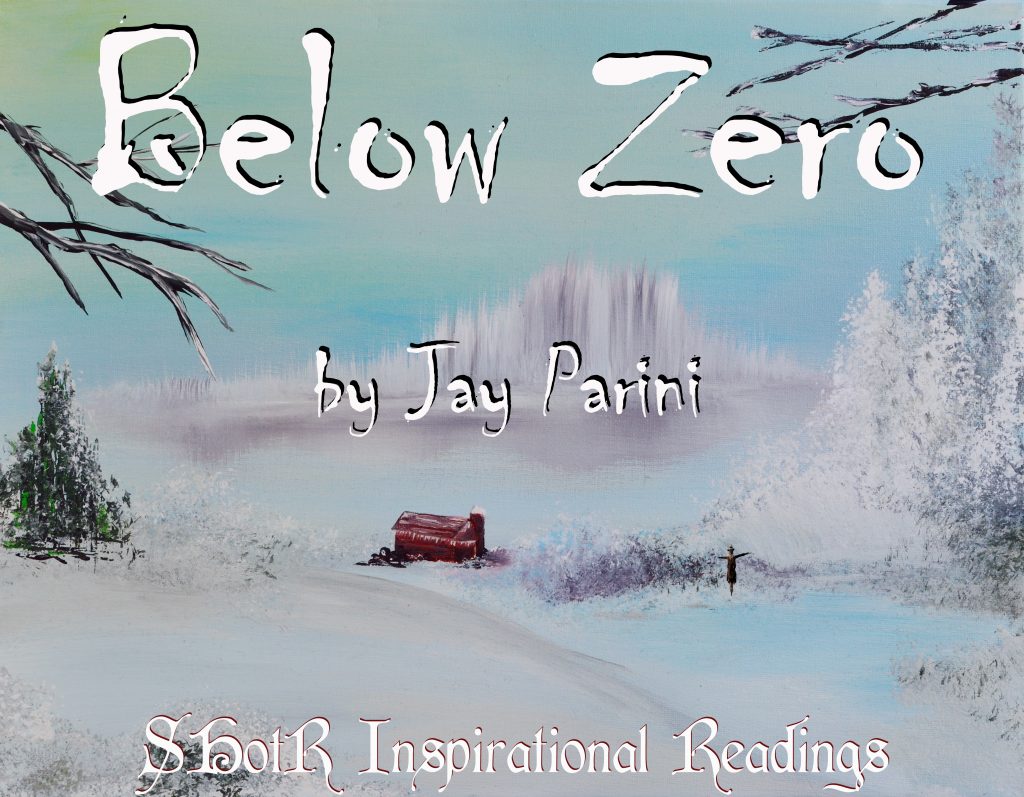
Jay Parini (1948 – ) was born in Pittston, Pennsylvania, and was raised in Scranton. He earned his AB in 1970 from Lafayette College in Easton, Pennsylvania. During his junior year, he studied abroad at the University of Saint Andrews, Scotland. Immediately returned after he graduated from Lafayette, Parini returned to the University of Saint Andrews to earn his PhD in 1975. During his time at the University of Saint Andrews, he began writing poetry. He published his first book of poems, Singing in Time (J. W. B. Laing, 1972), when he was a student there. In 1975, Parini returned to the United States and began his academic career as an assistant English professor and director of the creative writing program at Dartmouth College in Hanover, New Hampshire. Two years later, he cofounded the New England Review with Sydney Lea. He later moved to Vermont, where he began his tenure as D. E. Axinn Professor of English and Creative Writing at Middlebury College in 1982. Parini’s poetry collections include New and Collected Poems: 1975–2015 (Beacon Press, 2015), The Art of Subtraction: New and Selected Poems (Braziller, 2005), House of Days (Henry Holt, 1998), Town Life (Henry Holt, 1988), and Anthracite Country (Random House, 1982). Parini is also a novelist, biographer, editor, and critic, and has written biographies of John Steinbeck, Robert Frost, and William Faulkner. His most recent novels include The Passages of H. M.: A Novel of Herman Melville (Doubleday, 2010), The Apprentice Lover (Harper Perennial, 2003), Benjamin’s Crossing (Holt, 1996), and The Last Station (Holt, 1990, adapted into an Oscar-nominated film). He has received honorary degrees from Lafayette College and the University of Scranton, and fellowships from Christ Church at Oxford University, the John Simon Guggenheim Memorial Foundation, and the School of Advanced Study (Institute of English Studies) at the University of London. Parini currently teaches at Middlebury College and lives with his wife in Weybridge, Vermont.

Naomi Shihab Nye (1952 – ) was born in St. Louis, Missouri, to a Palestinian father and an American mother. During her high school years, she lived in Ramallah in Palestine, the Old City in Jerusalem, and San Antonio, Texas, where she later received her BA in English and world religions from Trinity University. Nye is the author of numerous books of poems, most recently Cast Away: Poems for Our Time (Greenwillow Books, 2020). Other books of poetry include The Tiny Journalist (BOA Editions, 2019); Voices in the Air: Poems for Listeners (Greenwillow Books, 2018); Transfer (BOA Editions, 2011); You and Yours (BOA Editions, 2005, which received the Isabella Gardner Poetry Award), and 19 Varieties of Gazelle: Poems of the Middle East (Greenwillow Books, 2002, a collection of new and selected poems about the Middle East). Nye is also the author of several poetry and fiction books for children, including Habibi (Simon Pulse, 1997), which received the Jane Addams Children’s Book award in 1998. Nye gives voice to her experience as an Arab-American in poems about heritage and peace that have a humanitarian spirit. Her poems and short stories have appeared in various journals and reviews throughout North America, Europe, and the Middle and Far East. She has traveled to the Middle East and Asia for the United States Information Agency three times, promoting international goodwill through the arts. Nye’s honors include awards from the International Poetry Forum and the Texas Institute of Letters, the Carity Randall Prize, the National Book Critics Circle Lifetime Achievement Award, and four Pushcart Prizes. She has been a Lannan Fellow, a Guggenheim Fellow, and a Witter Bynner Fellow. In 1988, she received the Academy of American Poets’ Lavan Award, judged by W. S. Merwin. Nye served as a Chancellor of the Academy of American Poets from 2010 to 2015, and is the Poetry Foundation’s Young People’s Poet Laureate from 2019-2021. Nye currently lives in San Antonio, Texas.
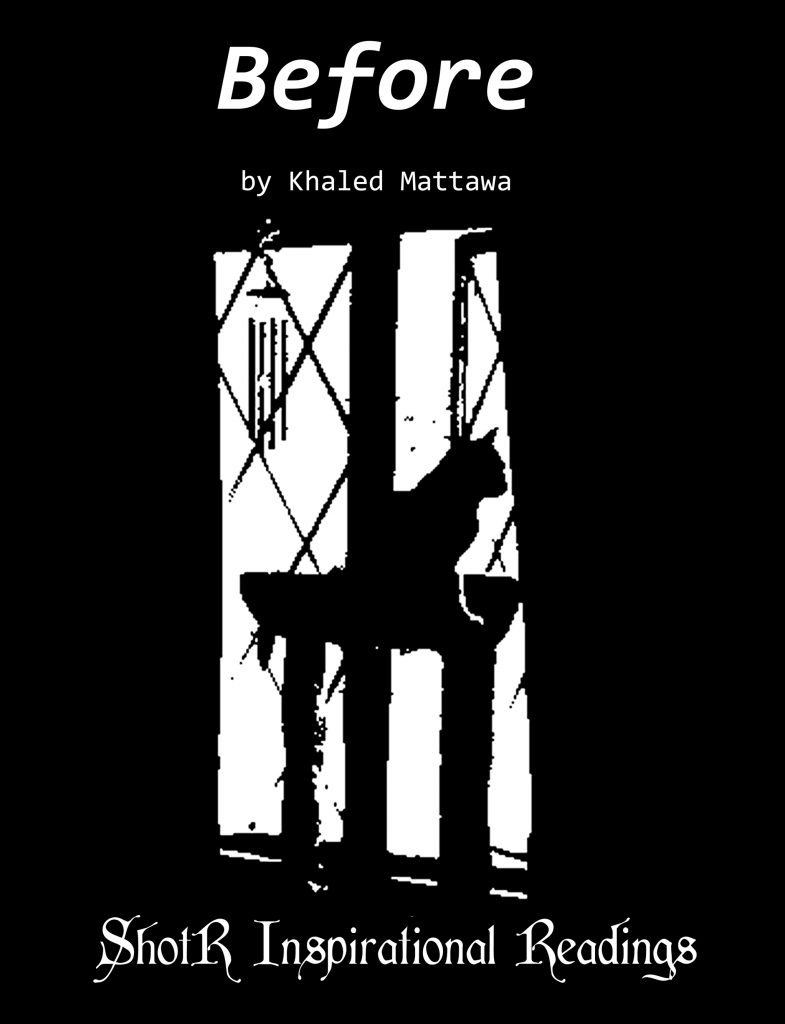
Khaled Mattawa (1964 – ) was born in Benghazi, Libya and immigrated to the United States in his teens. Mattawa received a BA in political science and economics from the University of Tennessee at Chattanooga, then earned an MA in English and an MFA in creative writing from Indiana University and a PhD from Duke University in 2009. His collections of poetry include Fugitive Atlas (Graywolf Press, 2020), Tocqueville (New Issues, 2010), Amorisco (Ausable, 2008), Zodiac of Echoes (Ausable, 2003), and Ismailia Eclipse (Sheep Meadow Press, 1995). Mattawa is also the author of the chapbook collection Mare Nostrum (Sarabande Books, 2019) and Mahmoud Darwish: The Poet’s Art and His Nation (Syracuse University Press, 2014). Mattawa has translated volumes of contemporary Arabic poetry and coedited two anthologies of Arab American literature. Translation include Adonis: Selected Poems (Yale University Press, 2010), Invitation to a Secret Feast by Joumana Haddad (Tupelo Press, 2008), A Red Cherry on A White-Tile Floor by Maram Al-Massri (Copper Canyon Press, 2007), Miracle Maker, Selected Poems of Fadhil Al-Azzawi (BOA Editions, 2004), and Without An Alphabet, Without A Face: Selected Poems of Saadi Youssef (Graywolf Press, 2002). Mattawa is the 2010 recipient of the Academy of American Poets Fellowship, and has received a Guggenheim fellowship, a translation grant from the National Endowment for the Arts, the Alfred Hodder Fellowship from Princeton University, the PEN American Center Poetry Translation Prize, three Pushcart Prizes, and a MacArthur Fellowship. Mattawa is a Chancellor Emeritus (2014-2020) at the University of Michigan, Ann Arbor, and teaches in the graduate creative writing program.
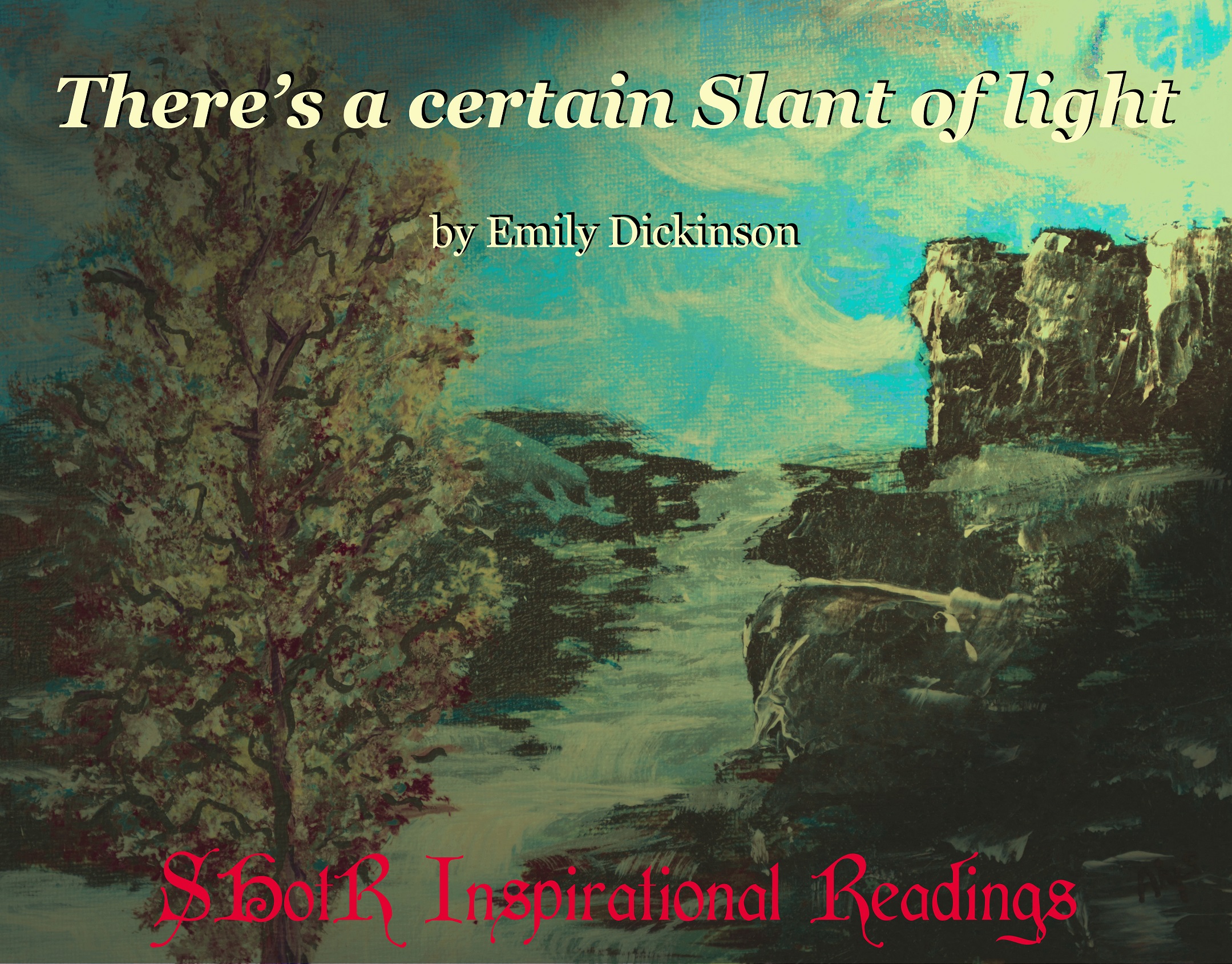
Emily Elizabeth Dickinson (December 10, 1830 – May 15, 1886) was an American poet, born in Amherst, Massachusetts. Dickinson lived much of her life in isolation and was thought of as an eccentric by locals. She never married, and the friendships she fostered depended entirely upon written correspondence. Dickinson also suffered from depression; she revealed the extent of her depression to a friend after one of her mentors passed away: . . . some of my friends are gone, and some of my friends are sleeping – sleeping the churchyard sleep – the hour of evening is sad – it was once my study hour – my master has gone to rest, and the open leaf of the book, and the scholar at school alone, make the tears come, and I cannot brush them away; I would not if I could, for they are the only tribute I can pay the departed . . . Dickinson was a prolific writer, but her only one letter and only 10 of her nearly 1,800 poems were published during her lifetime. Her poems explore aesthetics, society, nature, spirituality, death, and immortality. After her death in 1886, Lavinia Dickinson (Emily’s younger sister) discovered Dickinson’s cache of poems, and her work became public. A 1998 New York Times article revealed the name Susan was often deliberately removed from Dickinson’s poems, and that at least eleven poems were originally dedicated to her sister-in-law, Susan Huntington Gilbert Dickinson. A complete and mostly unaltered collection of her poetry became available for the first time when scholar Thomas H. Johnson published The Poems of Emily Dickinson in 1955.
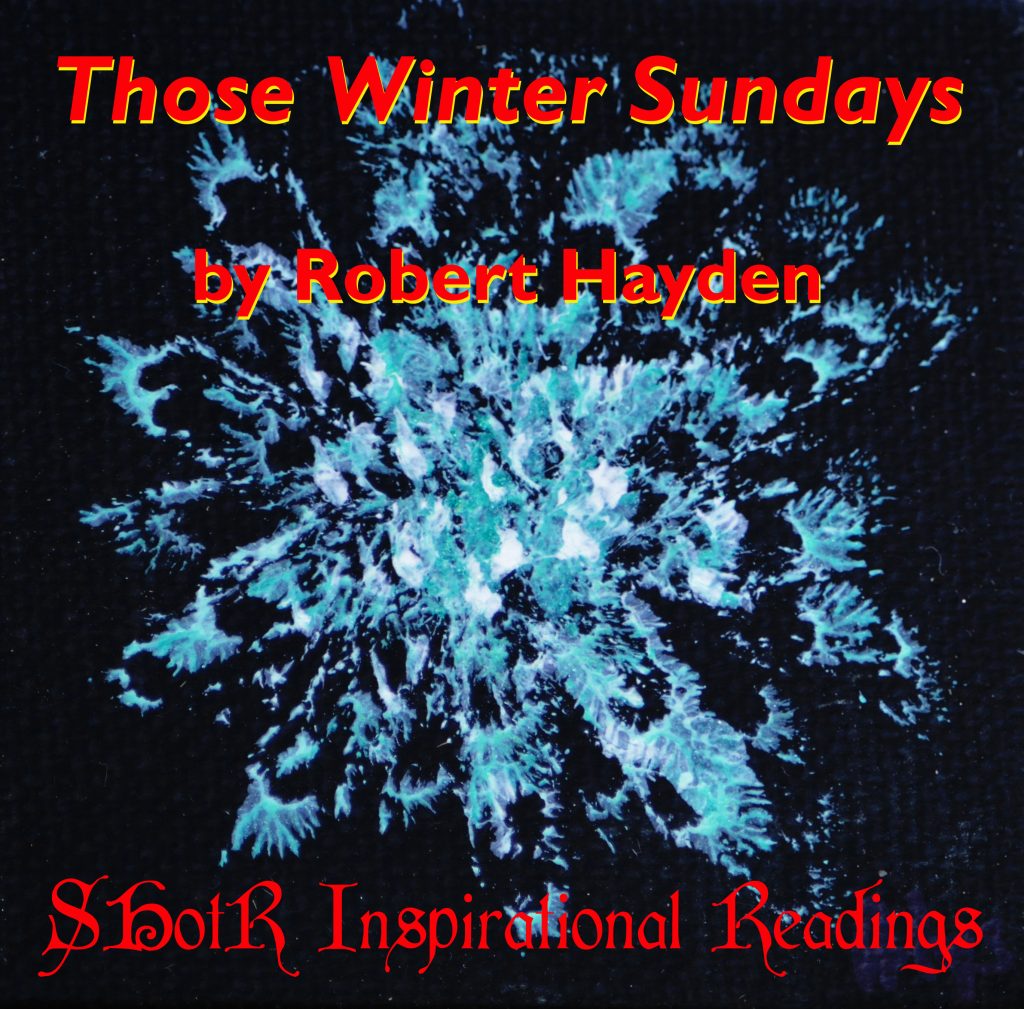
Robert Hayden (04 August 1913 – 25 February 1980) was an American poet, essayist, and educator. He served as Consultant in Poetry to the Library of Congress from 1976 to 1978, a role today known as US Poet Laureate; Hayden was the first African-American writer to hold the office. Robert Hayden was born Asa Bundy Sheffey in Detroit, Michigan, to Ruth and Asa Sheffey, who separated before his birth. He was taken in by a foster family next door, Sue Ellen Westerfield and William Hayden, and grew up in a Detroit ghetto nicknamed Paradise Valley. The Haydens’ perpetually contentious marriage and Ruth Sheffey’s competition for Hayden’s affections made for a traumatic childhood. He witnessed fights and suffered beatings, and lived in a house fraught with chronic anger, the effects of which would stay with him throughout his life. Hayden also had severe visual problems that prevented him from participating in sports activities in which nearly everyone around him was involved. His childhood traumas resulted in debilitating bouts of depression that he later called “my dark nights of the soul”. Because he was nearsighted and slight of stature, he was often ostracized by his peers. In response, Hayden read voraciously, developing both an ear and an eye for transformative qualities in literature. He attended Detroit City College (later called Wayne State University) with a major in Spanish and minor in English, but left in 1936 during the Great Depression, one credit short of finishing his degree, to go to work for the Works Progress Administration Federal Writers’ Project, where he researched black history and folk culture. Leaving the Federal Writers’ Project in 1938, Hayden married Erma Morris in 1940; Erma was a pianist and composer and served as supervisor of music for Nashville public schools. Raised as a Baptist, he followed his wife into the Baháʼí Faith during the early 1940s, and they raised their daughter, Maia, in the religion. Hayden published his first volume, Heart-Shape in the Dust (1940), and enrolled at the University of Michigan in 1941 where he won a Hopwood Award. Hayden became one of the best-known Baháʼí poets. In pursuit of a master’s degree, Hayden studied under W. H. Auden. Auden’s influence may be seen in the technical pith of Hayden’s verse. After finishing his degree in 1942, then teaching several years at Michigan, Hayden went to Fisk University in 1946, where he remained for twenty-three years, returning to Michigan in 1969 to complete his teaching career. Concurrent with his teaching responsibilities at Fisk, he served as poet-in-residence at Indiana State University in 1967 and visiting poet at the University of Washington in 1969, the University of Connecticut in 1971, Dennison University in 1972, and Connecticut College in 1974. As a supporter of his religion’s teaching of the unity of humanity, Hayden could never embrace Black separatism, thus the title poem of Words in the Mourning Time ends in a stirring plea in the name of all humanity:
Reclaim now, now renew the vision of
a human world where godliness
is possible and man
is neither gook nigger honkey wop or kike
but man
permitted to be man.
Hayden’s work often addressed the plight of Black Americans, usually with his former home of Paradise Valley slum as a backdrop, as in the poem Heart-Shape in the Dust. He made ready use of black vernacular and folk speech, and he wrote political poetry as well, including a sequence on the Vietnam War. Throughout his life, though, Hayden asserted that he needed to be viewed as an American poet as opposed to a Black poet, which caused some Black activists to refer to him as an abstract “Uncle Tom” during the 1960s. On April 7, 1966, Hayden’s Ballad of Remembrance was awarded, by unanimous vote, the Grand Prize for Poetry at the first World Festival of Negro Arts in Dakar, Senegal; the festival had more than ten thousand people from thirty-seven nations in attendance. However, on April 22, 1966, Hayden was denounced at a Fisk University conference of Black writers by a group of young protest poets led by Melvin Tolson for refusing to identify himself as a black poet. In the 1970s, he was awarded honorary degrees by Brown University (1976) and Fisk (1978). Hayden was elected to the American Academy of Poets in 1975. In January 1980, he was among the luminaries honored by President Jimmy Carter and his wife at a White House reception celebrating American poetry. His most famous poem is Those Winter Sundays, about loneliness and the memory of fatherly love. It ranks among the most anthologized American poems of the twentieth century. Other famed poems include The Whipping“( about a small boy being severely punished for some undetermined offense), Middle Passage (inspired by the events surrounding the United States v. The Amistad affair), Runagate, Runagate, and Frederick Douglass. Hayden is praised for his crafting of poems, his unique perspectives, his exact language, and his absolute command of traditional poetic techniques and structures. Hayden is also known as a nature poet and is included in the anthology Black Nature: Four Centuries of African American Nature Poetry. His poem, A Plague of Starling, is one of the more famous of his nature-based poems. Hayden died in Ann Arbor, Michigan, on 25 February 1980 at the age of 66. In 2012, the U.S. Postal Service issued a pane of stamps featuring ten great Twentieth Century American Poets, among whom included Hayden.

Juliana Gray is the author of three poetry collections, including Honeymoon Palsy (Measure Press, 2017), Roleplay (Dream Horse Press, 2009, which won the 2010 Orphic Prize and the 2013 Eugene Paul Nassar Poetry Prize for the best annual poetry collection published by an upstate New York author), and The Man Under My Skin (River City Publishing, 2005). Her first big poetry break was her chapbook History in Bones, which won the Wick Chapbook competition from Kent State University Press in 2001, when she was a graduate student. Gray’s more recent chapbook, Anne Boleyn’s Sleeve (Winged City Chap Books, 01 January 2014), won the 2013 Winged City Chapbook Press Poetry Prize. Anne Boleyn’s Sleeve came out a project Gray worked on during her Fall 2012 sabbatical and is a series of persona poems written in the voice of Anne Boleyn. Her poems have appeared in Best American Poetry, Birmingham Poetry Review, Sou’wester, 32 Poems, and other journals and anthologies. An Alabama native, she lives in Alfred, New York, where she is a professor of English at Alfred University.
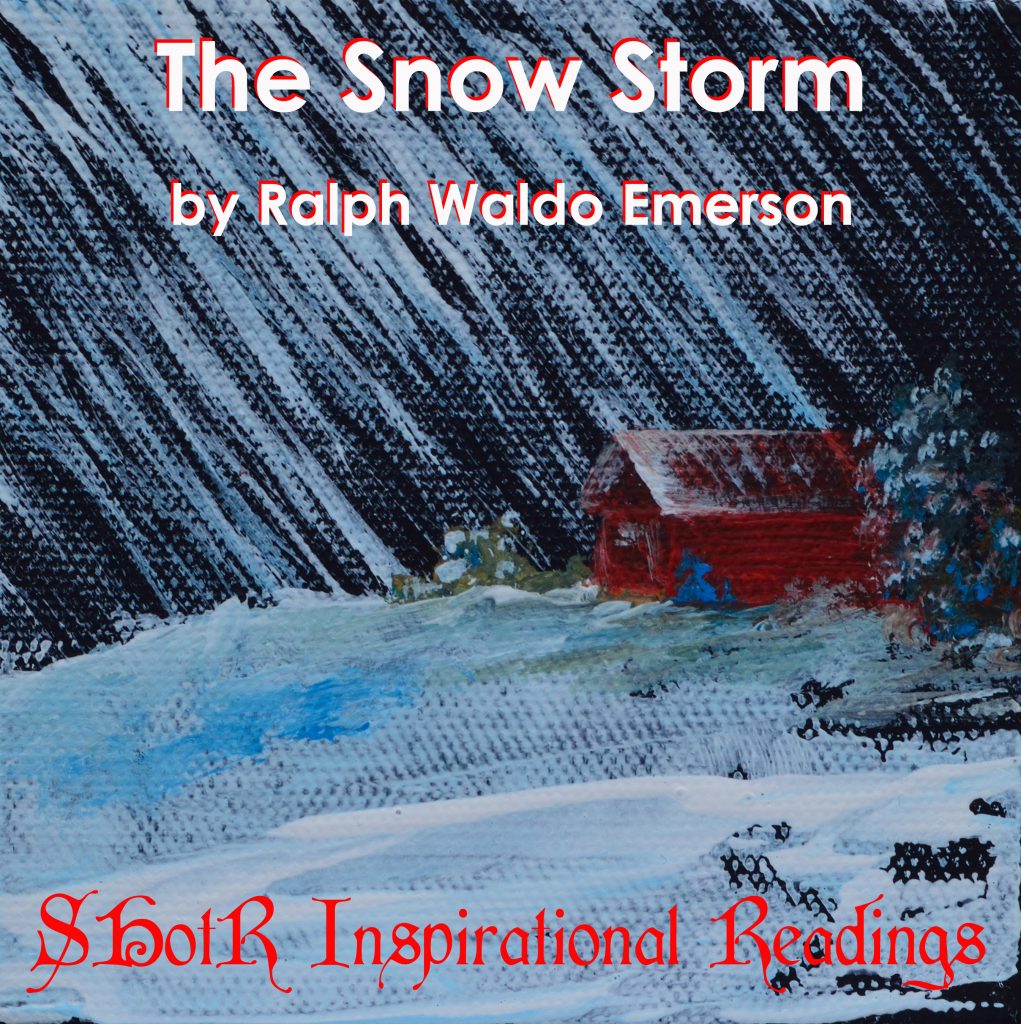
Ralph Waldo Emerson (25 May 1803 – 27 April 1882) was an American essayist, lecturer, philosopher, abolitionist, and poet who led the transcendentalist movement of the mid-19th Century. He was seen as a champion of individualism and a prescient critic of the countervailing pressures of society. Emerson shared his thoughts through dozens of published essays and more than 1,500 public lectures across the United States. He remains among the linchpins of the American romantic movement, and his work has greatly influenced the thinkers, writers and poets that followed him. “In all my lectures,” he wrote, “I have taught one doctrine, namely, the infinitude of the private man.” Emerson was well known as a mentor to and friend of fellow transcendentalist Henry David Thoreau. Twice married and the father of four children, Emerson may have had erotic thoughts about at least one man: during his years at Harvard, he found himself attracted to a young freshman named Martin Gay about whom he wrote sexually charged poetry. In the summer of 1858, Emerson created his Philosophers Camp at Follensbee Pond in the Adirondacks wilderness of upstate New York. Invited to connect with nature, nine illustrious intellectuals joined him there: Louis Agassiz, James Russell Lowell, John Holmes, Horatio Woodman, Ebenezer Rockwell Hoar, Jeffries Wyman, Estes Howe, Amos Binney, and William James Stillman. Also invited (but unable to come for various reasons) were Oliver Wendell Holmes, Henry Wadsworth Longfellow, and Charles Eliot Norton. Emerson also had several romantic relationships with women throughout his life, including Anna Barker and Caroline Sturgis. In 1867, Emerson was elected as a member to the American Philosophical Society. On April 21, 1882, Emerson was found to be suffering from pneumonia. He died six days later, and is buried in Sleepy Hollow Cemetery, Concord, Massachusetts. Emerson was placed in his coffin wearing a white robe given by the American sculptor Daniel Chester French.
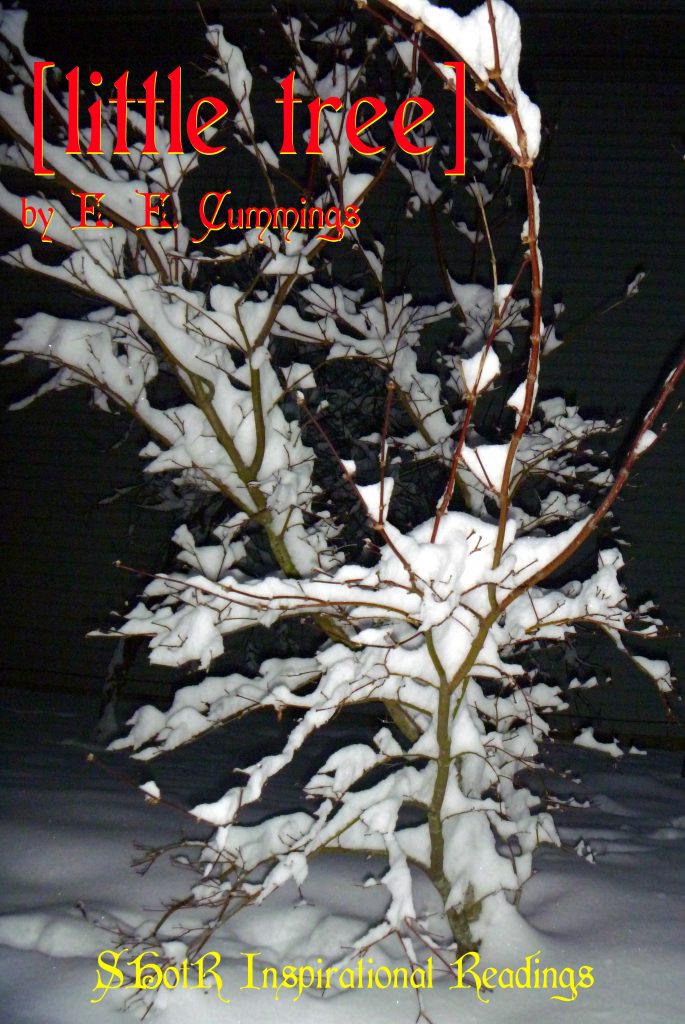
Today’s reading is dedicated with love to poet & author Radka Caviness (02 January 1939 – 08 July 2017).
Edward Estlin “E. E.” Cummings (October 14, 1894 – September 3, 1962), often styled as e e cummings, was an American poet, painter, essayist, author, and playwright. He wrote approximately 2,900 poems, two autobiographical novels, four plays, and several essays. Often considered as one of the most important American poets of the 20th century, Cummings is associated with modernist free-form poetry, and use of idiosyncratic syntax and lower-case spellings. Cummings’ poems include controversial subject matter, including eroticism and ethnic slurs; he stated his work pointed out prejudices but did not condon them. Cummings died of a stroke on September 3, 1962, at the age of 67 in New Hampshire. He is buried at Forest Hills Cemetery in Boston, Massachusetts. At the time of his death, Cummings was recognized as the second most widely read poet in the United States, after Robert Frost.
May your Christmas Weekend be full of delight!
~ from all of us at SHotR and CEArts!
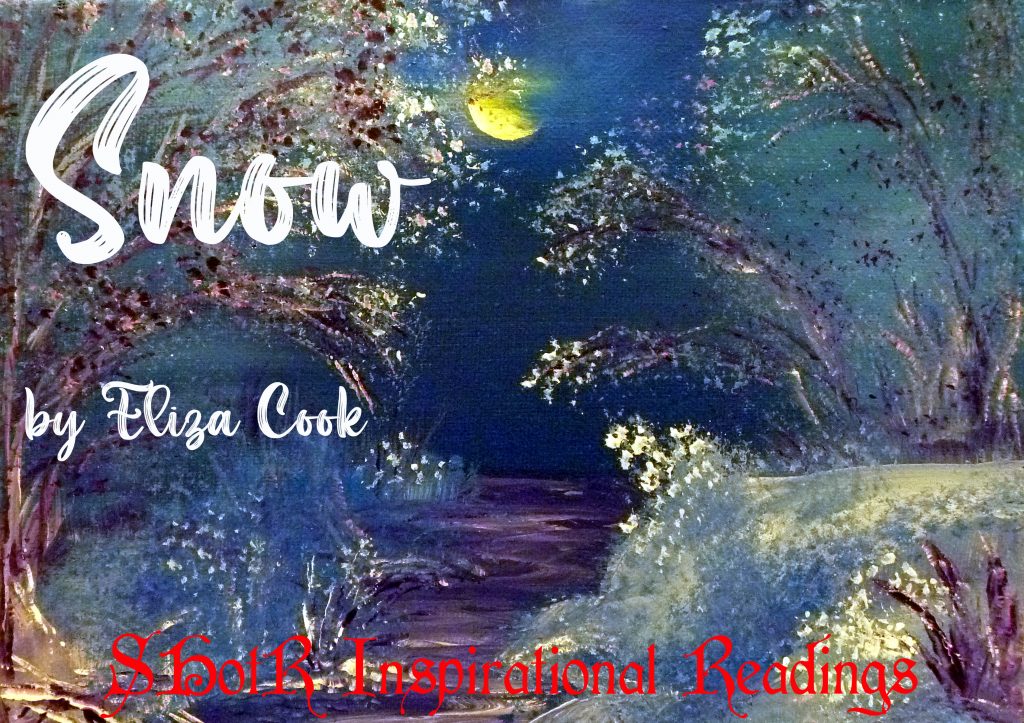
Eliza Cook (1818 –1889) was born in London, England. Self-educated as a child, she began writing poetry at the age of fifteen. Her first her first poetry collection was Lays of a Wild Harp: A Collection of Metrical Pieces (John Bennett, 1835) when she was 17 years old. Cook also published poems in magazines such as Metropolitan Magazine, New Monthly Magazine, and Weekly Dispatch, which published her most popular poem, The Old Arm-Chair. In 1838, Cook published her second collection, Melaia and Other Poems, and it was well received in both England and America (reissued in 1844). Cook was known as a poet of the working class. She wrote poems advocating political freedom for women and addressing questions of class and social justice. Despite her popularity as a poet, Cook was criticized for the ways she went against gender conventions in both her writing and her life; she wore male clothing and had a relationship with American actress Charlotte Cushman, to whom she addressed many of her poems. In 1849, Cook started a penny-biweekly called Eliza Cook’s Journal, which contained poems, reviews, and social essays written (mostly by her) for a female audience. She continued the publication until 1854, until plagued by ill health in the last years of her life. Cook died on September 23, 1889, in Wimbledon, England.
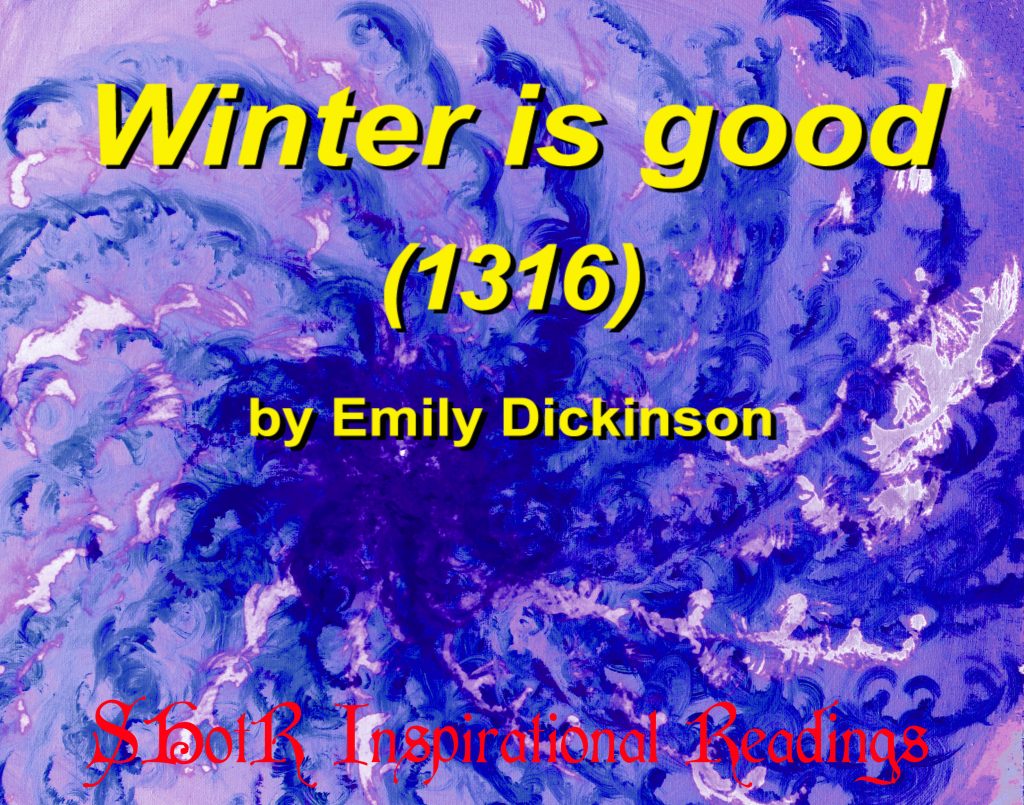
Emily Elizabeth Dickinson (December 10, 1830 – May 15, 1886) was an American poet, born in Amherst, Massachusetts. Dickinson lived much of her life in isolation and was thought of as an eccentric by locals. She never married, and the friendships she fostered depended entirely upon written correspondence. Dickinson also suffered from depression; she revealed the extent of her depression to a friend after one of her mentors passed away: . . . some of my friends are gone, and some of my friends are sleeping – sleeping the churchyard sleep – the hour of evening is sad – it was once my study hour – my master has gone to rest, and the open leaf of the book, and the scholar at school alone, make the tears come, and I cannot brush them away; I would not if I could, for they are the only tribute I can pay the departed . . . Dickinson was a prolific writer, but her only one letter and only 10 of her nearly 1,800 poems were published during her lifetime. Her poems explore aesthetics, society, nature, spirituality, death, and immortality. After her death in 1886, Lavinia Dickinson (Emily’s younger sister) discovered Dickinson’s cache of poems, and her work became public. A 1998 New York Times article revealed the name Susan was often deliberately removed from Dickinson’s poems, and that at least eleven poems were originally dedicated to her sister-in-law Susan Huntington Gilbert Dickinson. A complete and mostly unaltered collection of her poetry became available for the first time when scholar Thomas H. Johnson published The Poems of Emily Dickinson in 1955.
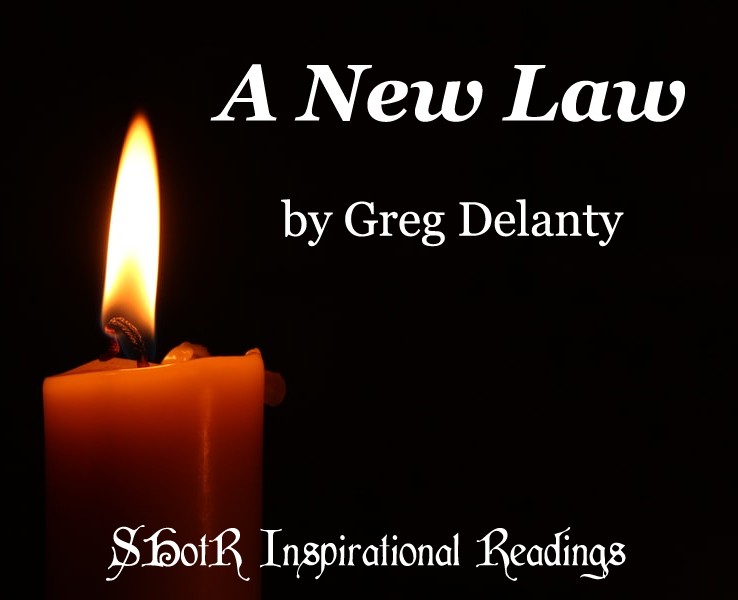
Greg Delanty (1958 — ) is the author of several books of poetry, including Book Seventeen (Louisiana State University Press, 2015), Loosestrife (Fomite Press, 2011), and The Ship of Birth (Louisiana State University Press, 2007). He is the recipient of the Austin Clarke Award, the Allen Dowling Poetry Fellowship, a Guggenheim Grant, and the Patrick Kavanagh Award, and more. Delanty is the poet in residence at Saint Michael’s College in Vermont.
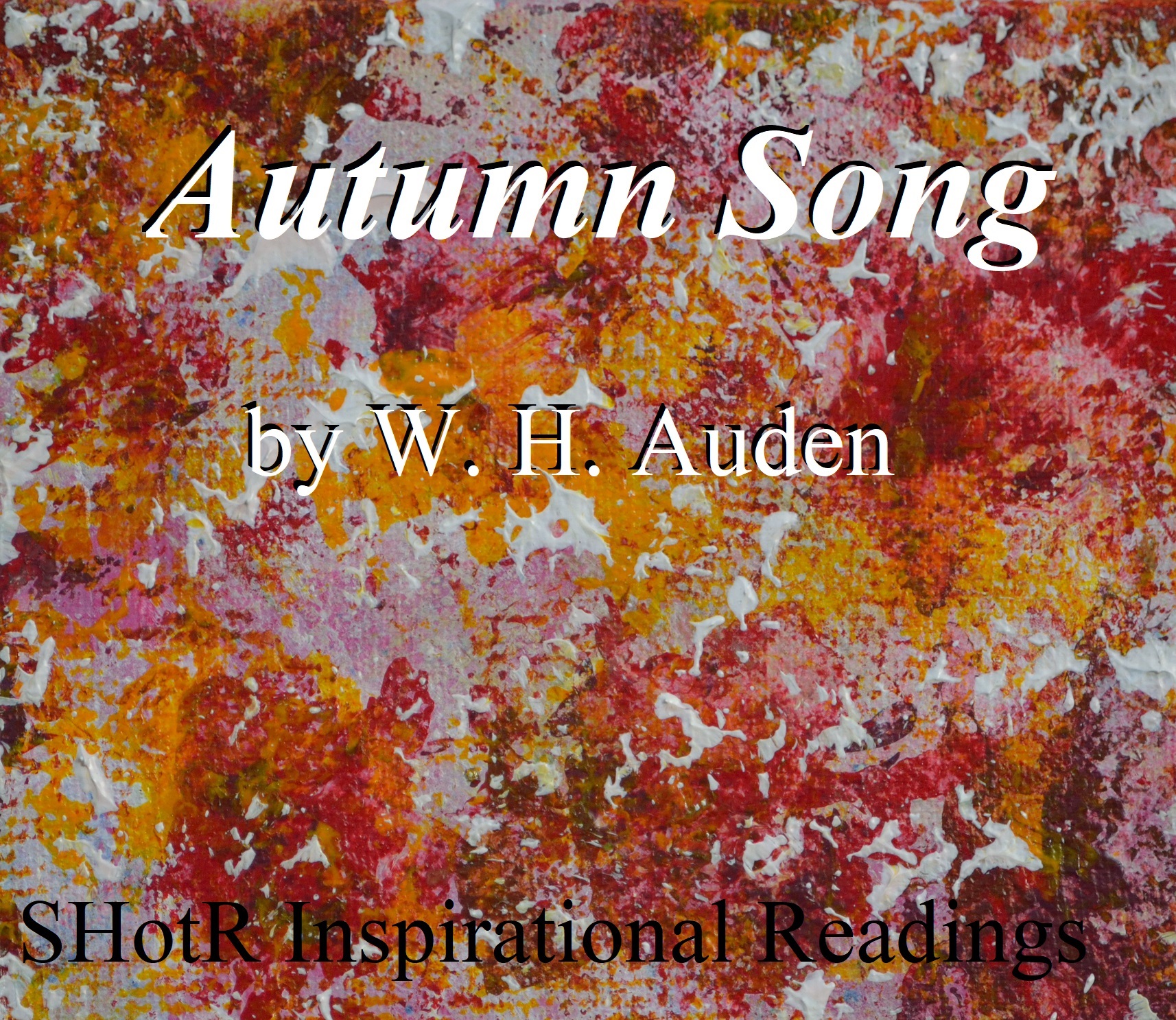
Wystan Hugh Auden (21 February 1907 – 29 September 1973[1]) was an Anglo-American poet. Auden’s poetry was noted for its stylistic and technical achievement, its engagement with politics, morals, love, and religion, and its variety in tone, form, and content. He was born in York, attended English public schools, and studied English at Christ Church, Oxford. In 1925, Auden and Christopher Isherwood maintained a sexual friendship in intervals between their relations with others, and in in the 1930s they collaborated on three plays and a travel book. After a few months in Berlin in 1928–29, Auden spent five years (1930–35) teaching in British private preparatory schools, then travelled to Iceland and China to write books about his journeys. In 1939 he moved to the United States and became an American citizen in 1946, retaining his British citizenship. In 1930, at the age of twenty-three, Auden became widely known with the publication of his first book Poems; it was followed in 1932 by The Orators. In 1935 Auden married Erika Mann (1905–1969), the lesbian novelist daughter of Thomas Mann when it became apparent that the Nazis were intending to strip her of her German citizenship. Mann and Auden never lived together but remained on good terms throughout their lives and were still married when Mann died in 1969; she left him a small bequest in her will. In April 1939, Isherwood moved to California, and he and Auden saw each other only intermittently. Around that time, Auden met the poet Chester Kallman, who became his lover for the next two years; Auden described their relation as a marriage that began with a cross-country honeymoon journey. In 1940–41, Auden lived in a house at 7 Middagh Street in Brooklyn Heights, that he shared with Carson McCullers, Benjamin Britten, and others, which became a famous center of artistic life, nicknamed February House. In 1941 Kallman ended their sexual relationship because he could not accept Auden’s insistence on mutual fidelity, but he and Auden remained companions for the rest of Auden’s life, sharing houses and apartments from 1953 until Auden’s death. Auden dedicated both editions of his collected poetry (1945/50 and 1966) to Isherwood and Kallman. In 1948, Auden began spending his summers in Europe, together with Chester Kallman. They stayed first in Italy, and then, starting in 1958, he began spending his summers in Kirchstetten, Austria, where Auden bought a farmhouse from the prize money of the Premio Feltrinelli awarded to him in 1957; he shed tears of joy at owning a home for the first time. In 1956–61, Auden was Professor of Poetry at Oxford University where he was required to give three weeks’ worth of lectures each year, a light workload that allowed him to continue to spend winter in New York, and to spend summers in Europe. In 1972, Auden moved his winter home from New York to Oxford, when his old college, Christ Church, offered him a cottage; he continued to spend summers in Austria. He died in Vienna in 1973, a few hours after giving a reading of his poems at the Austrian Society for Literature. Auden’s death occurred the night before his intended next-day return to Oxford; he was buried in Kirchstetten. Many of Auden’s poems during the 1930s and after were inspired by unconsummated love, and in the 1950s he summarized his emotional life in a famous couplet (The More Loving One):
If equal affection cannot be
Let the more loving one be me
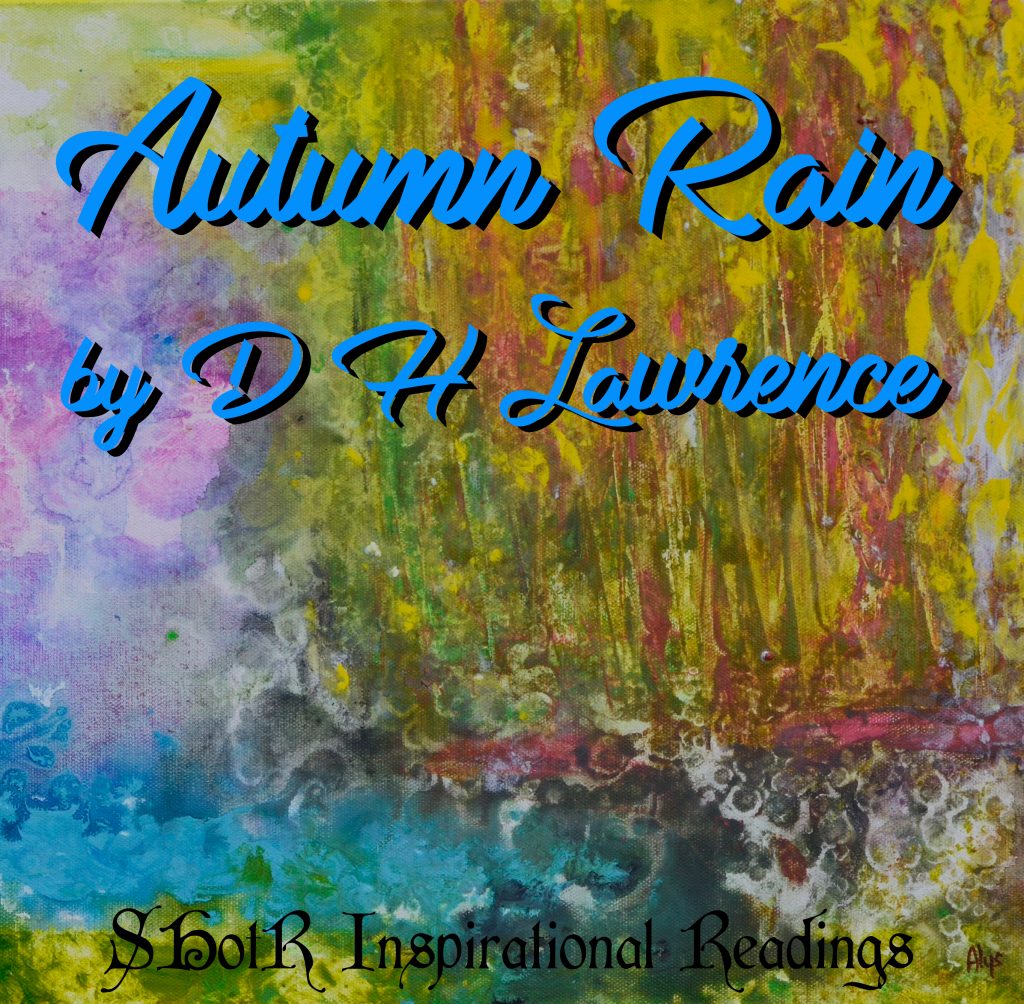
David Herbert Lawrence (11 September 1885 – 02 March 1930) was an English writer and poet. Lawrence wrote almost 800 poems, most of them relatively short. His first poems were written in 1904; he rewrote some of his early poems when they were collected in 1928, partly to fictionalize them, but also to remove some of the artifice of his early works. Lawrence felt all poems had to be personal sentiments with a sense of spontaneity. He called one collection of poems Pansies, partly for the simple ephemeral nature of the verse, but also as a pun on the French word panser, to dress or bandage a wound. The Noble Englishman and Don’t Look at Me were removed from the official edition of Pansies on the grounds of obscenity. Although he lived most of the last ten years of his life exiled abroad, Lawrence’s thoughts were often still on England. Lawrence died on 02 March 1930 in France, from complications of tuberculosis. His last work Nettles, published just eleven days after his death, was a series of bitter yet often wry attacks on the moral climate of England.
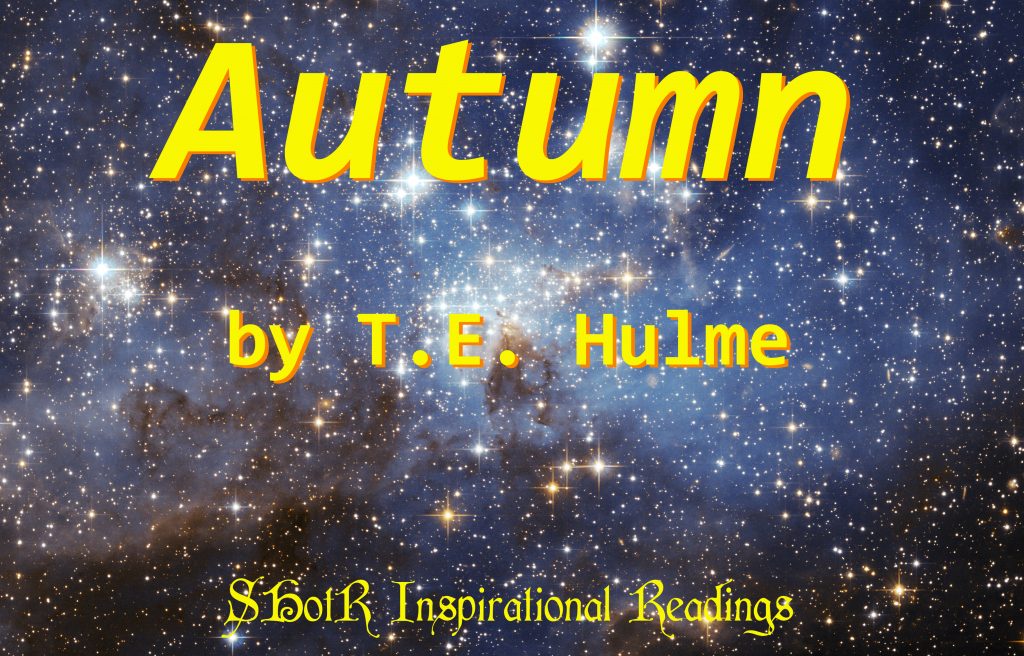
Thomas Ernest Hulme (16 September 1883 – 28 September 1917) was an English critic and poet who had a notable influence upon modernism. He was an aesthetic philosopher and the father of Imagism. Hulme was educated at Newcastle-under-Lyme High School and, from 1902, St John’s College, Cambridge, where he read mathematics, but was sent down in 1904 after rowdy behavior on Boat Race night. He was thrown out of Cambridge a second time after a scandal involving a Roedean girl (the Roedean School is an independent day and boarding school founded in 1885 in Roedean Village on the outskirts of Brighton, East Sussex, England, and governed by Royal Charter. It is for girls aged 11 to 18.). Hulme returned to his studies at University College London, before travelling around Canada and spending time in Brussels. Hulme’s poems Autumn and A City Sunset, both published in 1909 in a Poets’ Club anthology, have the distinction of being the first Imagist poems. Five more poems were published in The New Age in 1912 as The Complete Poetical Works of T. E. Hulme, despite the fact that, between 1908 and 1910, Hulme actually wrote about 25 poems totaling some 260 lines. Hulme volunteered as an artilleryman in 1914 and served with the Honourable Artillery Company and later the Royal Marine Artillery in France and Belgium. He was wounded in 1916. Back at the front in 1917, he was killed by a shell at Oostduinkerke near Nieuwpoort, in West Flanders: on 28 September 1917, four days after his thirty-fourth birthday, Hulme suffered a direct hit from a large shell which literally blew him to pieces. Witnesses said that he was apparently so absorbed in his own thoughts that he had failed to hear it coming; he remained standing while others around hm threw themselves flat on the ground. What was left of him was buried in the Military Cemetery at Koksijde, West-Vlaanderen, in Belgium where – no doubt for want of space – he is described simply as One of the War poets.
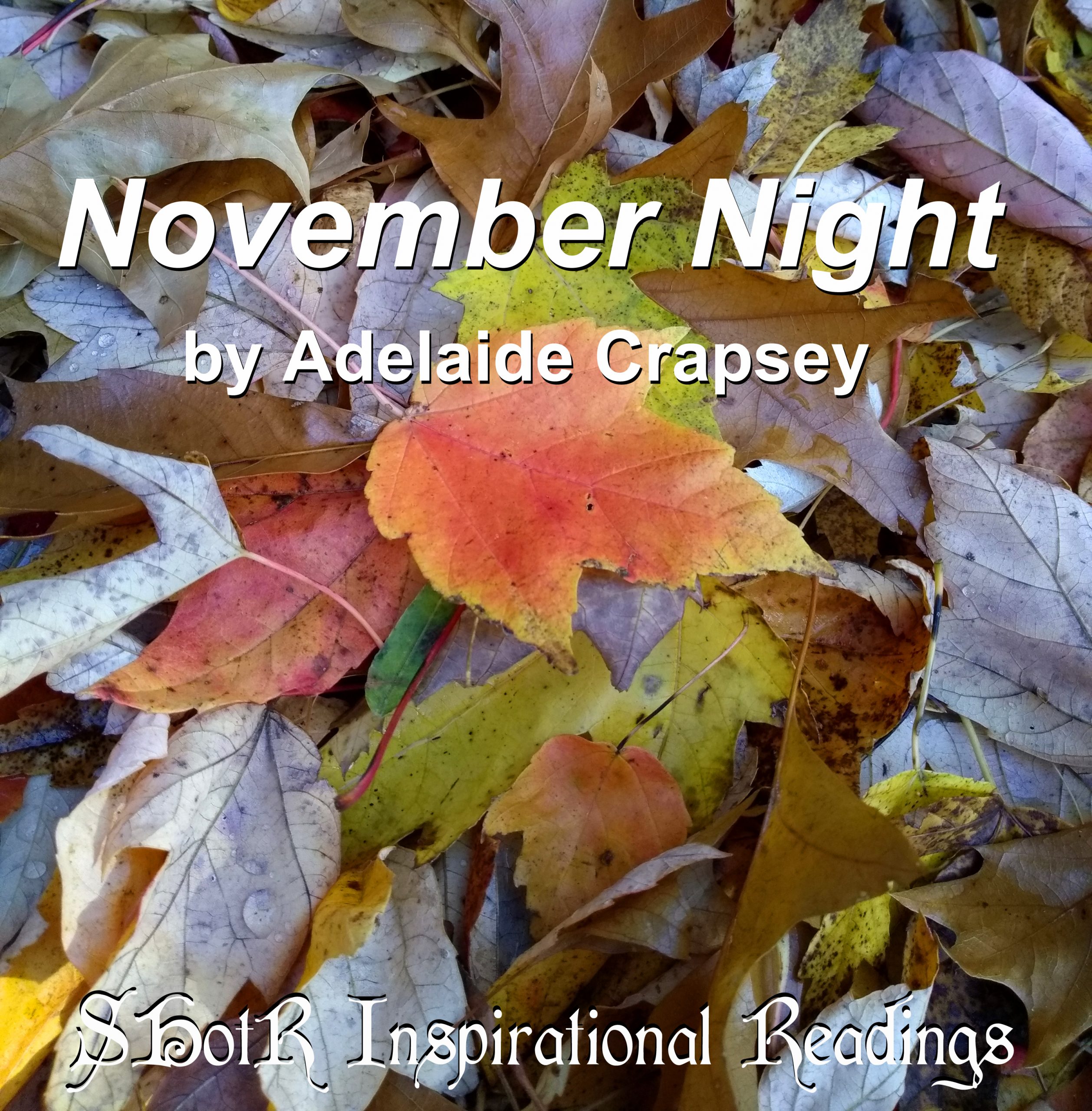
Adelaide Crapsey (09 September 1878 – 08 October 1914) was an American poet, who left one important poetic legacy: the cinquain, or five-line unrhymed stanza form, modelled on Japanese haiku. She lived with un-diagnosed tuberculosis for many years in both America and abroad. In the summer of 1908, while Adelaide was living with her family in Rochester, she “took helplessly to bed.” Because of her poor health, she decided that she must quit her job teaching history and literature at Miss Low’s School in Stamford, Connecticut, and she faced the question of what to do hanging over her. She was now almost thirty; she was interested in further research on theory of metrics, but only her own theory; she was not interested in the theories of others. To continue her research, in December 1908 Adelaide returned to Europe, and lived in Rome, Great Britain, and France. Still undiagnosed, she spent February and March 1908 in an Anglo-American hospital in Rome. In 1911, a combination of health problems and financial issues forced Adelaide to seek employment back in the United States. Later that year, she was diagnosed with tuberculin meningitis. It was also in 1911 that she wrote her first cinquains. In July 1913, Adelaide collapsed and was admitted sent to a private nursing home in Saranac Lake, New York. In the nursing home, because of her “physical prostration,” she was allowed to write only one letter a day. Nevertheless, she managed to write letters and poetry about her condition and her treatment. They contained flippant humor, possibly as a way of covering the reality that she was at the mercy of a disease for which there was no cure. For example, she wrote a poem she called Lines Addressed To My Left Lung Inconveniently Enamoured of Plant Life:
It was, my lung, most strange of you, A freak I cannot pardon, Thus to transform yourself into A vegetable garden.
In August 1914, sicker than ever, Adelaide left the nursing home and returned to her parents’ home in Rochester. She died there on 08 October 1914, at the age of thirty-six, and her ashes were buried in the Crapsey family plot in Mount Hope Cemetery. Architect Claude Bragdon was a friend of the Crapsey family; he also owned a press. Bragdon posthumously published a book of Crapsey’s poems entitled Verse (1915). Revised editions of Verse were published in 1922 and 1934, and they contain earlier unpublished poems. Also published posthumously in 1918 was Crapsey’s unfinished A Study in English Metrics, a work she began during her three-year stay in Europe; the prefatory note describes it as “a laborious analysis dictated by an acute sense of beauty of verse by an aesthetic experience of unusual intensity.”
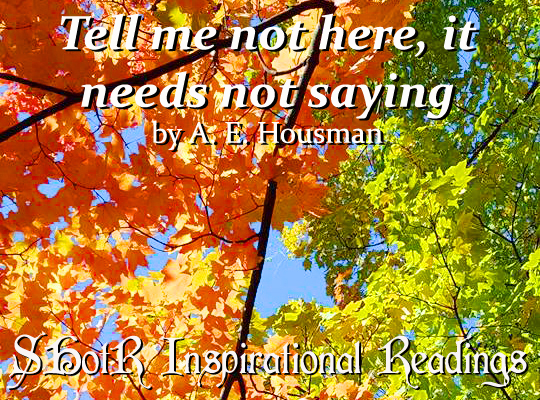
Alfred Edward Housman (26 March 1859 – 30 April 1936) was an English classical scholar and poet. His famous collection, A Shropshire Lad, a cycle of 63 poems, was published in 1896. It first sold slowly, then quickly became a lasting success; it’s appeal to English musicians helped make it popular before World War I, when its themes struck a powerful chord with English readers. The book has been in print continuously since May 1896.
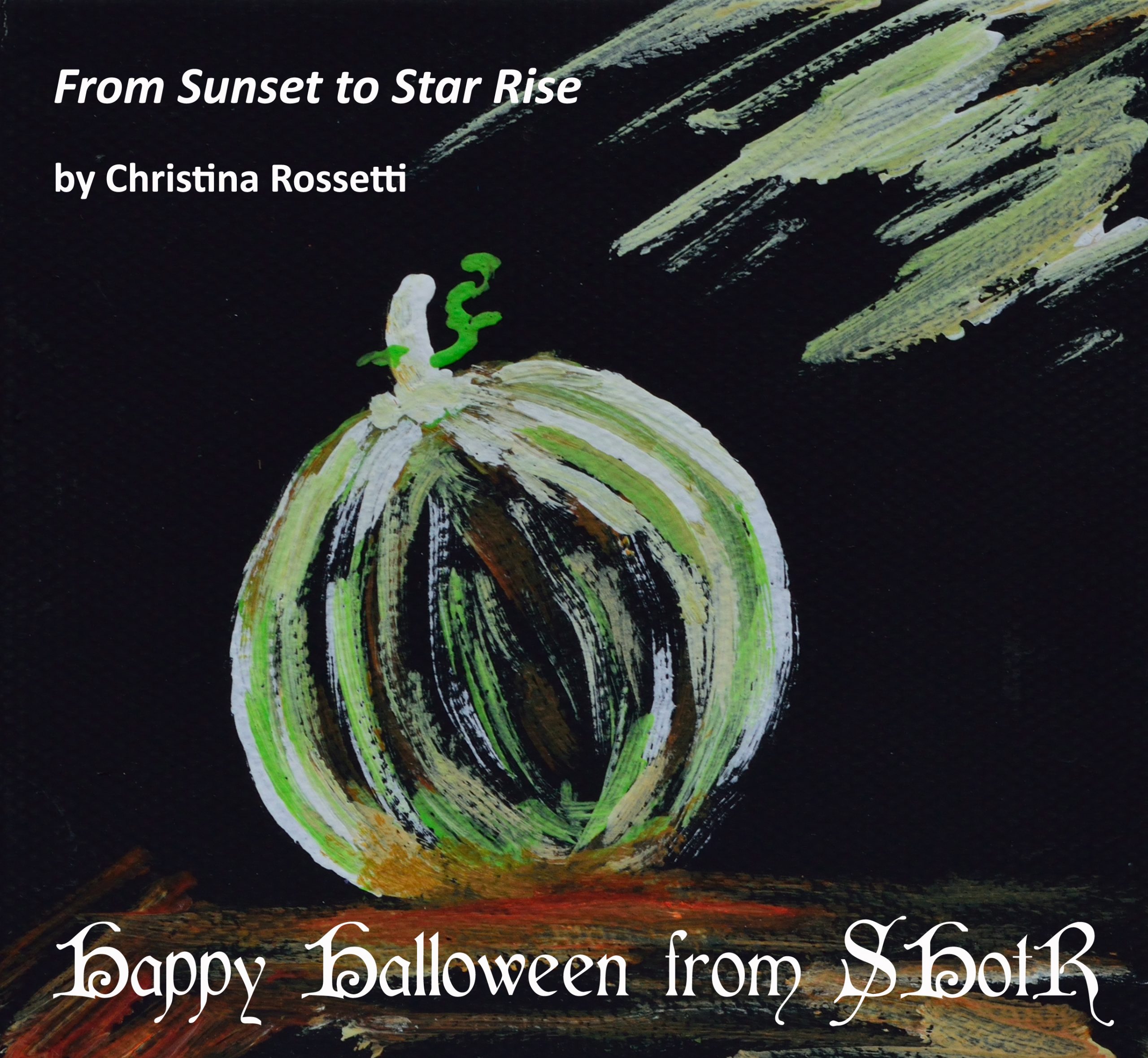
Christina Georgina Rossetti (5 December 1830 – 29 December 1894) was an English poet who wrote romantic, devotional, and children’s poems. Rossetti’s parents were Gabriele Rossetti, a poet and a political exile from Italy, and Frances Polidori, the sister of Lord Byron’s friend and physician, John William Polidori. Rossetti had two brothers and a sister: brother Dante Gabriel became a poet and an influential artist; brother William Michael and Maria both became writers. Christina was the youngest; before she learned to write, she dictated her first story to her mother. When she was 12 years old (1842), Rossetti began writing down and dating her poems. In 1847 she began experimenting with verse forms such as sonnets, hymns, and ballads, using narratives from the Bible, folk tales, and the lives of saints. Her early pieces often feature meditations on death and loss, in the Romantic tradition. When she was 14, Rossetti suffered a nervous breakdown and left school; she suffered henceforth from bouts of depression and related illnesses. It was during that time she, her mother, and her sister became absorbed in the Anglo-Catholic movement that developed in the Church of England, and religious devotion became important in Rossetti’s life. Rossetti published her first two poems (Death’s Chill Between, Heart’s Chill Between) in the Athenaeum in 1848, when she was 18. She was engaged three times: first in her late teens to the painter James Collinson; he, like her brothers Dante and William, was a founding members of the avant-garde artistic group, the Pre-Raphaelite Brotherhood (founded 1848), but their engagement was broken in 1850 when he reverted to Catholicism. Under the pseudonym Ellen Alleyne, Rossetti contributed to the literary magazine, The Germ, published by the Pre-Raphaelites from January to April 1850 (it was edited by her brother William), marking the beginning of her public career. In 1853, due to the Rossetti family’s financial difficulties, Christina helped her mother keep a school in Somerset (England, but it was not a success. In 1854 mother and daughter returned to London, where Rossetti’s long-ill father died. She became involved with linguist Charles Cayley, but then she declined to marry him for religious reasons. Her third offer of marriage came from the painter John Brett, whom Rossetti turned down. Rossetti’s more critical reflections on the artistic movement, initiated by her brother Dante Gabriel, began with her 1856 poem In the Artist’s Studio, in which she reflects on seeing multiple paintings of the same model. Rossetti’s famous collection, Goblin Market and Other Poems, was published in 1862, when she was 31. It received widespread critical praise, establishing her as the foremost female poet of the time. The title poem is one of Rossetti’s best known. Although it is ostensibly about two sisters’ misadventures with goblins, critics have interpreted the piece in a variety of ways, seeing it as an allegory about temptation and salvation, a commentary on Victorian gender roles and female agency, and a work about erotic desire and social redemption. Rossetti sat for several of her brother Dante Gabriel’s most famous paintings: in 1848, she was the model for the Virgin Mary in his first completed oil painting, The Girlhood of Mary Virgin, which was the first work he inscribed with the initials PRB to signify the Pre-Raphaelite Brotherhood. In 1849 Rossetti modelled for her brother’s two paintings, the Annunciation and Ecce Ancilla Domini. A line from her poem Who shall deliver me? inspired the famous painting by Fernand Khnopff called I lock my door upon myself. In 1849 she became seriously ill again, suffering from depression. Rossetti was a volunteer worker from 1859 to 1870 at the St Mary Magdalene house of charity in Highgate, a refuge for former prostitutes, and some scholars suggest that Goblin Market might have been inspired by the “fallen women” she came to know there. Scholars have found feminist themes in her poetry, but in life, Rossetti was ambivalent about women’s suffrage. That said, she opposed slavery (in the American South), cruelty to animals (in the prevalent practice of animal experimentation), and the exploitation of girls in under-age prostitution. Sometime around 1857 she had a major religious crisis. Rossetti continued to write and publish for the rest of her life, focusing mainly on devotional writing and children’s poetry. Rossetti was diagnosed with Graves’ disease in 1872, after suffering a near-fatal attack in the early 1870s. In 1892, she wrote The Face of the Deep, a book of devotional prose, and the next year Rossetti oversaw publication of a new and enlarged edition of Sing-Song. She developed breast cancer in 1893, and the tumor was removed; there was a recurrence in September 1894. Rossetti died on 29 December 1894, in Torrington Square, Bloomsbury (London); the location is marked with a stone tablet. She is buried in Highgate Cemetery in north London.
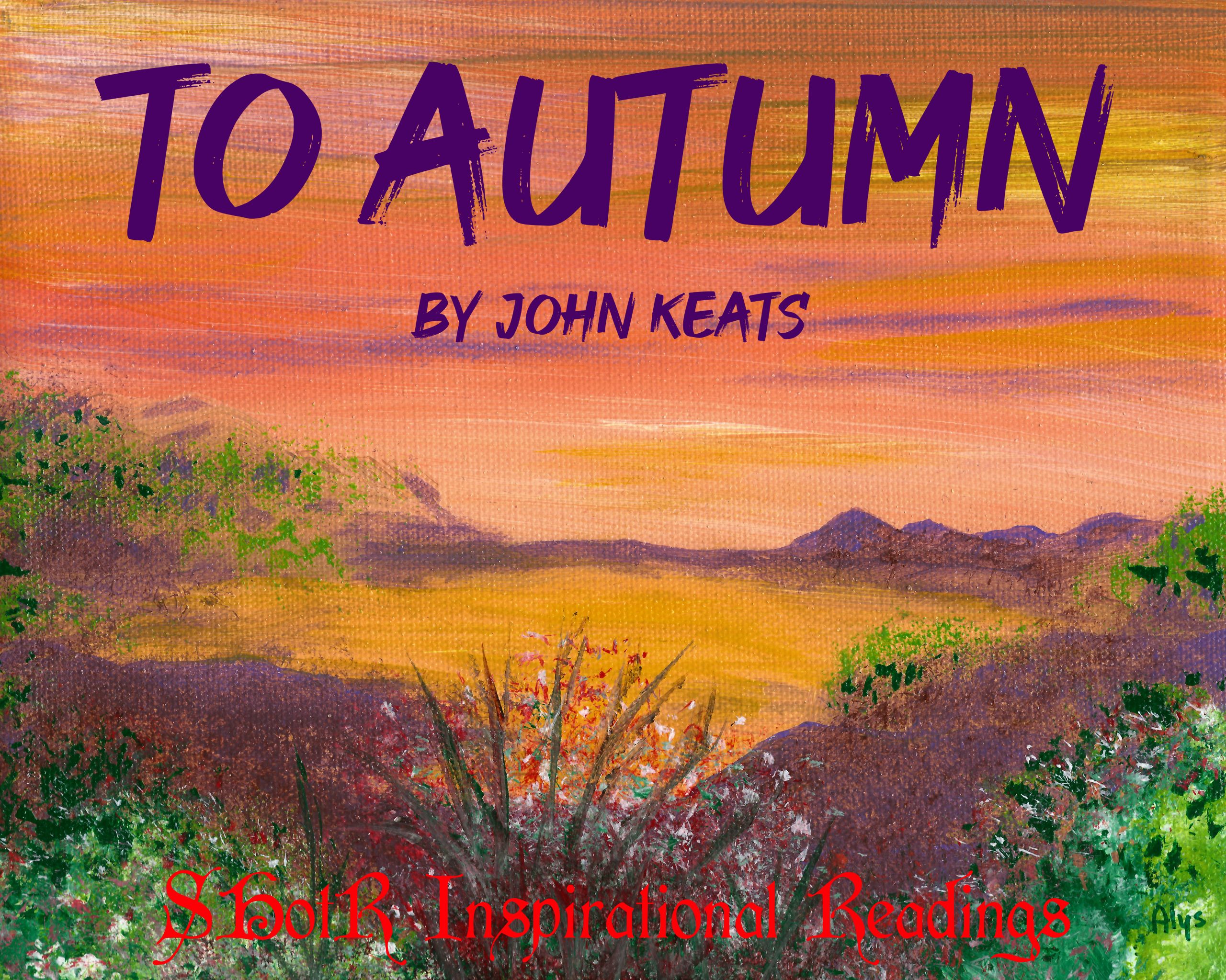
John Keats (31 October 1795 – 23 February 1821) was an English poet prominent in the second generation of Romantic poets, along with Lord Byron and Percy Bysshe Shelley. Keats’ poems were in publication for only four years before he died of tuberculosis at the age of 25; they had been indifferently received by critics in his lifetime, but his fame grew rapidly after his death. By the end of the century, he was in the canon of English literature and had become the inspiration for the Pre-Raphaelite Brotherhood. Today his poems and letters remain among the most popular and analyzed in English literature, especially Ode to a Nightingale, Ode on a Grecian Urn, La Belle Dame sans Merci, Sleep and Poetry, and the sonnet, On First Looking into Chapman’s Homer.
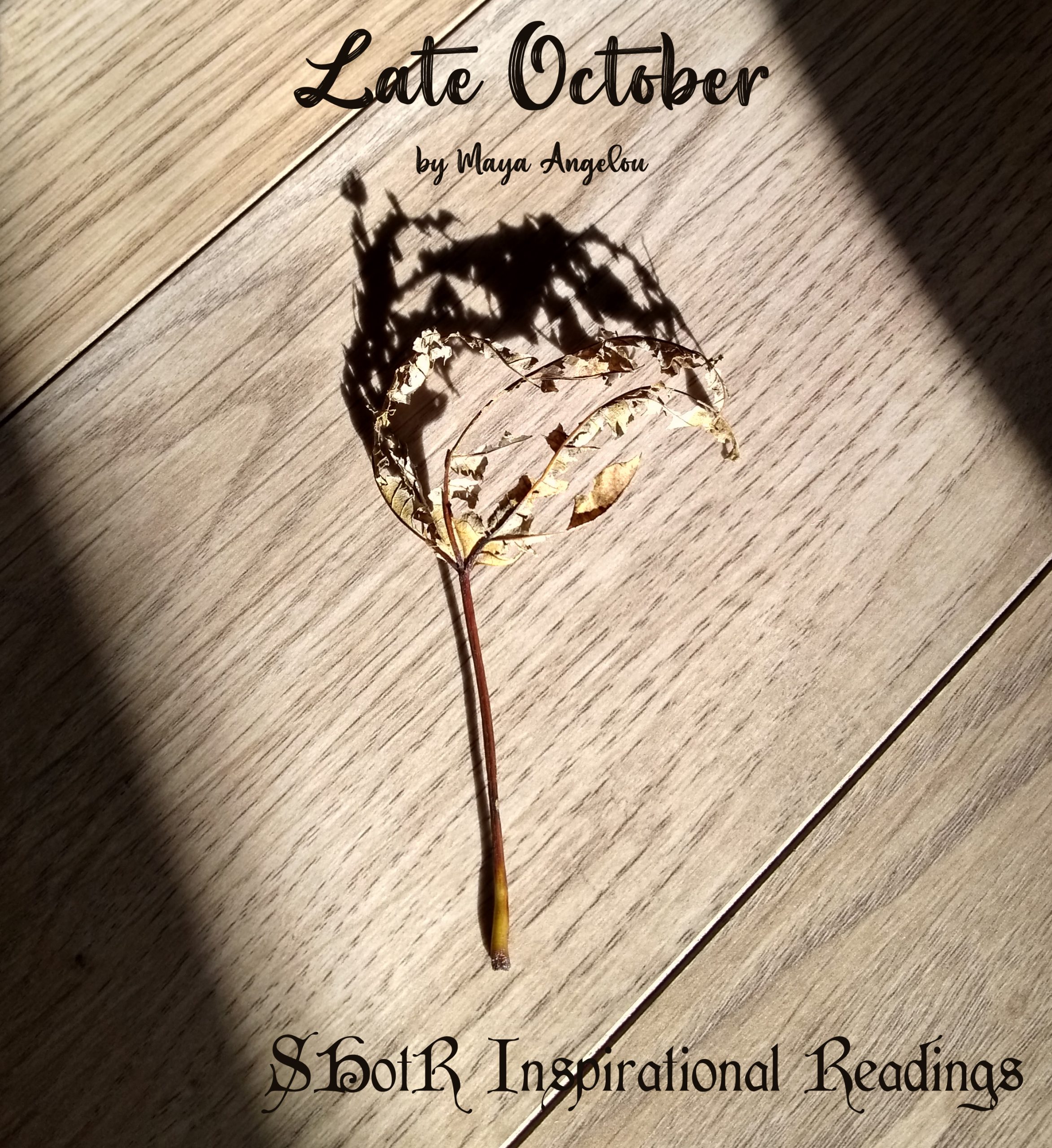
Maya Angelou, born Marguerite Annie Johnson (04 April 1928 – 28 May 2014), was an American poet, memoirist, and civil rights activist. At the age of eight, Angelou was sexually abused and raped by her mother’s boyfriend, a man named Freeman. She told her family; Freeman was found guilty, jailed for only one day, and four days after his release, he was murdered (probably by her uncles). Angelou became mute for almost five years, because: “I thought, my voice killed him; I killed that man, because I told his name. And then I thought I would never speak again, because my voice would kill anyone.” According to Marcia Ann Gillespie, who co-wrote a biography about Angelou, it was during this period of silence that Angelou developed an extraordinary memory, her love for books and literature, and her ability to listen and observe the world around her. Angelou became a poet and writer after a string of odd jobs during her young adulthood, that included fry cook, sex worker, nightclub performer, Porgy and Bess cast member, Southern Christian Leadership Conference coordinator, and working as a correspondent in Egypt and Ghana during the decolonization of Africa. She published seven autobiographies, three books of essays, and several books of poetry. She was also an actress, writer, director, and a producer and writer on five decades worth of plays, movies, and television shows. Angelou lived in Accra, Ghana in the 1960s, and she became close friends with Malcolm X when he visited in the early 1960s. Angelou is best known for her series of seven autobiographies, which focus on her childhood and early adult experiences. The first, I Know Why the Caged Bird Sings (1969), tells of her life up to the age of 17 and brought her international recognition and acclaim. I Know Why the Caged Bird Sings was written in 1968; its content was inspired by her experiences at a dinner party in Accra, where she was challenged by Random House editor Robert Loomis to write about her experiences. Angelou returned to the U.S. in 1965 to help Malcolm X form a new civil rights organization, the Organization of Afro-American Unity; he was assassinated shortly after she returned. Devastated, she moved to Hawaii, resuming her singing career, then moved Los Angeles to focus on her writing. Working as a market researcher in Watts, she witnessed first-hand the riots in the summer of 1965. Angelou acted in and wrote plays while in LA, then moved to New York in 1967. There she met her lifelong friend Rosa Guy and renewed her friendship with James Baldwin, whom she had met in Paris in the 1950s. Angelou referred to Baldwin as “my brother.” In 1968, Martin Luther King Jr. asked Angelou to organize a march, but it was postponed because King was assassinated on her 40th birthday. Devastated again, her friend James Baldwin helped her out of her depression. As Gillespie wrote, “If 1968 was a year of great pain, loss, and sadness, it was also the year when America first witnessed the breadth and depth of Maya Angelou’s spirit and creative genius”. Despite having almost no experience, Angelou wrote, produced, and narrated Blacks, Blues, Black!, a ten-part documentary series about the connection between blues music and Black Americans’ African heritage, for National Educational Television, the precursor of PBS. After I Know Why the Caged Bird Sings was published, Angelou publicly discussed aspects of her personal life, becoming respected as a voice for black people and women. Her works are viewed as a defense of black culture, widely used in schools and universities worldwide; there have been attempts to ban her books from some U.S. libraries. Angelou’s most celebrated works are categorized as autobiographies because she made a deliberate attempt to challenge the common structure of the autobiography by critiquing, changing, and expanding the genre. Her books center on themes such as racism, identity, family, and travel. Throughout her life Angelou received many honors, including being named the first Reynolds Professor of American Studies (1982) at Wake Forest University in Winston-Salem, North Carolina. Active in the Civil Rights Movement, she worked alongside both Martin Luther King Jr. and Malcolm X. She started lecturing in the 1990s while in her 60s, making around 80 appearances a year on the lecture circuit; she continued to lecture into her 80s. In 1993, Angelou recited her poem “On the Pulse of Morning” (1993) at the first inauguration of Bill Clinton; she was the first poet to present an inaugural recitation since Robert Frost (for John F. Kennedy, 1961). Angelou’s Georgia, Georgia (1972), produced by a Swedish film company and filmed in Sweden, was the first screenplay written by a Black woman. Angelou worked as a composer, writing for singer Roberta Flack, and composing movie scores. She also wrote articles, short stories, TV scripts, documentaries, autobiographies, produced plays, and was named visiting professor at several colleges and universities. Despite chronic pain due to her dancing career and respiratory failure, she wrote four books during the last ten years of her life. Angelou died on the morning of 28 May 2014 at the age 86.
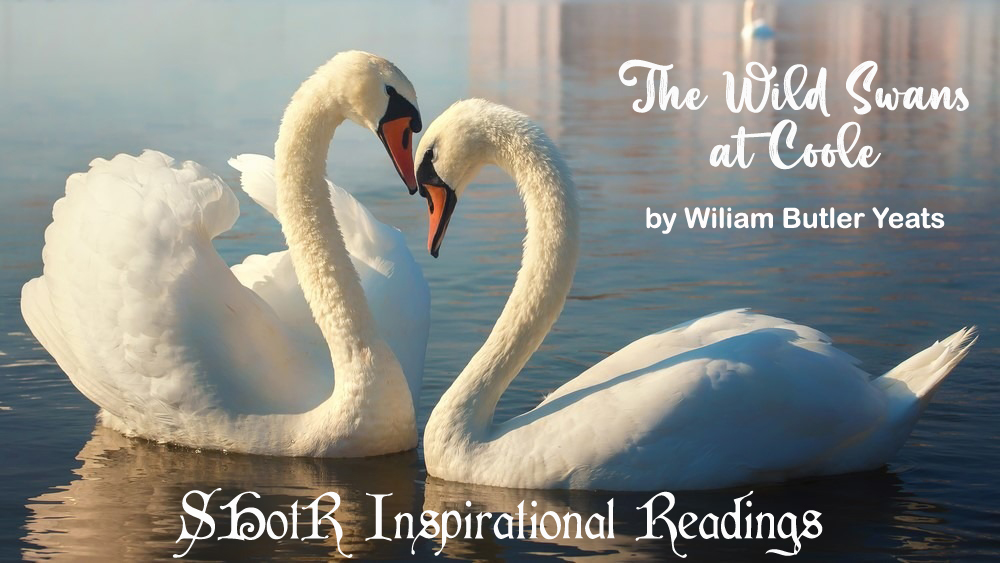
William Butler Yeats (13 June 1865 – 28 January 1939) was an English-language Irish poet, dramatist, prose writer and one of the foremost figures of 20th-century literature. He was a driving force behind the Irish Literary Revival along with Lady Gregory, Edward Martyn, and others. Yeats was born in Sandymount, Ireland, and spent childhood holidays in County Sligo. He studied poetry from an early age, when he became fascinated by Irish legends and the occult. From 1900, his poetry grew more physical and realistic. He basically renounced the transcendental beliefs of his youth, but he remained preoccupied with physical and spiritual masks, as well as with cyclical theories of life. In 1889, Yeats met Maud Gonne, a 23-year-old English heiress and ardent Irish nationalist. She was eighteen months younger than Yeats, who became obsessively infatuated, and she had a significant and lasting effect on his poetry and his life thereafter. In later years he admitted, “it seems to me that she [Gonne] brought into my life those days – for as yet I saw only what lay upon the surface – the middle of the tint, a sound as of a Burmese gong, an over-powering tumult that had yet many pleasant secondary notes.” Yeats’ love was unrequited, in part due to his reluctance to participate in her nationalist activism. In 1891 he visited Gonne in Ireland and proposed marriage but was rejected. He later admitted that from that point “the troubling of my life began”. Yeats proposed to Gonne three more times: in 1899, 1900, and 1901. She refused each proposal, and in 1903, to his dismay, married the Irish nationalist Major John MacBride. Yeats’ only other love affair during this period was with Olivia Shakespear, whom he first met in 1894, and parted from in 1897. By 1916, Yeats was 51 years old and determined to marry and produce an heir. Yeats proposed to 25-year-old Georgie Hyde-Lees (1892–1968), known as George, whom he had met through Olivia Shakespear. Despite warnings from her friends, Hyde-Lees accepted, and the two were married on 20 October. Their marriage was a success, in spite of the age difference, and in spite of Yeats’ feelings of remorse and regret during their honeymoon, and in spite of the fact that in later years Yeats had romantic relationships with other women. In 1923, he was awarded the Nobel Prize in Literature; Yeats felt the awards had great symbolic value, being an Irish winner so soon after Ireland had gained independence. On 6 April 1934, at the age of 69, Yeats was “rejuvenated” by the Steinach operation, the goals of which were to reduce fatigue and the consequences of ageing and to increase overall vigor and sexual potency in men. It consisted of a half-(unilateral) vasectomy, which Steinach theorized would shift the balance from sperm production toward increased hormone production in the affected testicle. For the last five years of his life, Yeats found a new vigor evident from both his poetry and his intimate relations with younger women. He died in France on 28 January 1939, aged 73. Yeats was buried after a discreet and private funeral at Roquebrune-Cap-Martin. Yeats and George had often discussed his death, and his express wish was that he be buried quickly in France with a minimum of fuss. According to George, “His actual words were ‘If I die, bury me up there [at Roquebrune] and then in a year’s time when the newspapers have forgotten me, dig me up and plant me in Sligo’.” In September 1948, Yeats; body was moved to the churchyard of St Columba’s Church, Drumcliff, County Sligo. The person in charge of the move, on behalf of the Irish Government was the Minister of External Affairs, none other than Seán MacBride, son of Maud Gonne MacBride. Yeats’ epitaph is from the last lines of Under Ben Bulben, one of his final poems:
Cast a cold Eye
on Life, on Death.
Horseman, pass by!
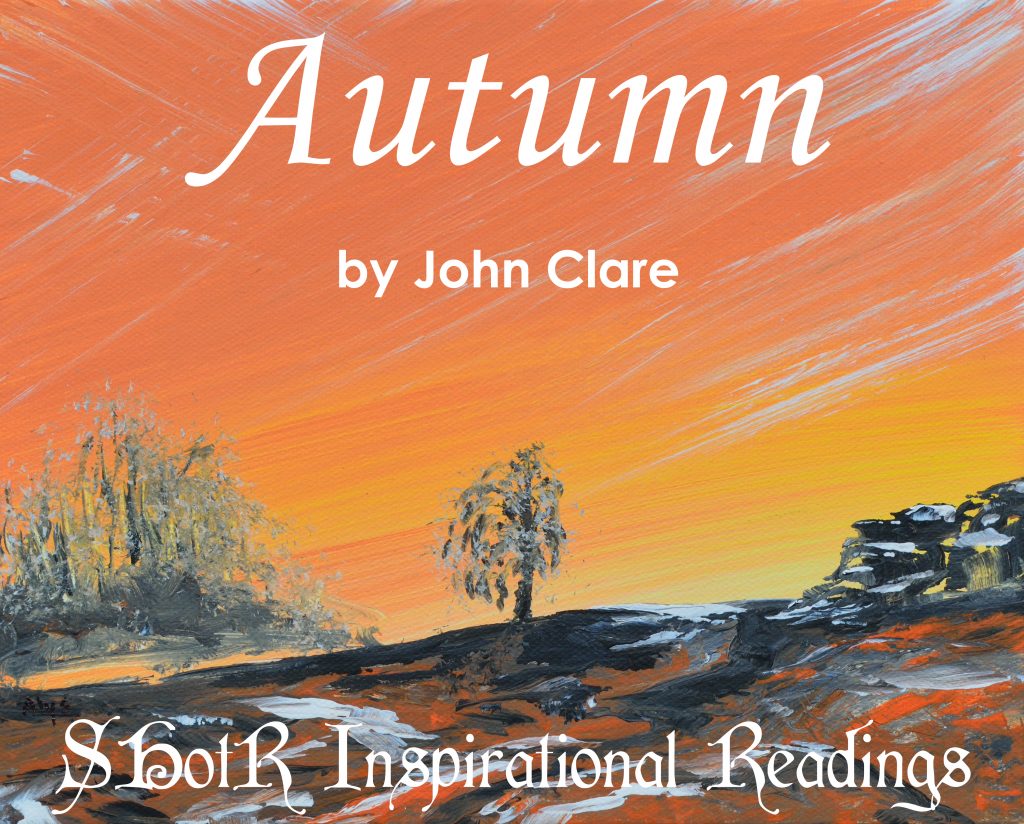
John Clare (13 July 1793 – 20 May 1864) was an English poet, recognized as a major 19th-century poet. The son of a farm laborer, he was torn between the two worlds of literary London and his often illiterate neighbors, and between the need to write poetry and the need for money to feed and clothe his children. Clare’s health was poor, and he had bouts of severe depression, which became worse after his sixth child was born in 1830 and his poetry sold less well. His last work, the Rural Muse (1835), was reviewed favorably but was not enough to support his wife and seven children. Clare’s mental health began to worsen, and his alcohol consumption steadily increased, along with his dissatisfaction with his own identity. His behavior became more erratic. A notable instance of this behavior was demonstrated when he interrupted a performance of The Merchant of Venice, and verbally assaulted Shylock. He was becoming a burden to his wife and his family, and in July 1837 Clare went of his own volition to Dr Matthew Allen’s private asylum High Beach near Loughton, in Epping Forest. Clare was reported as being “full of many strange delusions” ~ he believed himself to be a prize fighter and that he had two wives, Patty and Mary. He started to claim he was Lord Byron, and during his first few asylum years in High Beach, Essex (1837–41), Clare re-wrote famous poems and sonnets by Lord Byron. Child Harold, his version of Byron’s Childe Harold’s Pilgrimage, became a lament for past lost love, and Don Juan, A Poem became an acerbic, misogynistic, sexualized rant redolent of an ageing Regency dandy. Clare also took credit for Shakespeare’s plays, claiming to be the Renaissance genius himself. “I’m John Clare now,” the poet claimed to a newspaper editor, “I was Byron and Shakespeare formerly.” In 1841, Clare absconded from the asylum, walking some 90 miles to his home, believing that he was to meet his first love Mary Joyce; Clare was convinced that he was married to both her and his actual wife Martha (“Patty”), with children by both women. He did not believe Mary Joyce’s family when they told him she had died accidentally three years earlier in a house fire. He remained free, mostly at home in Northborough, for the five months following, but eventually Patty called the doctors. Between Christmas and New Year in 1841, Clare was committed to the Northampton General Lunatic Asylum. Upon Clare’s arrival at the asylum, the accompanying doctor, Fenwick Skrimshire, who had treated Clare since 1820, completed the admission papers: to the question, Was the insanity preceded by any severe or long-continued mental emotion or exertion?, Skrimshire entered, After years of poetical prosing. Clare remained there for the rest of his life under the humane regime of Dr Thomas Octavius Prichard, who encouraged and helped him to write, and it was there that Clare wrote his most famous poem, I Am. It was in his later poetry that Clare developed a distinctive voice, an unmistakable intensity, and vibrance. John Clare died of a stroke on 20 May 1864, in his 71st year. His remains were returned to Helpston for burial in St Botolph’s churchyard, where he had expressed a wish to be buried.

William Shakespeare (1564 – 1616) wrote 154 sonnets, which were apparently composed during a period of ten or a dozen years starting in about 1592-1593. They were published by Thomas Thorpe in 1609. Unlike the narrative poems, they enjoyed only limited commercial success during Shakespeare’s lifetime, and no further edition appeared until Benson’s in 1640. The 154 sonnets are conventionally divided between the “young man” sonnets (1-126) and the “dark lady” sonnets (127-152), with the final pair often seen as an envoy or coda to the collection. Shakespeare employs the conventional English sonnet form: three quatrains capped with a couplet. Drama is conjured within individual poems, as the speaker wrestles with some problem or situation; it is generated by the juxtaposition of poems, with instant switches of tone, mood, and style, and it is implied by cross-references and interrelationships within the sequence as a whole. Shakespeare’s whose exact birth date remains unknown. He was baptized in Holy Trinity Church in Stratford-upon-Avon on 26 April 1564. He was his mother’s third child, but the first to survive infancy. Scholars believe that he was born on 23 April, given the era’s convention of baptizing newborns on their third day of life. Shakespeare died on 23 April 1616, on what may have been his 52nd birthday.

Miri it is while sumer i-last (Merry it is while summer lasts)
by Anonymous
Miri it is while sumer i-last
With foulës song;
Oc now neghëth windës blast
And weder strong.
Ei, ei, what this night is long,
And Ich with wel michel wrong
Sorwe and murne and fast.
Mirie it is while sumer i-last is one of the oldest traditional songs in the English language; it is one of the few examples of non-liturgical music from medieval England from the first half of the13th century. The author of the song is unknown; text and melody are incomplete on a single, damaged manuscript page, and no one knows if the song originally contained additional lines or stanzas. The manuscript was found together with two old French songs in a book of Psalms in the Bodleian Library, and it was rediscovered at the end of the 19th century and made accessible to experts in 1901. It was arranged and recorded in a modern way for the first time in the 1960s by Frank Llewelyn Harrison. Its reconstruction spread in popularity after 1973, when the song was used in the British horror film The Wicker Man.

Robert Lee Frost (26 March 1874 – 29 January 1963) was an American poet. His work was initially published in England before it was published in the United States; he was known for his realistic depictions of rural life and his command of American colloquial speech. Frost’s personal life was plagued by grief and loss. In 1885 when he was 11, his father died of tuberculosis, leaving the family in poverty. Frost’s mother died of cancer in 1900. In 1920, he had to commit his younger sister Jeanie to a mental hospital, where she died nine years later. Mental illness ran in Frost’s family; he and his mother suffered from depression, and his daughter Irma was committed to a mental hospital in 1947. Frost’s wife, Elinor, also experienced bouts of depression, and had heart problems throughout her life. She developed breast cancer in 1937 and died of heart failure in 1938. Elinor and Robert had six children: son Elliot (1896–1900, died of cholera); daughter Lesley Frost Ballantine (1899–1983); son Carol (1902–1940, committed suicide); daughter Irma (1903–1967); daughter Marjorie (1905–1934, died as a result of puerperal fever after childbirth); and daughter Elinor Bettina (died just one day after her birth in 1907). Only Lesley and Irma outlived their father. Frost was nominated 31 times for the Nobel Prize in Literature, and won the 1963 Bollingen Prize. In 1960, Frost was awarded a United States Congressional Gold Medal, which was finally bestowed by President Kennedy in March 1962. Frost was 86 when he read at the inauguration of John F. Kennedy on January 20, 1961. Frost planned to read his poem Dedication, which he’d written for the occasion, but was unable to read it due to the brightness of the sunlight, so he recited his poem The Gift Outright from memory. Frost died in Boston on 29 January 1963 of complications from prostate surgery. He was buried at the Old Bennington Cemetery in Bennington, Vermont. His epitaph quotes the last line from his poem, The Lesson for Today (1942): I had a lover’s quarrel with the world.

Sara Teasdale (08 August 1884 – 29 January 1933) was an American lyric poet. She was born Sarah Trevor Teasdale in St. Louis, Missouri, and used the name Sara Teasdale Filsinger after her marriage in 1914. Teasdale’s first poem was published in a local newspaper in 1907. Her first collection of poems, Sonnets to Duse and Other Poems, was published that same year. Teasdale’s second collection, Helen of Troy and Other Poems, was published in 1911, and it was praised for its lyrical mastery and romantic subject matter. From 1911 to 1914 Teasdale was courted by several men, including the poet Vachel Lindsay, who was truly in love with her but did not feel that he could provide enough money or stability to keep her satisfied. She chose to marry Ernst Filsinger, a longtime admirer of her poetry, on 19 December 1914. Teasdale’s third poetry collection, Rivers to the Sea, was published in 1915. It was and is a bestseller, being reprinted several times. In 1916 she and Filsinger moved to New York City, where they lived in an Upper West Side apartment on Central Park West. In 1918 she won a Pulitzer Prize for her 1917 poetry collection Love Songs. The sponsoring organization now lists it as the earliest Pulitzer Prize for Poetry. Filsinger’s constant business travel caused Teasdale to feel quite lonely, and in 1929, she moved interstate for three months, thereby satisfying the criteria to gain a divorce. She did not wish to inform Filsinger, only doing so at her lawyers’ insistence as the divorce was going through; Filsinger was shocked. After the divorce she moved only two blocks from her old home on Central Park West. She rekindled her relationship with Vachel Lindsay, who was now married with children. In 1933, she died by suicide, overdosing on sleeping pills; Lindsay had died by suicide two years earlier. A common urban legend surrounds Teasdale’s suicide, because her poem I Shall Not Care was speculated to be her suicide note. However, the poem was first published in her 1915 collection Rivers to the Sea, a full 18 years before her suicide. Teasdale is interred in Bellefontaine Cemetery in St. Louis.
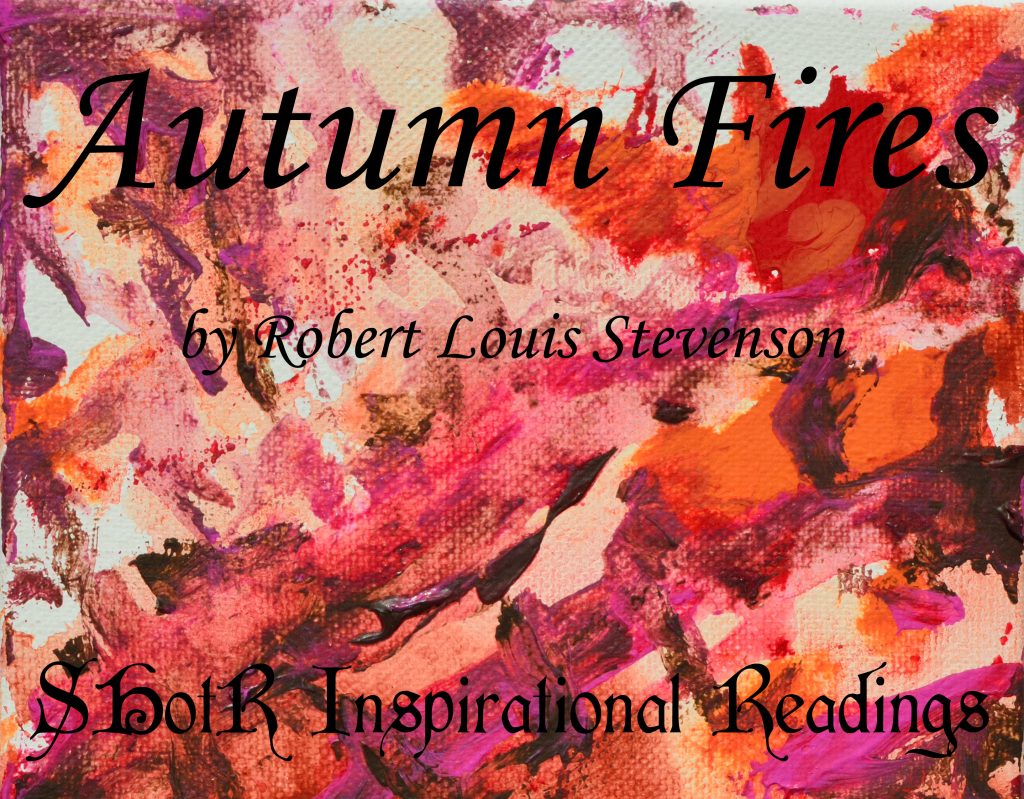
Robert Louis Stevenson (born Robert Lewis Balfour Stevenson; 13 November 1850 – 3 December 1894) was a Scottish novelist, essayist, poet, and travel writer. He is best known for works such as Treasure Island, Strange Case of Dr Jekyll and Mr Hyde, Kidnapped and A Child’s Garden of Verses. A celebrity in his lifetime, Stevenson’s critical reputation has fluctuated since his death, though today his works are held in general acclaim. Born and educated in Edinburgh, Stevenson suffered from serious bronchial trouble for much of his life but wrote prolifically and travel widely despite his poor health. In 1890, he settled in Samoa where, alarmed at increasing European and American influence in the South Sea islands, his writing turned away from romance and adventure toward a darker realism. He died in his island home in 1894. In 2018 he was ranked, just behind Charles Dickens, as the 26th-most-translated author in the world.

Philip Appleman (b. 1926 –) was born in Indiana and holds degrees from Northwestern University, the University of Michigan, and the University of Lyon. He is a Poet, novelist, editor, and Darwin expert, and served in US Army Air Corps during World War II, and then a merchant marine. Appleman is known for his biting social commentary and masterful command of form. The author of numerous volumes of poetry, three novels, and half a dozen collections of prose, Appleman’s range of subject matter includes Darwin, politics, morality, and sex. The recipient of numerous awards, including a fellowship from the National Endowment for the Arts, the Morley Award from the Poetry Society of America, and a Pushcart Prize, Appleman has served on the boards of the Poetry Society of America and the Poet’s House. He has taught at SUNY Purchase, Columbia University, and is a Distinguished Professor Emeritus at Indiana University. Appleman is a recognized expert on the life and work of Charles Darwin, edited the critical anthology Darwin (2001), and wrote two books of poems on the 19th century naturalist, Darwin’s Ark (1984) and Darwin’s Bestiary (1986). Critics have singled out Appleman’s grasp of Darwin’s provocative theories and his ability to elucidate their social implications, and Appleman’s own lucid style emerges in Darwin Among the Moralists and Darwin: On Changing the Mind. His poems and prose pieces have appeared in dozens of publications, including the Nation, the New York Times, the New Republic, the Paris Review, Poetry, and the Yale Review.
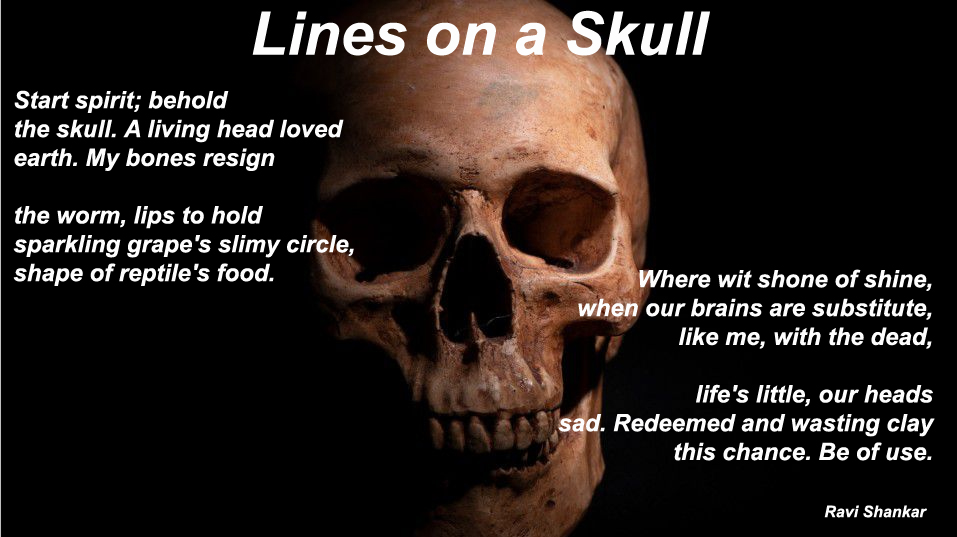
by Ravi ShankarDownload
Ravi Shankar (born 1975) is an American poet, editor, and former literature professor at Central Connecticut State University and City University of Hong Kong. The founding editor of online literary journals Drunken Boat, he’s been called “a diaspora icon” by The Hindu and “one of America’s finest younger poets” by former Connecticut poet laureate Dick Allen. Shankar received his bachelor’s degree from the University of Virginia, his M.F.A. in poetry from the Columbia University School of the Arts. He joined the Central Connecticut State University (CCSU) as a faculty member in 2002. He was a guest teacher of the masters program at Fairfield University, and was elected Chairman of the Connecticut Young Writers Trust in 2011. In 2014, he was promoted from the rank of associate professor to professor at CCSU, and also served as co-director of the creative writing minor at CCSU. Shankar received the University-level Trustees Research Award as a faculty member at CSUS in 2009. In the same year, he also received a fellowship award from The Connecticut Commission on Culture and Tourism (CCT) and Summer Literary Seminars fellowship to Kenya. He has taught around the world including at Wesleyan University Summer Writing Conference, City University of Hong Kong, Eastern Mediterranean University in Cyprus, Sun Yat Sen University in China, and his poetry has been translated into over a dozen languages, including French, German, Spanish, Hindi, Italian, Bengali, Urdu, Tamil, Slovenian, Russian, Greek, Mandarin, and Japanese. In 1999, he founded Drunken Boat. As of 2018, he teaches at the New York Writers Workshop and City University of Hong Kong. He is Chairman of the Asia Pacific Writers & Translators Organization, and a Board Member of the New York Writers Workshop. He has held fellowships from Yaddo, the MacDowell Colony, Djerassi Artists Residency, Ragdale, the Blue Mountain Center, the Jentel Foundation, iPark, and he received the prestigious University of Sydney International Research Fellowship to complete work on his memoir Correctional and to do research on the Puritanical roots and racial demographics of mass incarceration in the United States of America. Shankar’s collections of poetry include A Field Guide to Southern China (2019) written with T. S. Eliot Prize winner George Szrites, The Many Uses of Mint (2018), What Else Could it Be (2015), Instrumentality (2004), a finalist for the 2005 Connecticut Book Awards, and Deepening Groove (2011), winner of the National Poetry Review Prize. He has also served as an editor for other works such as Language for a New Century (2008), which was hailed as “a beautiful achievement for world literature” by Nobel laureate in Literature Nadine Gordimer. Shankar won a Rhode Island State Council on the Arts Individual Artist Fellowship in 2017. His translations with Priya Sarukkai Chabria of the 8th century Tamil poet/saint Andal won the 2016/2017 Muse India Translation Award at the Hyderabad Literary festival. He also appeared as a guest speaker at the Jaipur Literature Festival in January 2018. Shankar’s works appeared in Paris Review, Fulcrum, McSweeney’s, the AWP Writer’s Chronicle, and Scribner’s Best American Erotic Poems. In 2014, he won Glenna Luschei Award from Prairie Schooner. Shankar became the subject of several controversies during 2010. He won a settlement against the NYPD, after being racially profiled under the stop-and-frisk policies later found illegal by New York Superior Court Judge Shira Scheindlin and appeared on NPR to discuss his wrongful arrest. He was later arrested and convicted in a few public cases, including driving under the influence. He served 90 days in Hartford Correctional Center as a pretrial confinement, an experience which he wrote about in The Hartford Courant. In 2015, Shankar resigned from teaching at Central Connecticut State University, and filed multiple charges against the public university system of Central Connecticut. All of the pending cases filed by both parties were dismissed with a settlement of $60,409, paid by the college authority to Shankar. His forthcoming memoir entitled Correctional is about that experience; excerpts have been published in The New York Times, TheHartford Courant, The Common (magazine), and the Michigan Quarterly Review.

NOTE: We’re including a lot of biographical information about Ezra Pound to raise awareness about Pound’s treason against the United States and his life-long fascism & antisemitism, and to raise awareness about some of the people who supported him. SHotR and CEArts condemn Pound’s treasonous actions and his political beliefs. His poem, In a Station of the Metro, is included in this reading only to raise awareness of Pound’s treason and because the poem is academically recognized as significant in the history of western modern haiku. The poem is read first in the recording, but you’ll find Pound’s biographical information last, below.
Haiku [for you] by Sonia Sanchez
Sonia Sanchez (born Wilsonia Benita Driver, 09 September 1934 –) is an American poet, writer, and professor. She was a leading figure in the Black Arts Movement and has authored over a dozen books of poetry, as well as short stories, critical essays, plays, and children’s books. In the 1960s, Sanchez released poems in periodicals targeted towards African-American audiences, and published her debut collection, Homecoming, in 1969. Sanchez was born in Birmingham, Alabama, and her mother died when Sanchez was only one year old. Sanchez spent years shuttled back and forth among relatives. One of those was her grandmother, who died when Sanchez was six; Sanchez developing a stutter that contributed to her becoming introverted, yet also caused her to read more and more and pay close attention to language and its sounds. In 1943, she moved to Harlem in New York City to live with her father (a school teacher), her sister, and her stepmother, who was her father’s third wife. When in Harlem, she learned to manage her stutter and excelled in school, finding her poetic voice which later emerged during her studies at Hunter College. Sanchez focused on the sound of her poetry, admitting to always reading her poetry aloud, and received praise for her use of the full range of African and African-American vocal resources. She is known for her sonic range and dynamic public readings. She now terms herself as an “ordained stutterer.” Sanchez earned a BA in political science in 1955 from Hunter College. Sanchez pursued post-graduate studies at New York University (NYU). During her time at NYU, she formed a writers’ workshop in Greenwich Village, where the “Broadside Quartet” was born. The “Broadside Quartet” included other prominent Black Arts Movement artists such as Haki Madhubuti, Nikki Giovanni, and Etheridge Knight. These young poets were introduced and promoted by Dudley Randall, an established poet and publisher. Although her first marriage to Albert Sanchez did not last, Sonia Sanchez would remain her professional name. She and Albert had one daughter named Anita. Samchez later married Etheridge Knight, and had twin sons named Morani Neusi and Mungu Neusi, but she and Etheridge divorced after two years. Nonetheless, motherhood heavily influenced the motifs of her poetry in the 1970s, with the bonds between mother and child emerging as a key theme; Sanchez also has three grandchildren. In 1969, Sanchez was awarded the P.E.N. Writing Award. She was awarded the National Education Association Award 1977 – 1988. She won the National Academy and Arts Award and the National Endowment for the Arts Fellowship Award in 1978–79. In 1985, she received the American Book Award for Homegirls and Handgrenades. In 1993, she received Pew Fellowship in the Arts. In 2001 was awarded the Robert Frost Medal for her contributions to the canon of American poetry. She has also been awarded the Community Service Award from the National Black Caucus of State Legislators, the Lucretia Mott Award, the Governor’s Award for Excellence in the Humanities, and the Peace and Freedom Award from the Women’s International League for Peace and Freedom, as well as the 1999 Langston Hughes Poetry Award, the 2004 Harper Lee Award, and the 2006 National Visionary Leadership Award. In 2009, she received the Robert Creeley Award, from the Robert Creeley Foundation. In 2017 Sanchez was honored at the 16th Annual Dr. Betty Shabazz Awards in a ceremony held on June 29 at the Schomburg Center for Research in Black Culture, Harlem. In 2018, she won the Wallace Stevens Award from the Academy of American Poets for proven mastery in the art of poetry. At the 84th Annual Anisfield-Wolf Book Awards ceremony on September 26, 2019, Sanchez was honored with the Lifetime Achievement Award by the Cleveland Foundation. Sanchez became Philadelphia’s first Poet Laureate, after being appointed by Mayor Michael Nutter. She served in that position from 2012 to 2014. In 2013 Sanchez headlined the 17th annual Poetry Ink at which she read her poem, Under a Soprano Sky. BaddDDD Sonia Sanchez, a documentary film by Barbara Attie, Janet Goldwater and Sabrina Schmidt Gordon spotlighting Sanchez’s work, career, influence, and life story, was released in 2015 when it was shown at the Full Frame Documentary Film Festival.
Birds Punctuate the Days by Joyce Clement
Joyce Clement was born and raised in upstate New York. She is the author of Beyond My View (Endionpress, 2011). She was a featured poet in A New Resonance 7: Emerging Voices in English-Language Haiku (Red Moon Press), and her bookBeyond My View, received a Haiku Society of America’s 2012 Merit Book Award. She was also a 2014 Haiku Foundation Touchstone Award winner. Since 2011, Joyce has served as a director of The Haiku Circle, an annual gathering of haiku poets held each June in Northfield, MA. Born & raised in upstate New York, she has lived & worked in central Connecticut
The Taste of Rain by Jack Kerouac
Jean-Louis Lebris de Kérouac (12 March 1922 – 21 October 1969), often known as Jack Kerouac, was an American novelist of French-Canadian ancestry, who, alongside William S. Burroughs and Allen Ginsberg, was a pioneer of the Beat Generation. On the Road (1957) made him a beat icon; he published twelve more novels during his life, and numerous poetry volumes. In 1969, at age 47, Kerouac died from an abdominal hemorrhage caused by cirrhosis after a lifetime of heavy drinking. He is buried at Edson Cemetery in Lowell, Massachusetts. At the time of his death, he was living with his third wife, Stella Sampas Kerouac, and his mother Gabrielle. Kerouac’s mother inherited most of his estate. Since his death, his literary prestige has grown, and several previously unseen works have been published, and all of Kerouac’s books are in print today.
In a Station of the Metro by Ezra Pound
Ezra Weston Loomis Pound (30 October 1885 – 1 November 1972) was an expatriate American poet and critic, a major figure in the early modernist poetry movement, and a fascist collaborator in Italy during World War II. Pound’s contribution to poetry began in the early 20th century with his role in developing Imagism, a movement stressing precision and economy of language (https://rosarydental.com/oral-surgery/xanax-generic/). An example of Imagist poetry is Pound’s In a Station of the Metro, published in Poetry in April 1913 and inspired by an experience on the Paris Underground: he wrote in “How I began” in T. P.’s Weekly on 6 June 1913, “I got out of a train at, I think, La Concorde, and in the jostle I saw a beautiful face, and then, turning suddenly, another and another, and then a beautiful child’s face, and then another beautiful face. All that day I tried to find words for what this made me feel. … I could get nothing but spots of colour.” A year later he reduced it to its essence in the style of a Japanese haiku.
Angered by the carnage of World War I, Pound moved to Italy in 1924 and through the 1930s and 1940s promoted a fascist economic theory known as social credit, embraced Benito Mussolini’s fascism, and expressed support for Adolf Hitler. Pound’s antisemitism can be traced to at least 1910, when he wrote in Patria Mia, his essays for the New Age: “The Jew alone can retain his detestable qualities, despite climatic conditions.” (The sentence was removed from the 1950 edition.) In 1922 he apparently disliked that so many Jews were contributing to The Dial, and in 1939, when he read his poetry at Harvard, he was said to have included antisemitic poems in the program because he believed there were Jews in the audience. In addition to presenting his economic ideas in hundreds of articles and in The Cantos, Pound wrote over 1,000 fascist & antisemitic letters a year throughout the 1930s. In the 1930s, he wrote 180 articles for a social-credit journal and 60 articles for Il Mare, a Rapallo newspaper. From around 1932, he began using a dating system that counted Benito Mussolini’s March on Rome in October 1922 as year zero. In the 1940s, Pound several times used the term Leihkapital (loan capital), equating it with Jews; Hitler had used the same term in Mein Kampf (1926). “Your enemy is Das Leihkapital,” Pound wrote in a 1942 radio script aimed at the UK, “The big Jew is so bound up with this Leihkapital that no one is able to unscramble that omelet.” During World War II and the Holocaust in Italy, Pound made hundreds of paid radio broadcasts for the Italian government, including in German-occupied Italy, attacking the United States, Franklin D. Roosevelt and, above all, Jews.
As a result, Pound was arrested in 1945 by American forces in Italy on charges of treason. Pound spent months in a U.S. military camp in Pisa, including three weeks in an outdoor steel cage. While in custody in Italy, Pound began work on sections of The Cantos that were published as The Pisan Cantos (1948) (a year later, he was awarded the Bollingen Prize for Poetry by the Library of Congress, causing enormous controversy). Pound arrived in Washington, D.C. on 18 November 1945, two days before the start of the Nuremberg trials. Pound was arraigned on 27 November on charges of treason, and on 4 December he was placed in a locked room in the psychiatric ward of Gallinger Hospital. Three court-appointed psychiatrists decided that he was mentally unfit to stand trial. They found him “abnormally grandiose . . . expansive and exuberant in manner, exhibiting pressure of speech, discursiveness and distractibility.” A fourth psychiatrist appointed by Pound’s lawyer thought he was a psychopath, a diagnosis that would have made him fit to stand trial. On 21 December 1945, as case no. 58,102, he was transferred to Howard Hall, St. Elizabeths maximum security ward, where he was held in a single cell with peepholes. During a case conference at St. Elizabeths on 28 January 1946, six psychiatrists had concluded that Pound suffered from psychopathic personality disorder but was not psychotic. Present during the meeting, Pound decided to lie on the floor while the psychiatrists interviewed him.
A hearing on 13 February 1946 concluded that Pound was of “unsound mind”; despite all proof to the contrary, he shouted in court: “I never did believe in Fascism, God damn it; I am opposed to Fascism.” Pound’s lawyer requested his release at a hearing in January 1947. As a compromise, Pound was moved him to a more comfortable Ward in St. Elizabeths. In early 1948 he was moved again, to a larger room; Pound remained incarcerated in St. Elizabeths psychiatric hospital in Washington, D.C., for over 12 years.
He was in his element in Chestnut Ward: he was completely provided for, and he was allowed to read, write, and receive visitors for several hours a day. His room had a typewriter, floor-to-ceiling bookshelves, and bits of paper hanging on string from the ceiling with ideas for The Cantos. He had turned a small alcove on the ward into his living room, where he entertained friends and literary figures: he refused to discuss any attempt to have him released.
A group of Pound’s friends ~ T. S. Eliot, E. E. Cummings, W. H. Auden, Allen Tate, and Joseph Cornell ~ met with Pound’s publisher James Laughlin in June 1948 to discuss how to get Pound released. They planned to have him awarded the first Bollingen Prize, a new national poetry award with $1,000 prize money donated by the Mellon family. The awards committee consisted of 15 fellows of the Library of Congress (including several of Pound’s supporters), including Eliot, Tate, Conrad Aiken, Katherine Anne Porter, and Theodore Spencer. The idea was that the Justice Department would be in an untenable position if Pound won a major award and was not released. Laughlin published The Pisan Cantos on 20 July 1948, and the following February the Bollingen prize was awarded to Pound. The award caused public uproar.
There were two dissenting voices on the Bollingen award committee, Katherine Garrison Chapin and Karl Shapiro; the latter said he could not vote for an anti-Semite because he was Jewish himself. The Pittsburgh Post-Gazette quoted critics who said that poetry cannot “convert words into maggots that eat at human dignity and still be good poetry”. Robert Hillyer, a Pulitzer Prize winner and president of the Poetry Society of America, attacked the Bollingen award committee in The Saturday Review of Literature, telling journalists that he “never saw anything to admire, not one line, in Pound”. Congressman Jacob K. Javits demanded an investigation into the Bollingen award committee. It was the last time the Library of Congress administered the prize.
While in St. Elizabeths, Pound often declined to talk to psychiatrists with names he deemed Jewish (he called psychiatrists “kikiatrists”), saying, “I was a Zionist in Italy, but now I’m for pogroms, after what I’ve experienced in here (SLiz).” He advised visitors to read the Protocols of the Elders of Zion, and he referred to any visitor he disliked as Jewish. In November 1953 he wrote to Olivia Rossetti Agresti that Hitler was “bit by dirty Jew mania for World Domination, as yu used to point out/ this WORST of German diseases was got from yr/ idiolized and filthy biblical bastards. Adolf clear on the baccilus of kikism/ that is on nearly all the other poisons.[sic] but failed to get a vaccine against that.” Pound struck up a friendship with Eustace Mullins, who was associated with the Aryan League of America and author of the 1961 biography This Difficult Individual, Ezra Pound. Even more damaging was his friendship with John Kasper, a Ku Klux Klan member who, after Brown v. Board of Education (a 1954 U.S. Supreme Court decision mandating racial desegregation in public schools), set up a Citizens’ Council chapter, the Seaboard White Citizens’ Council in Washington. Members had to be white, supportive of racial segregation, and believers in the divinity of Jesus. In 1953 Kasper opened a far-right bookstore in Greenwich Village that displayed Pound’s work in the window, and with Pound’s cooperation, he and another Pound admirer, T. David Horton, set up Square Dollar Series, a publishing imprint that reprinted Pound’s books and others Pound approved of. It became increasingly clear that Pound was schooling Kasper in pro-segregation activism. In January and February 1957 the New York Herald Tribune ran a series of articles on their relationship, after which the FBI began photographing Pound’s visitors. One article alleged that some of Kasper’s pamphlets had, “a distinctly Poundian ring” to them. Kasper was jailed in 1956 over a speech he made in Clinton, Tennessee, and he was questioned about the 1957 bombing of the Hattie Cotton School in Nashville. (Note: after Pound left hospital in 1958, the men kept in touch; Pound wrote to Kasper on 17 April 1959: “Antisemitism is a card in the enemy program, don’t play it. … They RELY ON YOUR PLAYING IT.”)
Between late 1955 and early 1957, Pound wrote at least 80 unsigned or pseudonymous articles for the New Times of Melbourne, a newspaper connected to the social-credit movement. In the New Times in April 1956, Pound wrote: “Our Victorian forebears would have been greatly scandalized at the idea that one might not be free to study inherited racial characteristics,” and “Some races are retentive, mainly of the least desirable bits of their barbaric past.” There was a “Jewish-Communist plot”, which he compared to syphilis. Equality was dismissed as “anti-biological nonsense”. “There were no gas ovens in Italy”, he wrote in April 1956; a month later he referred to the “fuss about Hitler”. On 10 August 1956: “It is perfectly well known that the fuss about ‘de-segregation’ in the United States has been started by Jews.” Pound argued that America needed “race pride”. Using pseudonyms, he sent his articles to several publications.
Over the years he was in St. Elizabeths, Pound’s friends continued to try to get him out of St. Elizabeths. In 1948, in an attempt to present Pound’s radio broadcasts as harmless, his long time mistress and mother of one of his children, Olga Rudge, self-published six of the broadcast transcripts, on cultural topics only, as If This Be Treason. She visited Pound twice, in 1952 and 1955, but could not convince him to be more assertive about his release. In 1950, she had written to Ernest Hemingway to complain that Pound’s friends had not done enough. (Hemingway and Rudge did not like each other; he had told Pound’s wife Dorothy in 1951 that “the person who makes least sense …in all this is Olga Rudge”.) Hemingway rather sarcastically replied to Rudge that he might pardon Pound if he could, but that Pound had “made the rather serious mistake of being a traitor to his country, and temporarily he must lie in the bed he made”. However, four years later, shortly after he won the Nobel Prize in Literature in 1954, Hemingway told Time magazine: “I believe this would be a good year to release poets.” Several publications began campaigning for Pound’s release in 1957. Le Figaro published an appeal titled “The Lunatic at St Elizabeths”. The New Republic, Esquire, and The Nation followed suit. The Nation argued that Pound was a “sick and vicious old man”, but that he had rights. The poet Archibald MacLeish asked Hemingway in June 1957 to write a letter on Pound’s behalf. Hemingway believed Pound would not stop making inappropriate statements and friendships, but he signed MacLeish’s letter anyway and pledged $1,500 to be handed to Pound upon his release. In an interview for the Paris Review in early 1958, Hemingway said that Pound should be released. In 1958 MacLeish hired Thurman Arnold, a prestigious lawyer who agreed to represent Pound pro bono, to file a motion to dismiss the 1945 indictment. St. Elizabeths superintendent supported the application with an affidavit stating Pound was permanently and incurably insane, and that confinement served no therapeutic purpose. The motion was heard on 18 April 1958 by Chief Judge Bolitha Laws, who had committed Pound to St. Elizabeths in 1945. The Justice Department did not oppose the motion, and Pound was discharged on 7 May 1958.
In 1952 the American Psychiatric Association published its first Diagnostic and Statistical Manual of Mental Disorders (DSM-1), and St. Elizabeths began diagnosing patients according to its definitions. In July 1953 a psychiatrist added to Pound’s notes that he likely suffered from narcissistic personality disorder. The main feature of Pound’s personality, he wrote, was his “profound, incredible, over-weaning (sic) narcissism”. A personality disorder, unlike conditions that give rise to psychosis, is not regarded as a mental illness, and the diagnosis would have made Pound fit to stand trial. On 31 May 1955, at the request of the hospital’s superintendent Winfred Overholser, the diagnosis was changed to “psychotic disorder, undifferentiated”, which is classified as mental illness, thus negating any proof that Pound had always been fit to stand trial for treason. In 1966, after his release from St. Elizabeths, Pound was diagnosed with bipolar disorder. Pound lived in Italy until his death in 1972. His political views ensured that his life and work remain, at the very least, unpalatable and controversial.
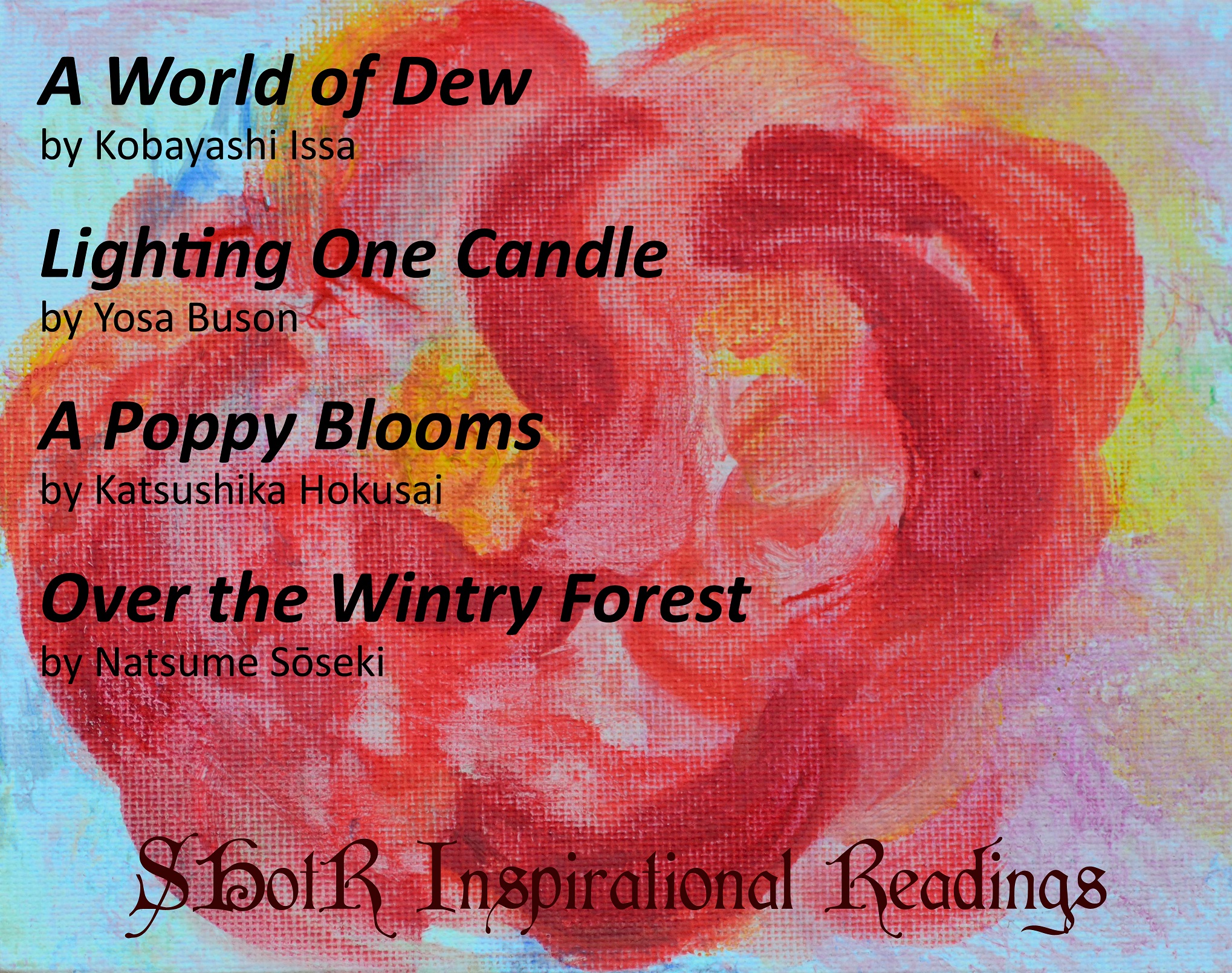
Kobayashi Issa (15 June 1763 – 05 January 1828) was a Japanese poet and lay Buddhist priest of the Jōdo Shinshū. He is known for his haiku poems and journals. He is better known as simply Issa, a pen name meaning Cup-of-tea (lit. one [cup of] tea). Issa is regarded as one of the Great Four haiku masters in Japan, along with Bashō, Buson, and Shiki. Issa was the first son of a farmer family of Kashiwabara. Issa’s mother dies when he was only three years old; her death was the first of many hardships he suffered in his 65 years. After his mother’s death, he was cared for by his grandmother, who doted on him. Issa’s life again changed when he was eight years old, his father married again. Issa’s half-brother was born two years later. His beloved grandmother died when Issa was 14, and he felt further estranged at home. He was a lonely, moody boy who preferred to wander the fields. His attitude did not please his stepmother, who, according to biographer/translator Lewis Mackenzie, was a “tough-fibred ‘managing’ woman of hard-working peasant stock.” Issa was sent to Edo (present-day Tokyo) by his father one year later to eke out a living; nothing of the next ten years of his life is known for certain. His name was associated with Kobayashi Chikua of the Nirokuan haiku school, but their relationship is not clear. Over the years, Issa wandered through Japan and fought over his inheritance with his stepmother (his father died in 1801); he wrote a diary, now called Last Days of Issa’s Father. After years of legal wrangles, Issa managed to secure rights to half of the property his father left., and he returned to his native village at the age of 49, and soon married his first wife, Kiku (Issa married two other women later in life). After a brief period of bliss, tragedy returned: the couple’s first-born child died shortly after his birth. A daughter died less than two-and-a-half years later, inspiring Issa to write this haiku (translated by Lewis Mackenzie):
This dewdrop world –
Is a dewdrop world,
And yet, and yet . . .
A third child died in 1820, and then Kiku fell ill and died in 1823, when Issa was 60. He wrote:
Outliving them,
Outliving them all,
Ah, the cold!
He died on 05 January 1828 (variously, 1827), in his native village.
Yosa Buson or Yosa no Buson (1716 – 17 January 1784) was a Japanese poet and painter of the Edo period. Along with Bashō and Issa, Buson is considered among the greatest poets of the Edo Period. Buson was born in the village of Kema in Settsu Province (now Kema-chō, Miyakojima Ward in Osaka city). Around the age of 20, Buson moved to Edo (now Tokyo) and learned poetry under the tutelage of the haikai master Hayano Hajin. After Hajin died, Buson moved to Shimōsa Province (modern-day Ibaraki Prefecture). Following in the footsteps of his idol, Matsuo Bashō, Buson travelled through the wilds of northern Honshū that had been the inspiration for Bashō’s famous travel diary, Oku no Hosomichi (The Narrow Road to the Interior). Buson published his notes from the trip in 1744, marking the first time he published under the name Buson. After travelling through various parts of Japan, Buson settled down in the city of Kyoto at the age of 42. Around this time, he began to write under the name of Yosa, which he took from his mother’s birthplace (Yosa in the province of Tango). Buson married at the age of 45 and had one daughter, Kuno. From this point on, he remained in Kyoto, writing and teaching poetry. In 1770, he assumed the haigō (haiku pen name) of Yahantei (Midnight Studio), which had been the pen name of his teacher Hajin. Buson died at the age of 68 and was buried at Konpuku-ji in Kyoto.
Katsushika Hokusai (c. 31 October 1760 – 10 May 1849), known as Hokusai, was a Japanese artist, ukiyo-e painter, and printmaker of the Edo period. Hokusai is best known for the woodblock print series Thirty-Six Views of Mount Fuji which includes the internationally iconic print The Great Wave off Kanagawa. Hokusai created the monumental Thirty-Six Views of Mount Fuji both as a response to a domestic travel boom in Japan and as part of a personal obsession with Mount Fuji. It was this series, specifically The Great Wave off Kanagawa and Fine Wind, Clear Morning, that secured his fame both in Japan and overseas. Hokusai’s work transformed the ukiyo-e artform from a style of portraiture largely focused on courtesans and actors into a much broader style of art that focused on landscapes, plants, and animals. Hokusai worked in various fields besides woodblock prints, such as painting and producing designs for book illustrations, including his own educational Hokusai Manga, which consists of thousands of images of every subject imaginable over fifteen volumes. Starting as a young child, he continued working and improving his style until his death. In a long and successful career, he produced over 30,000 paintings, sketches, woodblock prints, and images for picture books in total. Innovative in his compositions and exceptional in his drawing technique, Hokusai is considered one of the greatest masters in the history of art. He died on 10 May 1849, aged 88, and was buried at the Seikyō-ji in Tokyo (Taito Ward). A haiku he composed shortly before his death reads:
Though as a ghost,
I shall lightly tread,
the summer fields.
Natsume Sōseki, born Natsume Kin’nosuke (9 February 1867 – 9 December 1916), was a Japanese novelist, best known around the world for his novels Kokoro, Botchan, I Am a Cat, and his unfinished work, Light and Darkness. He was also a scholar of British literature and composer of haiku, kanshi, and fairy tales. Sōseki’s life was challenging: he was an unwanted child, born to his 40-year-old mother and his 53-year-old father; they already had five children. Having another child late in life created family insecurity and was in some ways a disgrace to the Natsume family. In 1868, Sōseki was adopted by a childless couple, Shiobara Masanosuke and his wife, and they raised him until the age of nine, when they divorced and he was returned to his biological family. Sōseki was welcomed by his mother but regarded as a nuisance by his father. His mother died when he was fourteen, and his two eldest brothers died in 1887, intensifying his sense of insecurity. Sōseki’s desire to become an author arose when he was about fifteen when he told his older brother about his interest in literature, but his family disapproved so he studied architecture. In 1887, Sōseki met Masaoka Shiki, who gave him encouragement on the path to becoming a writer. Shiki tutored him in the art of composing haiku. From that point on, Sōseki began signing his poems with the name Sōseki, which is a Chinese idiom meaning stubborn. About 60 of his works have been translated into more than 30 languages. From 1984 until 2004, his portrait appeared on the front of the Japanese 1000 yen note.

Matsuo Bashō (1644 – November 28, 1694) was the most famous poet of the Edo period in Japan. During his lifetime, Bashō was recognized for his works in the collaborative haikai no renga form; today, he is recognized as the greatest master of haiku (then called hokku). He is also well known for his travel essays beginning with Records of a Weather-Exposed Skeleton (1684), written after his journey west to Kyoto and Nara. Matsuo Bashō’s poetry is internationally renowned, and, in Japan, many of his poems are reproduced on monuments and traditional sites.
Although Bashō is famous in the West for his hokku, he himself believed his best work lay in leading and participating in renku renga). He is quoted as saying, Many of my followers can write hokku as well as I can. Where I show who I really am is in linking haikai verses.
In 1865, when Bashō returned to Edo from a journey to Mount Fuji, Ueno, and Kyoto, the poems from his journey were published as Account of Exposure to the Fields (Nozarashi kikō).
In early 1686 he composed one of his best-remembered haiku:
an ancient pond
a frog jumps in
the splash of water
Historians believe this poem became instantly famous: in April, the poets of Edo gathered at the bashō hut for a haikai no renga contest on the subject of frogs that seems to have been a tribute to Bashō’s hokku, which was placed at the top of the compilation. Bashō stayed in Edo, continuing to teach and hold contests, with an excursion in the autumn of 1687 when he traveled to the countryside for moon watching, and a longer trip in 1688 when he returned to Ueno to celebrate the Lunar New Year. At home in Edo, Bashō sometimes became reclusive: he alternated between rejecting visitors to his hut and appreciating their company. Bashō’s private planning for another long journey, to be described in his masterwork Oku no Hosomichi, or The Narrow Road to the Deep North, culminated on 16 May 1689, when he left Edo with his student and apprentice Kawai Sora on a journey to the Northern Provinces of Honshū. He edited and redacted his manuscript of his journey for three years, writing the final version in 1694 as The Narrow Road to the Interior (Oku no Hosomichi). The first edition was published posthumously in 1702. It was an immediate commercial success and many other itinerant poets followed the path of his journey. On his return to Edo in the winter of 1691, he made a living from teaching and appearances at haikai parties until late August 1693, when he shut the gate to his bashō hut and refused to see anybody for a month. Finally, he relented after adopting the principle of karumi or “lightness”, a semi-Buddhist philosophy of greeting the mundane world rather than separating himself from it. Bashō left Edo for the last time in the summer of 1694, spending time in Ueno and Kyoto before his arrival in Osaka. He became sick with a stomach illness and died peacefully, surrounded by his disciples. Although he did not compose any formal death poem on his deathbed, the following, being the last poem recorded during his final illness, is generally accepted as his poem of farewell:
falling sick on a journey
my dream goes wandering
over a field of dried grass
In 1793, Bashō was deified by the Shinto bureaucracy, and for a time criticizing his poetry was literally blasphemous. In the late 19th century, this period of unanimous passion for Bashō’s poems came to an end. Masaoka Shiki was instrumental in making Bashō’s poetry accessible in English, and to leading intellectuals and the Japanese public at large. Shiki invented the term haiku (replacing hokku) to refer to the freestanding 5–7–5 form that he considered the most artistic and desirable part of the haikai no renga. The 20th century saw translations of Bashō’s poems into other languages around the world. The position of Bashō in Western eyes as the haiku poet par excellence gives great influence to his poetry: Western preference for haiku over more traditional forms such as tanka or renga have rendered archetypal status to Bashō as Japanese poet and haiku as Japanese poetry. Some western scholars even believe that Bashō invented haiku. The impressionistic and concise nature of Bashō’s verse greatly influenced Ezra Pound, the Imagists, and poets of the Beat Generation. Two of Bashō’s poems were popularized in the short story Teddy written by J. D. Salinger and published in 1952 by The New Yorker magazine. In 1979, the International Astronomical Union named a crater found on Mercury after Bashō.
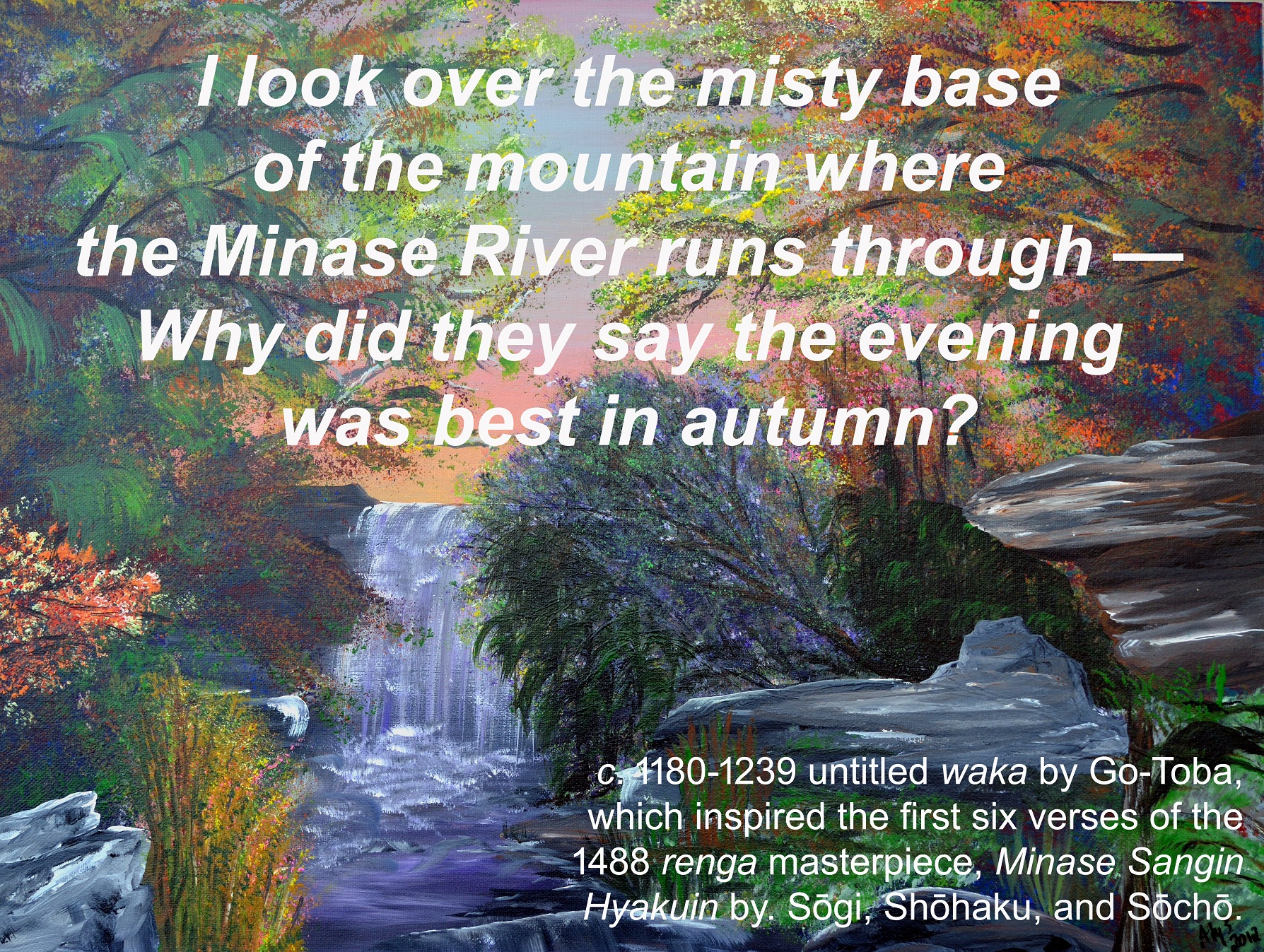
The Minase Sangin Hyakuin (1488) is a famous renga masterpiece written by Sōgi (1421-1502), Shōhaku (1443-1527), and Sōchō (1448-1632). The first verse (by Sōgi) was inspired by a much older work (c. 1200), a waka by retired emperor Go-Toba (1180-1239). Go-Toba (August 6, 1180 – March 28, 1239), known as Emperor Go-Toba (Go-Toba-tennō,) was the 82nd emperor of Japan, according to the traditional order of succession. His reign spanned the years from 1183, when he took the throne at age three, through 1198. In 1198, at the age 18, Go-Toba abdicated in favor of his son, Emperor Tsuchimikado. Go-Toba reigned as cloistered Emperor through the reigns of three emperors, from 1198 until 1221. He developed skills as a calligrapher, painter, musician, poet, critic, and editor. Go-Toba’s greatest contribution to literature is the Shin Kokinshū (The New Anthology of Ancient and Modern Waka), which Japan considers one of three major influential waka anthologies, along Man’yōshū and Kokin Wakashū. Go-Toba ordered the creation of the Shin Kokinshū and was an editor. He revived the Office of Waka and made it the headquarters of the edition. Go-Toba held many utakai (waka parties) and utaawase (waka competitions). In 1221, the shōgun installed Go-Toba’s three-year-old grandson, Emperor Chūkyō, as emperor, but Go-Toba staged a rebellion in an attempt to reclaim the throne and overthrow the Kamakura shogunate. Known as the Jōkyū War (after the era in which it occurred), Samurai around Kyōto who were against the Shogunate supported him, but he did not have the support of other samurai, and his rebellion was defeated. His grandson Chūkyō was replaced as emperor by one of Go-Toba’s nephews, Go-Horikawa. After the rebellion Go-Toba was exiled to the Oki Islands, where, during 18 years of exile, he recited hundreds of waka and edited anthologies of his own wakas and of a private edition of Shin Kokinshū, from which he removed about 400 wakas found in the former edition, which had been officially declared complete in 1204, with further official edits finished in 1216. Go-Toba declared his private edition should be authentic, but today the 1216 version is considered the authentic edition. His edition is today called Oki-bon Shin Kokinshū (Oki edition). It is likely that during his exile he also wrote his Go-Toba no in gokuden (Secret Teachings), a short work on aesthetic criticism; the Secret Teachings are particularly valuable as a major source on Go-Toba’s complicated relationships with his former client, the greatest poet of the age – Fujiwara no Teika. One of Go-Toba’s 31-syllable poems was chosen by Fujiwara no Teika as Number 99 in the popular anthology Hyakunin Isshu. Go-Toba died in exile at age 59 in the Oki Islands, where he was buried.
Sōgi (1421 – 1502) was a Japanese poet who came from a humble family from the province of Kii or Ōmi. Sōgi was a Zen monk from the Shokokuji temple in Kyoto and he studied poetry, both waka and renga. In his 30s he became a professional renga poet. During his travels to almost every corner of Japan, he was welcomed by the most powerful political, military, and literary figures of his day, and attracted more disciples than any other poet of his generation. He is best-remembered for his renga, wherein two or more poets collaborate to create a poem by writing alternate stanzas. In Sōgi’s day, such renga were typically 100 verses in length. Arising from the court tradition of waka, renga was cultivated by the warrior class, courtiers, and commoners. Sōgi is considered the greatest master of renga, his two most famous works being Three Poets at Minase (1488; Minase Sangin Hyakuin: A Poem of One Hundred Links Composed by Three Poets at Minase) and Three Poets at Yuyama (Yuyama sangin hyakuin, 1491). He left more than 90 works of anthologies, diaries, poetic criticisms, and manuals. Before his death, he wrote Sōgi Alone, which includes his memoirs. Sōgi died in Hakone on September 1, 1502.
Botanka Shōhaku (1443 – 1527) was from an aristocrat family, loved tree peony, incense, and sake, and had an elegant lifestyle. Shōhaku was characterized by his whimsical character: it is said that he made long journeys riding an ox and that he composed his works along the way. He studied under Sōgi, and by order of Emperor Gokashiwabara, Shōhaku established a standard form for renga. Renga composition alternates two types of verse (ku): the first type of ku is composed of 17 morae in three lines of 5-7-5 morae (sound units), and the second type of ku is composed of 14 morae, divided into two lines of 7. Each poet who participates in the renga continues the composition by inserting alternately one of the two types of strophe. Shōhaku and his teacher, the poet and the Buddhist monk Sōgi, and Sōchō (another student of Sōgi) collaborated on the collection of renga entitled Minase sangin hyakuin, considered one of the greatest works of the renga genre. Shōhaku also wrote a commentary on Ise monogatari (Tales of Ise), entitled Ise monogatari shōbunshō and an academic treatise on renga poetry, Shōhaku kōden. Botanka Shōhaku died at age 84, in 1527.
Sōchō (1448 – 1632) was a student of renga master and Buddhist monk Sōgi. Sōchō became a well-known Japanese renga poet and chronicler of the late Muromachi period (1338–1573). Sōgi, Sōchō, and Shōhaku wrote Minase sangin hyakuin. After the death of Sōgi in 1502, Sōchō wrote the narrative Sōgi shūen ki (An Account of the Last Moments of Sōgi) to commemorate his master. His later works included Sōchō shuki (1522–27; Memoirs of Sōchō), in which he used renga and haikai (comic renga) to describe his travels during that period, and Sōchō nikki (1530–31; Sōchō Diary). Sōchō died at age 44, on 11 April 1532.

Harryette Mullen (1953 – ) was born in Florence, Alabama, and raised in Fort Worth, Texas. She has earned a B.A. in English from the University of Texas at Austin and a Ph.D. from the University of California, Santa Cruz. Early in her career as a poet, she worked in the Artists in Schools program sponsored by the Texas Commission on the Arts, and for six years she taught literature at Cornell University in Ithaca, New York. Her most recent books include Urban Tumbleweed (Graywolf Press, 2013), Blues Baby: Early Poems (Bucknell University Press, 2002), and Sleeping with the Dictionary (University of California Press, 2002), a finalist for the National Book Award, the National Book Critics Circle Award, and the Los Angeles Times Book Award in poetry. Three of her earliest collections – all published in the 1990s – were collected into Recyclopedia (Graywolf Press, 2006), which received a PEN Beyond Margins Award. In 2013, Mullen published the chapbook Broken Glish: Five Prose Poems by Harryette Mullen with The Center For Book Arts. Mullen’s work is driven by wordplay and allusion, centered in a larger tradition of African American writing and representations of black women. The 2009 recipient of the Academy of American Poets Fellowship, Mullen is also the recipient of grants from the Foundation for Contemporary Arts, the Helene Wurlitzer Foundation of New Mexico, and the Texas Institute of Letters. Mullen’s other honors include a Gertrude Stein Award in Innovative American Poetry and the Jackson Poetry Prize, as well as a John Simon Guggenheim Memorial Foundation Fellowship; a Rockefeller Fellowship from the Susan B. Anthony Institute for Women’s Studies at the University of Rochester; and a United States Artist Fellowship. She teaches African American literature and creative writing in the English Department at the University of California, Los Angeles.
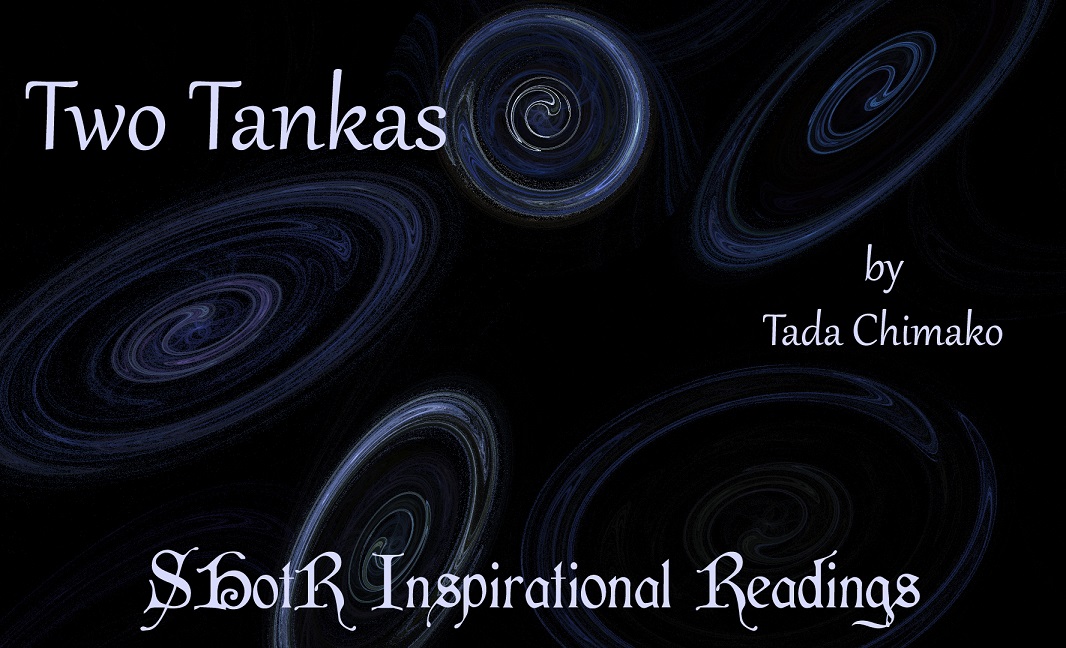
Two Tankas: A Spray of Water: Tanka [the round spoon] and Person of the Playful Star: Tanka [I listen to songs] by Tada Chimako
Image: Universe (fractal) created by Holzcave
Tada Chimako (1930 – 2003) was born in Kita-Kyūshū City, Fukuoka, Japan. She spent most of her youth in Tokyo, during the tumultuous years of the second World War. Tada attended college at Tokyo Women’s Christian University where she studied French literature and formed friendships with other poets and intellectuals. Upon graduation, she enrolled in Keio Gijiku University to further her studies of literature. In 1954, Tada became a member of Mitei, a magazine formed by poets and writers of the Japanese avant-garde. In 1956, she married and moved to Kobe, a quiet town in Western Japan at the foot of Mt. Rokko. That year, Tada’s first book of poems, Hanabi was published; she wrote in relative isolation outside of city life. She authored over 15 books of poetry in Japanese and was a prominent translator of French literature, especially the poetry of Marguerite Yourcenar ~ Tada’s Japanese translation of Yourcenar’s Memoires d’Hadrien was published to critical acclaim. In her own work, Tada referenced Greek, Latin, Chinese, and Japanese classical literature, and the psychology of women in both mythology and the modern world. Her work took on several different poetic forms, including prose poetry, tanka, and haiku, expressing fluidity between classical and contemporary styles. Tada published several books of essays on cultural theory, ancient thought, and mythology, and was the recipient of several Japanese awards, including the Modern Poetry Women’s Prize for her book, Hasu Kuibito, the Kobe Municipal Cultural Prize for her contributions to local culture, and the Hanatsubaki Prize for Modern Poetry for Kawa no hotori ni. In the 1970s Tada taught French and European literary history at Kobe College. In 1986, she served as Poet-in-Residence at Oakland University in Michigan where she taught modern Japanese literature. In 1987, Tada was an instructor of French literature at Eichi University in Amagasaki, where she also went on to teach religious studies in the University’s graduate school up until two years before her death in 2003.

Takuboku Ishikawa (February 20, 1886 – April 13, 1912) was a Japanese poet. Well known as both a tanka and “modern-style” (shintaishi) or “free-style” (jiyūshi) poet, he began as a member of the Myōjō group of naturalist poets but later joined the “socialistic” group of Japanese poets and renounced naturalism. He died of tuberculosis at the age of 26. After his death, his second collection of tankas, titled Kanashiki Gangu (grieving toys), was published.
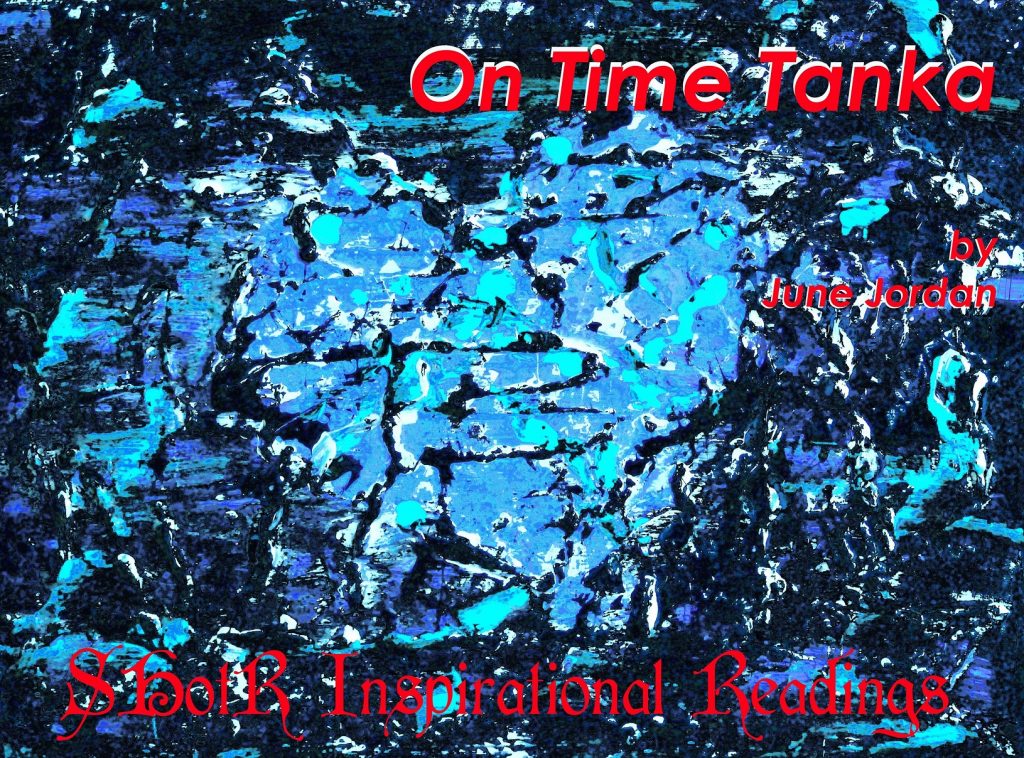
About This Poem: “There are certain poets whose works breathe and dream far beyond the first birth of their language. June Jordan’s ‘On Time Tanka’ fills an old form with rage and Black love at once. To defy any form, box, grave, or body inflicted as a definition speaks to the core of Jordan’s craft and identity. The rhythm of this poem gives to us Jordan’s unmitigated powers as though she is, as she will always be, standing up for the lives and rights we too must dream, must demand. In this poem language and action are immediate and urgent as the times we are confronting. Against that perpetual confrontation, June Jordan lived, writing furiously for herself and for those she knew would be coming through the violence of America. In the name of listening and truth-telling, the poetry of June Jordan resists memory and can never be silenced.“ —Rachel Eliza Griffiths
June Jordan (1936 – 2002) was born in New York City on July 9, 1936. She attended Barnard College. She was an activist, poet, writer, teacher, and prominent figure in the civil rights, feminist, antiwar, and LGBTQ movements of the twentieth century. Her numerous books of poetry include The Essential June Jordan (Copper Canyon Press, 2021), We’re On: A June Jordan Reader (Alice James Books, 2017), Directed by Desire: The Collected Poems (Copper Canyon Press, 2007), Kissing God Goodbye: Poems, 1991-1997 (Anchor Books, 1997), Naming Our Destiny: New and Selected Poems (Thunder’s Mouth Press, 1989), Living Room: New Poems (Thunder’s Mouth Press, 1985), Passion: New Poems, 1977–1980 (Beacon Press, 1980), and Things That I Do in the Dark: Selected Poetry (Random House, 1977). Jordan also authored children’s books, plays, the memoir Soldier: A Poet’s Childhood (Basic/Civitas Books, 2000), and the novel His Own Where (Crowell, 1971), which was nominated for the National Book Award. Her collections of political essays include Affirmative Acts: Political Essays (Anchor Books, 1998) and On Call: Political Essays (South End Press, 1985). Of her career, Toni Morrison writes, “I am talking about a span of forty years of tireless activism coupled with and fueled by flawless art.” Jordan received a Rockefeller Foundation grant, the National Association of Black Journalists Award, and fellowships from the Massachusetts Council on the Arts, the National Endowment for the Arts, and the New York Foundation for the Arts. Jordan taught at the University of California, Berkeley, where she founded Poetry for the People. She died of breast cancer on June 14, 2002, in Berkeley, California.

Carl Sadakichi Hartmann (c.1860 – 1944) was an American art and photography critic, notable anarchist, and poet of German and Japanese descent. He born on the artificial island of Dejima, Nagasaki, to a Japanese mother, who died soon after childbirth, and a German businessman. Hartmann was raised in Germany, and he arrived in Philadelphia in 1882, becoming an American citizen in 1894. An important early participant in modernism, Hartmann was friends with diverse figures like Walt Whitman, Stéphane Mallarmé, and Ezra Pound. His poetry was deeply influenced by the Symbolists and orientalist literature. Hartmann wrote some of the earliest English language haiku. His poetry collections include Drifting Flowers of the Sea and Other Poems (1904), Naked Ghosts: Four Poems (1925), Tanka and Haiku: 14 Japanese Rhythms (G. Bruno, 1915), and My Rubaiyat (1913). In his later years, Hartmann lived in Hollywood and by 1942, he lived on his daughter’s ranch outside Banning, California. Due to his age and health conditions, Hartmann was one of only a few Japanese Americans on the West Coast to avoid the mass incarceration during World War II, although the FBI and local officials visited the ranch often to conduct investigations. In November 1944, he died while visiting another daughter in St. Petersburg, Florida. A collection of his papers is held at the University of California, Riverside, including correspondence related to his obtaining permission to remain in Banning during the war.

John Clare (13 July 1793 – 20 May 1864) was an English poet. The son of a farm labourer, he became known for his celebrations of the English countryside and sorrows at its disruption. His poetry underwent major re-evaluation in the late 20th century: he is now often seen as a major 19th-century poet. Clare was constantly torn between the two worlds of literary London and his often illiterate neighbors; between the need to write poetry and the need for money to feed and clothe his children. His health began to suffer, and he had bouts of severe depression, which became worse after his sixth child was born in 1830 and as his poetry sold less well. His last work, the Rural Muse (1835), was noticed favorably by Christopher North and other reviewers, but was not enough to support his wife and seven children. Clare’s mental health began to worsen., as his alcohol consumption steadily increased along with his dissatisfaction with his own identity. Clare’s behavior became more erratic. A notable instance of this behaviour was demonstrated in his interruption of a performance of The Merchant of Venice, in which Clare verbally assaulted Shylock. He was becoming a burden to his wife and his family, and in July 1837, on the recommendation of his publishing friend, John Taylor, Clare went of his own volition to Dr Matthew Allen’s private asylum High Beach near Loughton, in Epping Forest. Taylor had assured Clare that he would receive the best medical care. Clare was reported as being “full of many strange delusions” ~ he believed himself to be a prize fighter and that he had two wives, Patty and Mary. He started to claim he was Lord Byron. During his first few asylum years in High Beach, Essex (1837–41), Clare re-wrote famous poems and sonnets by Lord Byron. Child Harold, his version of Byron’s Childe Harold’s Pilgrimage, became a lament for past lost love, and Don Juan, A Poem became an acerbic, misogynistic, sexualized rant redolent of an ageing Regency dandy. Clare also took credit for Shakespeare’s plays, claiming to be the Renaissance genius himself. “I’m John Clare now,” the poet claimed to a newspaper editor, “I was Byron and Shakespeare formerly.” In 1841, Clare absconded from the asylum, walking some 90 miles to his home, believing that he was to meet his first love Mary Joyce; Clare was convinced that he was married to both her and his actual wife Martha (“Patty”), with children by both women. He did not believe Mary Joyce’s family when they told him she had died accidentally three years earlier in a house fire. He remained free, mostly at home in Northborough, for the five months following, but eventually Patty called the doctors. Between Christmas and New Year in 1841, Clare was committed to the Northampton General Lunatic Asylum. Upon Clare’s arrival at the asylum, the accompanying doctor, Fenwick Skrimshire, who had treated Clare since 1820, completed the admission papers. To the enquiry “Was the insanity preceded by any severe or long-continued mental emotion or exertion?”, Dr Skrimshire entered: “After years of poetical prosing.” Clare remained there for the rest of his life under the humane regime of Dr Thomas Octavius Prichard, who encouraged and helped him to write. Here he wrote possibly his most famous poem, I Am. It was in this later poetry that Clare developed a distinctive voice, an unmistakable intensity and vibrance.John Clare died of a stroke on 20 May 1864, in his 71st year. His remains were returned to Helpston for burial in St Botolph’s churchyard, where he had expressed a wish to be buried.
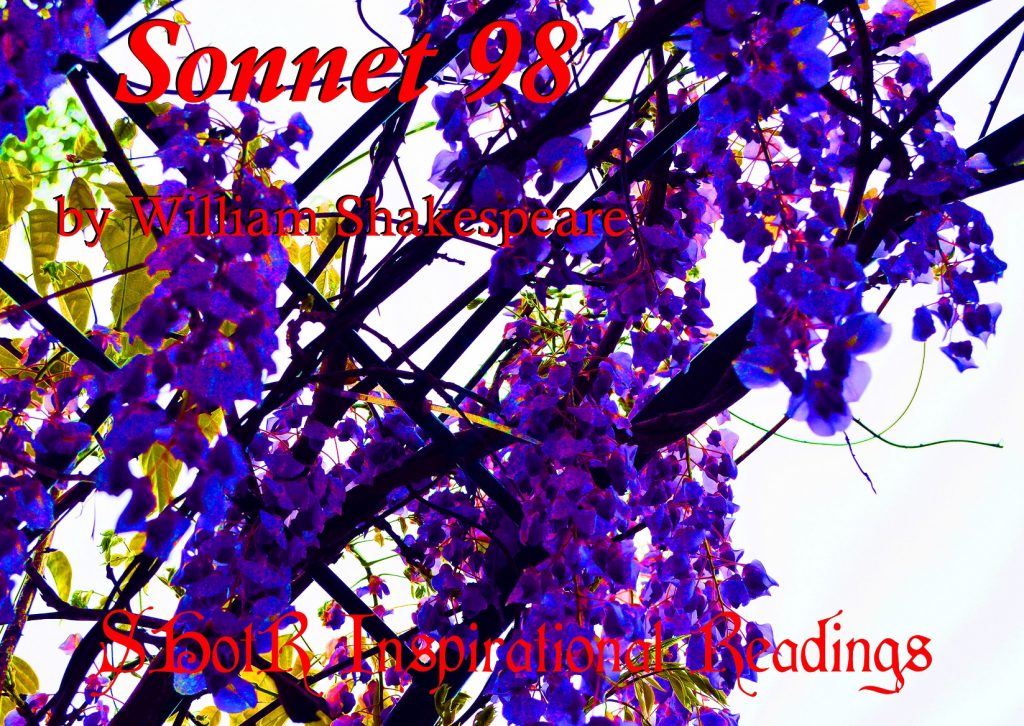
William Shakespeare (1564 – 1616) wrote 154 sonnets, which were apparently composed during a period of ten or a dozen years starting in about 1592-1593. They were published by Thomas Thorpe in 1609. Unlike the narrative poems, they enjoyed only limited commercial success during Shakespeare’s lifetime, and no further edition appeared until Benson’s in 1640. The 154 sonnets are conventionally divided between the “young man” sonnets (1-126) and the “dark lady” sonnets (127-152), with the final pair often seen as an envoy or coda to the collection. Shakespeare employs the conventional English sonnet form: three quatrains capped with a couplet. Drama is conjured within individual poems, as the speaker wrestles with some problem or situation; it is generated by the juxtaposition of poems, with instant switches of tone, mood, and style, and it is implied by cross-references and interrelationships within the sequence as a whole. Shakespeare’s exact birth date remains unknown; he was baptized in Holy Trinity Church in Stratford-upon-Avon on April 26, 1564, He was his mother’s third child, and the first to survive infancy. Scholars believe that he was born on April 23rd, given the era’s convention of baptizing newborns on their third day. Shakespeare died on April 23, 1616, on what may have been his 52nd birthday.

Christina Georgina Rossetti (5 December 1830 – 29 December 1894) was an English poet who wrote romantic, devotional, and children’s poems. Rossetti’s parents were Gabriele Rossetti, a poet and a political exile from Vasto, Abruzzo (Italy) and Frances Polidori, the sister of Lord Byron’s friend and physician, John William Polidori. Rossetti had two brothers and a sister: brother Dante Gabriel became a poet and an influential artist; brother William Michael and and Maria both became writers. Christina was the youngest, a lively child. Before she learned to write, she dictated her first story to her mother. When she was 12 years old (1842), Rossetti began writing down and dating her poems. In 1847 she began experimenting with verse forms such as sonnets, hymns, and ballads, using narratives from the Bible, folk tales, and the lives of saints. Her early pieces often feature meditations on death and loss, in the Romantic tradition. When she was 14, Rossetti suffered a nervous breakdown and left school; she suffered henceforth from bouts of depression and related illnesses. It was during that time she, her mother, and her sister became absorbed in the Anglo-Catholic movement that developed in the Church of England, and religious devotion became important in Rossetti’s life. Rossetti published her first two poems (Death’s Chill Between, Heart’s Chill Between) in the Athenaeum in 1848, when she was 18. She was engaged three times: first in her late teens to the painter James Collinson; he, like her brothers Dante and William, was a founding members of the avant-garde artistic group, the Pre-Raphaelite Brotherhood (founded 1848). Their engagement was broken in 1850 when he reverted to Catholicism. Under the pseudonym Ellen Alleyne, Rossetti contributed to the literary magazine, The Germ, published by the Pre-Raphaelites from January to April 1850 (it was edited by her brother William), marking the beginning of her public career. In 1853, due to the Rossetti family’s financial difficulties, Christina helped her mother keep a school in Fromefield, Frome (Somerset, England), but it was not a success. In 1854 mother and daughter returned to London, where Rossetti’s long-ill father died. She became involved with linguist Charles Cayley, but then she declined to marry him for religious reasons. The third offer of marriage came from the painter John Brett, whom Rossetti turned down. Rossetti’s more critical reflections on the artistic movement, initiated by her brother Dante Garbriel, began with her 1856 poem In the Artist’s Studio, in which she reflects on seeing multiple paintings of the same model. For Rossetti, the artist’s idealized vision of the model overwhelms his work, until “every canvas means/the one same meaning.” Dinah Roe, in her introduction to the Penguin Classics collection of Pre-Raphaelite poetry, argues that this critique of Rossetti’s brother and similar male artists is not so much about “the objectification of women” as it is about “the male artist’s self-worship”. Rossetti’s famous collection, Goblin Market and Other Poems, was published in 1862, when she was 31. It received widespread critical praise, establishing her as the foremost female poet of the time. The title poem is one of Rossetti’s best known. Although it is ostensibly about two sisters’ misadventures with goblins, critics have interpreted the piece in a variety of ways, seeing it as an allegory about temptation and salvation, a commentary on Victorian gender roles and female agency, and a work about erotic desire and social redemption. Rossetti sat for several of her brother Dante Gabriel’s most famous paintings: in 1848, she was the model for the Virgin Mary in his first completed oil painting, The Girlhood of Mary Virgin, which was the first work he inscribed with the initials PRB to signify the Pre-Raphaelite Brotherhood, and in 1849 Rossetti modelled for her brother’s two paintings, the Annunciation and Ecce Ancilla Domini. A line from her poem Who shall deliver me? inspired the famous painting by Fernand Khnopff called I lock my door upon myself. In 1849 she became seriously ill again, suffering from depression. Rossetti was a volunteer worker from 1859 to 1870 at the St Mary Magdalene house of charity in Highgate, a refuge for former prostitutes, and some scholars suggest that Goblin Market might have been inspired by the “fallen women” she came to know there. Scholars have found feminist themes in her poetry, but in life, Rossetti was ambivalent about women’s suffrage. That said, she opposed slavery (in the American South), cruelty to animals (in the prevalent practice of animal experimentation), and the exploitation of girls in under-age prostitution. Sometime around 1857 she had a major religious crisis. Rossetti continued to write and publish for the rest of her life, focusing mainly on devotional writing and children’s poetry. Rossetti was diagnosed with Graves’ disease in 1872, after suffering a near-fatal attack in the early 1870s. In 1892, she wrote The Face of the Deep, a book of devotional prose, and the next year Rossetti oversaw publication of a new and enlarged edition of Sing-Song. She developed breast cancer in 1893, and the tumor was removed; there was a recurrence in September 1894. Rossetti died on 29 December 1894, in Torrington Square, Bloomsbury (London); the location is marked with a stone tablet. She is buried in Highgate Cemetery in north London.
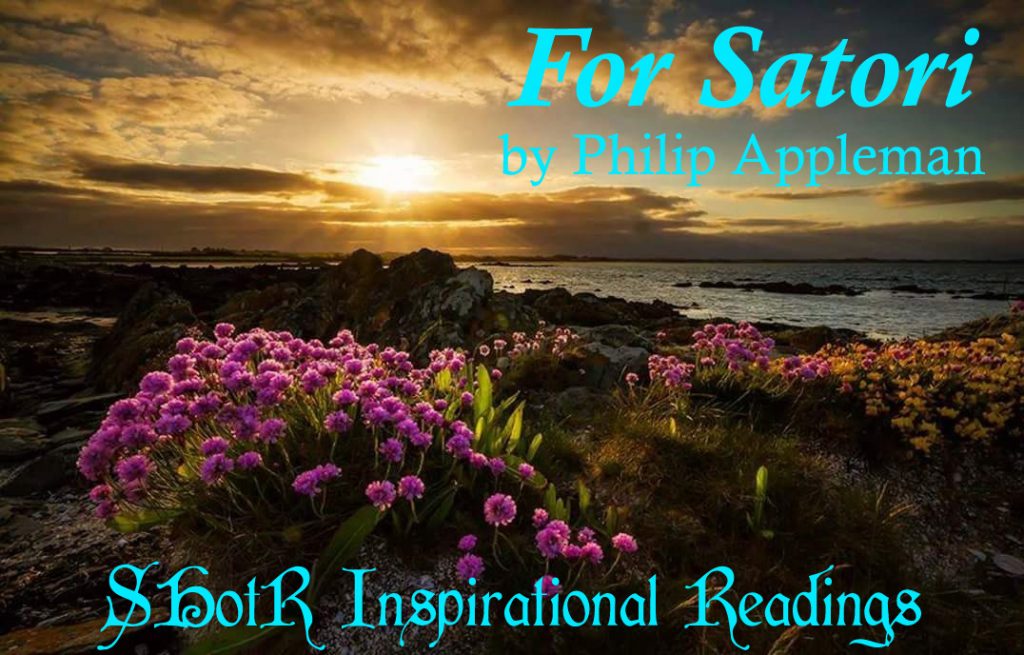
Philip D. Appleman (8 February 1926 – 11 April 2020) was an American poet and writer. He was a Professor Emeritus in the Department of English at Indiana University, Bloomington. He published seven volumes of poetry, the first of which was Summer Love and Surf and the latest of which is Perfidious Proverbs (Humanity Books, 2011); three novels, including Apes and Angels (Putnam, 1989); and half a dozen nonfiction books, including the widely used Norton Critical Edition, Darwin and the Norton Critical Edition of Malthus’ Essay on Population. Appleman wrote many poems drawing on the work of Charles Darwin, and in 2003 he signed the Humanist Manifesto. His poetry and fiction won many awards, including a fellowship in poetry from the National Endowment for the Arts, the Castagnola Award from the Poetry Society of America, the Friend of Darwin Award from the National Center for Science Education, and the Humanist Arts Award of the American Humanist Association, and have appeared in scores of publications, including Harper’s Magazine, The Nation, New Republic, New York Times, Paris Review, Partisan Review, Poetry, Sewanee Review, and Yale Review. He gave readings of his poetry at the Library of Congress, the Guggenheim Museum, the Huntington Library, and many universities. He read several of his poems on the July 6, 2012, episode of Moyers & Company. He was a founding member of the Poets Advisory Committee of Poets House, New York, a former member of the governing board of the Poetry Society of America, and a member of the Academy of American Poets, PEN American Center, Friends of Poets & Writers, Inc., and the Authors Guild of America. Appleman died in April 2020 at the age of 94.

Thomas Hardy (2 June 1840 – 11 January 1928) was an English novelist and poet. A Victorian realist in the tradition of George Eliot, he was influenced both in his novels and in his poetry by Romanticism, including the poetry of William Wordsworth. Hardy was highly critical of much in Victorian society, especially on the declining status of rural people in Britain, like those from his native South West England. Initially, he gained fame as the author of novels such as Far from the Madding Crowd (1874), The Mayor of Casterbridge (1886), Tess of the d’Urbervilles (1891), and Jude the Obscure (1895). Hardy wrote poetry throughout his life and regarded himself primarily as a poet. In 1898 he published his first collection, Wessex Poems, a collection of poems written over 30 years. Although his poems were initially not as well received as his novels had been, Hardy is now recognized as one of the great poets of the 20th century, and his verse had influence on Robert Frost, W. H. Auden, Dylan Thomas, and Philip Larkin. Some of Hardy’s more famous poems are from Poems of 1912–13, part of Satires of Circumstance (1914), written following the death of his first wife Emma in 1912. They had been estranged for 20 years, and the lyric poems express deep “regret and remorse”. In 1914, Hardy married his secretary Florence Emily Dugdale, who was 39 years his junior. Hardy became ill with pleurisy in December 1927 and died on 11 January 1928, having dictated his final poem to his wife on his deathbed. The cause of death on his death certificate was cardiac syncope, with “old age” given as a contributing factor. Hardy’s funeral was on 16 January at Westminster Abbey: it was a controversial occasion because Hardy wanted his body to be interred in the same grave as his first wife, Emma, at Stinsford. His family and friends wanted to honor Hardy’s wishes; but his executor, Sir Sydney Carlyle Cockerell, insisted that Hardy be placed in Westminster Abbey’s famous Poets’ Corner. A compromise was reached: his ashes were buried in the Poets’ Corner and his heart was buried with Emma.
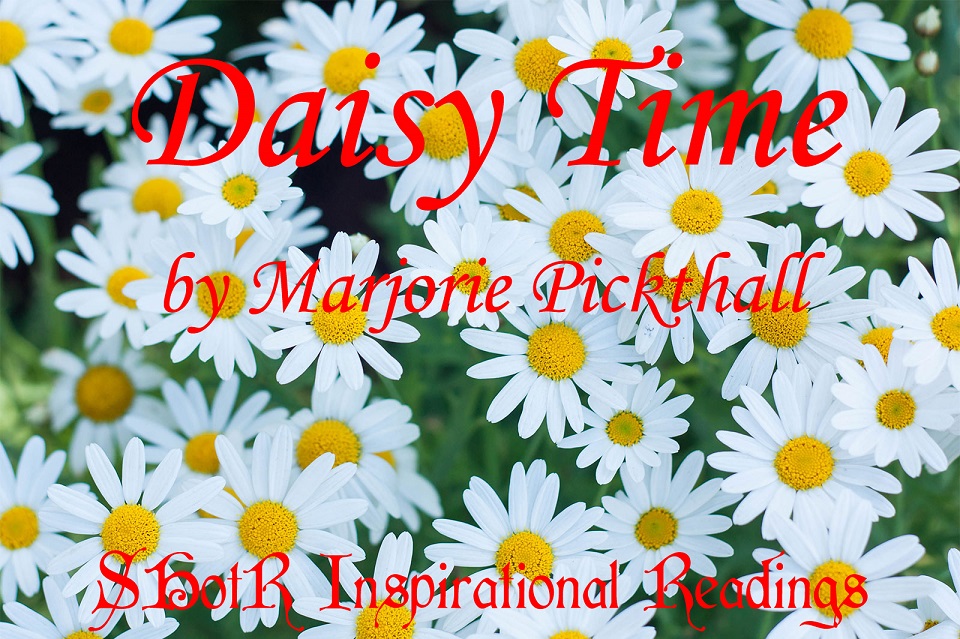
Marjorie Pickthall (1883 – 1922) was born on 14 September 1883 in Gunnersby, Middlesex, England. When she was six her family moved to Toronto; she was a precocious child and in her teens wrote some surprisingly well-crafted stories and poems. In 1898, at the age of fifteen, Pickthall sold her first story, Two Ears, to the Toronto Globe. Pickthall’s career began in earnest when she was in her early twenties. Between 1905 and 1908 she published three novels: Dick’s Desertion: A Boy’s Adventures in Canadian Forests; A Tale of the Early Settlement of Ontario (1905), The Straight Road (1906), and Billy’s Hero; or, The Valley of Gold (1908). All three appeared first as magazine serials, and they were all juvenile tales of adventure in frontier areas where good, embodied in a male hero, did battle with evil and always won. In the decade from 1913 to 1922 Pickthall produced five books: The Drift of Pinions (1913), her first book of verse; Little Hearts (1915), a historical romance set in eighteenth-century England; The Lamp of Poor Souls, and Other Poems (1916), a revised and enlarged version of The Drift of Pinions; The Bridge: A Story of the Great Lakes (1922), a novel; and The Wood Carver’s Wife and Later Poems (1922). It may be that overwork contributed to her death at the age of thirty-eight on 19 April 1922 in Vancouver. It is a sad irony that the two books that made Pickthall’s reputation appeared posthumously. Angels’ Shoes and Other Stories (1923) brings together many of her short stories. The book presents melodramatic adventures involving earthquakes, blizzards, love, mining, and outlaws in a variety of settings, including Canada, Italy, France, and Africa. The stories portray toughs or desperate men, but since Pickthall knew virtually nothing of outlaws or prospectors, her tales often lack a sense of reality. The second famous book is her Complete Poems (1927). The verses are gentle, dreamy, and musical yet somehow empty. She has nothing to say but she says it harmoniously. The world of her poetry, with its ivory towers, Persian lovers, and “amber bars” of sunlight, is not drawn from life but from her reading of romantic literature. Probably no other Canadian writer has suffered such a plunge in reputation as Marjorie Pickthall. Once she was thought to be the best Canadian poet of her generation; she had a gentle and refined sensibility and was skilled in traditional poetic technique, but her verse now seems dated. Her narratives hold historical interest however, and recent feminist criticism has begun to examine her career in different ways. Diana M. A. Relke, for example, probes the predicament Pickthall faced as a female writer, writing against (yet being judged by) the conventional male models of romanticism. Further criticism may well follow this lead, focusing more on the late feminist observations in The Wood Carver’s Wife and Later Poems than on the early lyrics of nature.

Billy Collins (b. 1941 –) was born in 1941 in New York City. He earned a BA from the College of the Holy Cross, and both an MA and PhD from the University of California-Riverside. In 1975 he cofounded the Mid-Atlantic Review with Michael Shannon. He has received fellowships from the National Endowment for the Arts, the Guggenheim Foundation, and the New York Foundation for the Arts and has taught at Columbia University, Sarah Lawrence, and Lehman College, City University of New York, where he is a Distinguished Professor. He is also Senior Distinguished Fellow of the Winter Park Institute in Florida, and a faculty member at the State University of New York-Stonybrook. Collins’s level of fame is almost unprecedented in the world of contemporary poetry: his readings regularly sell out, and he received a six-figure advance when he moved publishers in the late 1990s. He served two terms as the US poet laureate, from 2001-2003, was New York State poet laureate from 2004-2006, and is a regular guest on National Public Radio programs. In 2002, as US poet laureate, Collins was asked to write a poem commemorating the first anniversary of the fall of the Twin Towers of the World Trade Center on September 11. The reading was in front of a joint session of Congress held outside of Washington, DC. Though Collins published throughout the 1980s, it was his fourth book, Questions about Angels (1991), that propelled him into the literary spotlight. Collins’s subsequent work has been regularly lauded for its ability to connect with readers. John Taylor noted that Collins’s skillful, smooth style and inventive subject matter “helps us feel the mystery of being alive.” Taylor added: “Rarely has anyone written poems that appear so transparent on the surface yet become so ambiguous, thought-provoking, or simply wise once the reader has peered into the depths.” Collins has described himself as reader conscious: “I have one reader in mind, someone who is in the room with me, and who I’m talking to, and I want to make sure I don’t talk too fast, or too glibly. Usually I try to create a hospitable tone at the beginning of a poem. Stepping from the title to the first lines is like stepping into a canoe. A lot of things can go wrong. I think my work has to do with a sense that we are attempting, all the time, to create a logical, rational path through the day. To the left and right there are an amazing set of distractions that we usually can’t afford to follow. But the poet is willing to stop anywhere.”
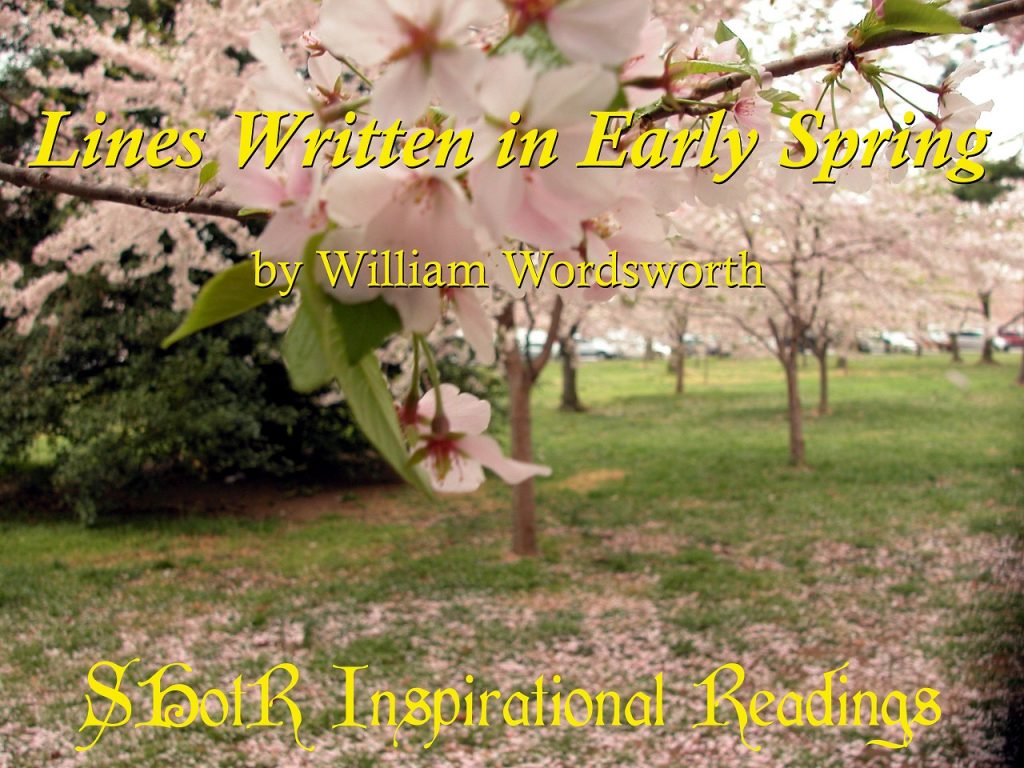
William Wordsworth (1770 – 1850) was one of the founders of English Romanticism and one its most central figures and important intellects. He is remembered as a poet of spiritual and epistemological speculation, a poet concerned with the human relationship to nature and a fierce advocate of using the vocabulary and speech patterns of common people in poetry. Wordsworth is best known for Lyrical Ballads, co-written with Samuel Taylor Coleridge, and The Prelude, a Romantic epic poem chronicling the “growth of a poet’s mind.” In 1843 Wordsworth was named poet laureate of England, though by this time he had for the most part quit composing verse. He revised and rearranged his poems, published various editions, and entertained literary guests and friends. When he died in 1850, he had for some years been venerated as a sage, his most ardent detractors glossing over the radical origins of his poetics and politics.

Edward Estlin “E. E.” Cummings (October 14, 1894 – September 3, 1962), often styled as e e cummings, was an American poet, painter, essayist, author, and playwright. He wrote approximately 2,900 poems, two autobiographical novels, four plays, and several essays. Often considered as one of the most important American poets of the 20th century, Cummings is associated with modernist free-form poetry, and use of idiosyncratic syntax and lower-case spellings. Cummings’ poems include controversial subject matter, including eroticism and ethnic slurs; he stated his work pointed out prejudices but did not condoned them. Cummings died of a stroke on September 3, 1962, at the age of 67 in New Hampshire. He is buried at Forest Hills Cemetery in Boston, Massachusetts. At the time of his death, Cummings was recognized as the second most widely read poet in the United States, after Robert Frost.
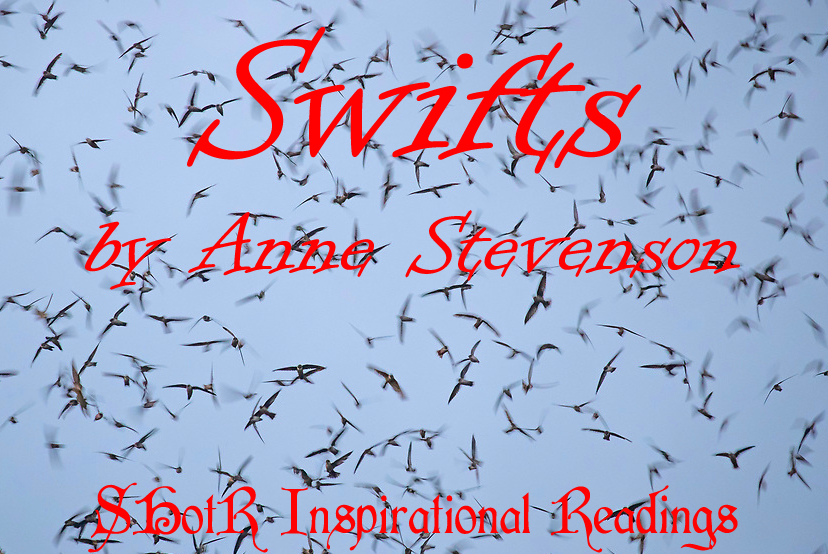
Anne Stevenson (1933 – 2020) was born in Cambridge, England, and moved between the United States and the United Kingdom numerous times during the first half of her life. While she considered herself an American, Stevenson qualified her status: “I belong to an America which no longer really exists.” Since 1962 she lived mainly in the UK, including Cambridge, Scotland, Oxford, and, most then North Wales and Durham. Initially a student of music, Stevenson earned her undergraduate and master’s degrees at the University of Michigan, where she studied with Donald Hall, who encouraged her to pursue poetry. Resistant to connections with any particular school of contemporary poetry, Stevenson honed her art apart from many of her peers but within the larger conversation of the form. As she says, “If I couldn’t overhear the rhythms and sounds established by the long, varied tradition of English poetry – say by Donne, Blake, Keats, Dickinson, Whitman, Frost – I would not be able to hear what I myself have to say. Poems that arise only from a shallow layer of adulterated, contemporary language are rootless. They taste to me like the mass-produced vegetables grown in chemicals for supermarkets.” Intersections and borders were common in Stevenson’s work, though the land on which they are drawn is often mutable or partially hidden. She was as comfortable in strict form as she was in free verse. In 2007 Stevenson was awarded the Lannan Lifetime Achievement Award for Poetry and the Poetry Foundation’s Neglected Masters Award. She has also received the Northern Rock Foundation Writer’s Award. Author of more than a dozen books of poetry and several books of prose (which include criticism, radio plays, essays, and biographies), Stevenson also edited two anthologies. Her biography of Sylvia Plath, Bitter Fame (1989), garnered critical and popular controversy for its sympathetic portrayal of Ted Hughes. Stevenson was a peer of Plath and Hughes, though as a new wife and mother, Stevenson led her life away from the community of those writers. Stevenson slowly lost her hearing, but her poetry continued to come first from sound. In a 2007 essay, she wrote, “Although I rarely write in set forms now, poems still come to me as tunes in the head. Words fall into rhythms before they make sense. It often happens that I discover what a poem is about through a process of listening to what its rhythms are telling me. Ever since I can remember, I have been aware of living at what E.M. Forster called ‘a slight angle’ to the universe,” she said, “I have always had to create my own angular environment or perish. But that’s the whole point about borders. It’s the best place from which to be able to see both sides.” Stevenson died from heart failure on 14 September 2020, at the age of 87.

Delmore Schwartz (1913 – 1966) was born in Brooklyn, New York, the son of Jewish Romanian immigrants, and attended a number of colleges and universities, including Columbia, the University of Wisconsin, New York University, where he earned a BA in philosophy, and Harvard, where he completed some graduate work and taught intermittently (his students included the poet Kenneth Koch). Schwartz moved to New York and began publishing in the 1930s, mainly in the Partisan Review, where he also worked as an editor, and with James Laughlin’s New Directions Press. Schwartz was lauded as a major talent while still in his 20s: his first collection of poetry and prose In Dreams Begin Responsibilities (1938) earned commendations from T.S. Eliot, Ezra Pound, and William Carlos Williams. Schwartz’s later books include the book-length poem Genesis: Book One (1938), Vaudeville for a Princess and Other Poems (1950), and Summer: Knowledge: New and Selected Poems (1959), which won the prestigious Bollingen Prize. Delmore Schwartz and James Laughlin: Selected Letters (1993) chronicles the correspondence between Schwartz and the influential founder and publisher of New Directions. Schwartz’s dense, even nightmarish, idioms, and topographies drew comparisons to Rimbaud and Baudelaire; the poem Calmly We Walk Through This April’s Day contained Schwartz’s themes of the life of the city, names of friends, and an apprehension of the whirling universe in the mundane décor of a city park. Schwartz influenced a number of younger poets, writers, and at least one musician: John Ashbery, Lou Reed, Robert Lowell, Randall Jarrell, and John Berryman. The protagonist of Saul Bellow’s novel, Humboldt’s Gift (1975), is thought to be based on Schwartz. Schwartz struggled with mental illness and in his later years experienced institutionalization, poverty, alcoholism, and addiction. His final years were spent in New York, and he died of a heart attack in the Columbia Hotel. For three days no one came to claim his body; his friends, who reported that Schwartz had dropped out of sight for a year prior to his death, learned of his death by reading the obituaries. Schwartz chose as his main poetic theme “the wound of consciousness,” as he once said, and he wanted to show the miraculous character of daily existence. Craig Tapping summarized the writer’s life and work in the Dictionary of Literary Biography: “The clashes which Schwartz believed his name embodied – between social aspirations and cultural values, old world civility and new world philistinism, and generational differences between immigrants and their American-born offspring – are the subject of much of his prose fiction and poetry. All of Schwartz’s writing attempt[ed] to evoke, analyze, and at times transcend what he saw as the inevitable disappointments and profound disillusionment which life forces on people.”

Claude McKay (1889 – 1948) was born Festus Claudius McKay in Sunny Ville, Jamaica in 1889. He was a poet and novelist, and a key figure in the Harlem Renaissance literary movement of the 1920s. His work ranged from vernacular verse that celebrated peasant life in Jamaica to poems that protested racial and economic inequities. His philosophically ambitious novels of Black life in both Jamaica and America address instinctual/intellectual duality, which McKay found central to the Black individual’s efforts to cope in a racist society. He is the author of The Passion of Claude McKay: Selected Poetry and Prose (1973), The Dialectic Poetry of Claude McKay (1972), Selected Poems (1953), Harlem Shadows (1922), Constab Ballads (1912), and Songs of Jamaica (1912), among many other books of poetry and prose. Harlem Shadows, a collection from previous volumes and periodicals publications, contains a lot of his most acclaimed poems; the collection cemented his place as a leading member of the Harlem Renaissance. By the mid-1940s, McKay’s health had deteriorated. He endured several illnesses throughout his last years and eventually died of heart failure in 1948.
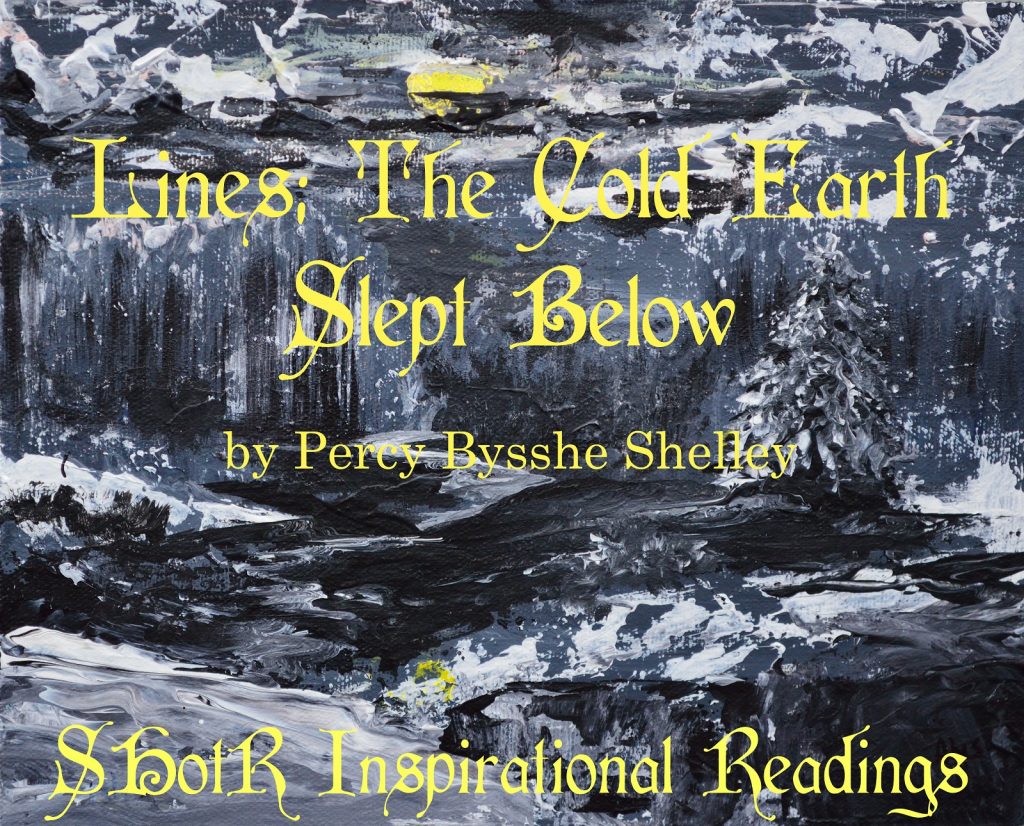
Percy Bysshe Shelley (4 August 1792 – 8 July 1822) was one of the major English Romantic poets. American literary critic Harold Bloom describes him as “a superb craftsman, a lyric poet without rival, and surely one of the most advanced sceptical intellects ever to write a poem.” A radical in his poetry as well as in his political and social views, Shelley did not achieve fame during his lifetime, but recognition of his achievements in poetry grew steadily following his death and he became an important influence on subsequent generations of poets including Browning, Swinburne, Hardy and Yeats. Shelley’s life was marked by family crises, ill health, and a backlash against his atheism, political views, and defiance of social conventions. He went into permanent self-exile in Italy in 1818, and over the next four years produced what Leader and O’Neill call “some of the finest poetry of the Romantic period”. His second wife, Mary Shelley, was the author of Frankenstein. Shelley had two children with his first wife Harriet: Eliza Ianthe Shelley (1813–76) and Charles Bysshe Shelley (1814–1826). He had four children with his second wife Mary (only one survived childhood): an unnamed daughter born in 1815 who only survived ten days; William Shelley (1816–1819); Clara Everina Shelley (1817–1818); and Percy Florence Shelley (1819–89). Shelley also declared himself to be the father of Elena Adelaide Shelley (1818–1820), who might have been an illegitimate or adopted daughter. Shelley died in a boating accident in 1822 at the age of twenty-nine. The day after the news of his death reached England, the Tory London newspaper The Courier printed: “Shelley, the writer of some infidel poetry, has been drowned; now he knows whether there is God or no.” On 16 August, his body was cremated on a beach near Viareggio and the ashes were buried in the Protestant Cemetery of Rome; the ashes were reburied in a different plot at the cemetery in 1823. His grave bears the Latin inscription Cor Cordium (Heart of Hearts), and a few lines of Ariel’s Song from Shakespeare’s The Tempest. When Shelley’s body was cremated on the beach, his “unusually small” heart resisted burning, possibly due to calcification from an earlier tubercular infection. His long-time friend Leigh Hunt preserved it in spirits of wine and refused to hand it over to Mary, but finally relented and the heart was eventually buried either at St. Peter’s Church, Bournemouth or in Christchurch Priory.
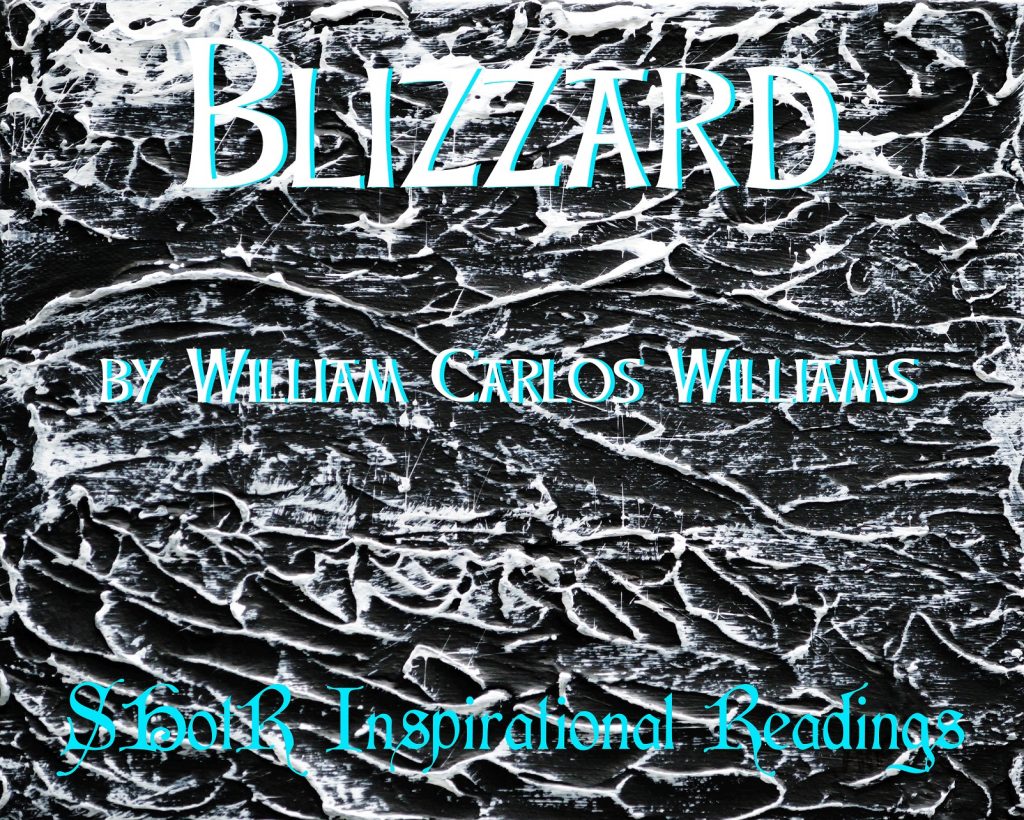
William Carlos Williams (September 17, 1883 – March 4, 1963) was a Puerto Rican-American poet, writer, and physician. His poetry is associated with modernism and imagism. Raised in a home filled with Caribbean culture, Williams’ consciousness was steeped in dual culture; he wrote in English, but Spanish was his first language. In 1897 he spent two years at a school near Geneva and then went to the Lycée Condorcet in Paris. Williams then attended the Horace Mann School in New York City and passed a special examination to be admitted to the University of Pennsylvania’s medical school (he graduated in 1906). Williams interned at two New York hospitals, French Hospital and Child’s Hospital, then went to Leipzig (Germany) for advanced study of pediatrics. He published his first book, Poems, in 1909. Williams married Florence Herman (1891–1976) in 1912 after he returned from Germany. They moved to Rutherford, New Jersey. Williams’ second book of poems, The Tempers, was published by a London press through the help of his friend Ezra Pound. Around 1914, Williams and his wife had their first son, William E. Williams, followed by their second son, Paul H. Williams, in 1917. In 1922, Williams published Spring and All, one of his seminal books of poetry, which contained the classic poems By the road to the contagious hospital, The Red Wheelbarrow, and To Elsie. However, the same year, T.S. Eliot’s The Waste Land became a literary sensation and overshadowed Williams’ very different brand of poetic Modernism. In his Autobiography, Williams later wrote, “I felt at once that The Waste Land had set me back twenty years and I’m sure it did. Critically, Eliot returned us to the classroom just at the moment when I felt we were on a point to escape to matters much closer to the essence of a new art form itself – rooted in the locality which should give it fruit.” Although he respected the work of Eliot, Williams criticized Eliot’s overly-intellectual style and frequent use of foreign languages and allusions to classical and European literature; Williams preferred colloquial American English. In his modernist epic collage of place titled Paterson (published between 1946 and 1958), an account of the history, people, and essence of Paterson, New Jersey, Williams wrote his own modern epic poem, focusing on “the local.” The poem also examined the role of the poet in American society and famously summarized his poetic method in the phrase, No ideas but in things (found in his poem A Sort of a Song and repeated again and again in Paterson). In his later years, Williams mentored and influenced many younger poets, and had a significant influence on American literary movements of the 1950s, including the Beat movement, the San Francisco Renaissance, the Black Mountain school, and the New York School. One of Williams’ dynamic mentoring relationships was with fellow New Jersey poet Allen Ginsberg. Williams included several of Ginsberg’s letters in Paterson, stating that one of them helped inspire the fifth section of that work, and in 1956 he wrote the introduction to Ginsberg’s first book Howl and Other Poems. Williams suffered a heart attack in 1948, and after 1949, a series of strokes; severe depression after one stroke confined him to Hillside Hospital, New York, for four months in 1953. He died on March 4, 1963 at the age of 79 at his home in Rutherford; he is buried in Hillside Cemetery in Lyndhurst, New Jersey. In addition to his writing, Williams had a long career as a physician practicing both pediatrics and general medicine, and was affiliated with Passaic General Hospital, where he served as the hospital’s chief of pediatrics from 1924 until his death. The hospital, which is now known as St. Mary’s General Hospital, paid tribute to Williams with a memorial plaque that states, We walk the wards that Williams walked.
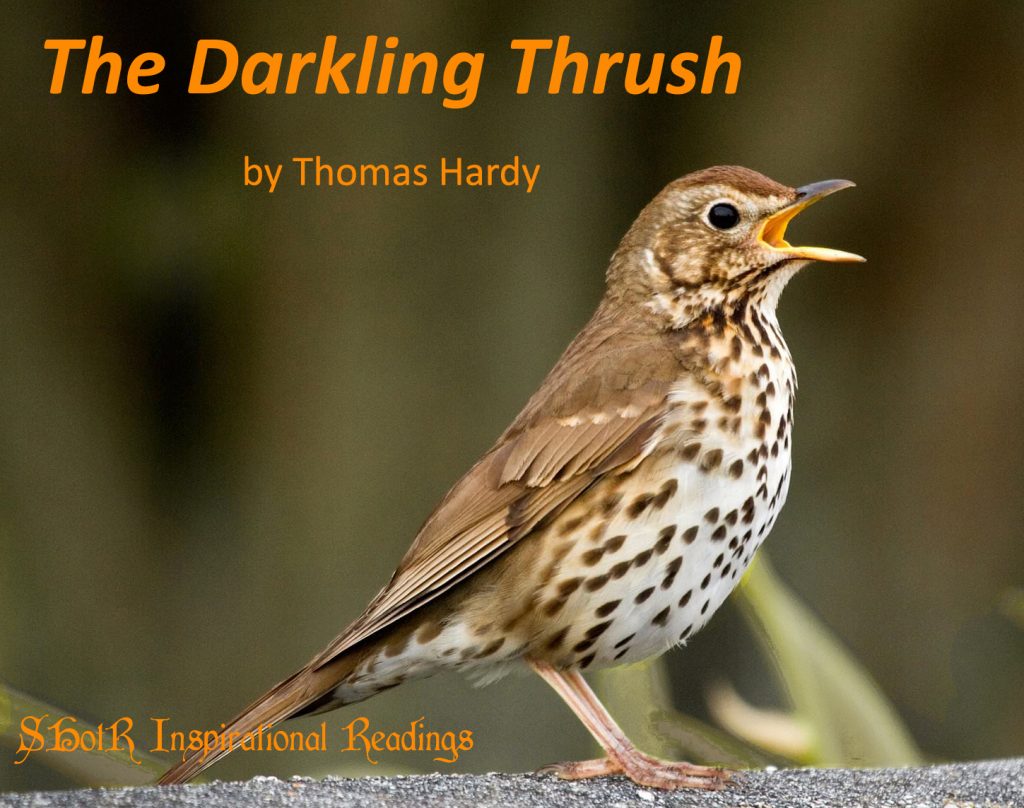
Thomas Hardy (2 June 1840 – 11 January 1928) was an English novelist and poet. A Victorian realist in the tradition of George Eliot, he was influenced both in his novels and in his poetry by Romanticism, including the poetry of William Wordsworth. Hardy was highly critical of much in Victorian society, especially on the declining status of rural people in Britain, like those from his native South West England. Initially, he gained fame as the author of novels such as Far from the Madding Crowd (1874), The Mayor of Casterbridge (1886), Tess of the d’Urbervilles (1891), and Jude the Obscure (1895). Hardy wrote poetry throughout his life and regarded himself primarily as a poet. In 1898 he published his first collection, Wessex Poems, a collection of poems written over 30 years. Although his poems were initially not as well received as his novels had been, Hardy is now recognized as one of the great poets of the 20th century, and his verse had influence on Robert Frost, W. H. Auden, Dylan Thomas, and Philip Larkin. Some of Hardy’s more famous poems are from Poems of 1912–13, part of Satires of Circumstance (1914), written following the death of his first wife Emma in 1912. They had been estranged for 20 years, and the lyric poems express deep “regret and remorse”. In 1914, Hardy married his secretary Florence Emily Dugdale, who was 39 years his junior. Hardy became ill with pleurisy in December 1927 and died on 11 January 1928, having dictated his final poem to his wife on his deathbed. The cause of death on his death certificate was cardiac syncope, with “old age” given as a contributing factor. Hardy’s funeral was on 16 January at Westminster Abbey: it was a controversial occasion because Hardy wanted his body to be interred in the same grave as his first wife, Emma, at Stinsford. His family and friends wanted to honor Hardy’s wishes; but his executor, Sir Sydney Carlyle Cockerell, insisted that Hardy be placed in Westminster Abbey’s famous Poets’ Corner. A compromise was reached: his ashes were buried in the Poets’ Corner and his heart was buried with Emma.

Poet, essayist, and short story writer Tess Gallagher was born in 1943 in Port Angeles, Washington, to a logging family. Her early years were marked by the rhythms of seasonal work, as well as the landscape of both the Northwest and the Ozarks, where her grandparents lived. “I don’t know how many children really get to explore vast amounts of territory like that,” she has said in interviews. “It builds something in you.” Though she continues to live in Port Angeles, Gallagher’s career has spanned countries: she has taught at various institutions including St. Lawrence University, the University of Montana, the University of Arizona, Syracuse University, Bucknell University, and Whitman College. She has translated the Romanian poet Lilian Ursu and collaborated with Jakucho Setouchi, a Japanese novelist and Buddhist nun, on the book Distant Rain (2006). Gallagher also owns a cottage in County Sligo, Ireland, where she lives part-time next to her “Irish companion,” the painter Josie Gray. Together they authored Barnacle Soup (2008), a collection of oral storytelling transcribed by Gallagher. Known for her accessible, intimate poetry, Gallagher has also written three short story collections. Gallagher has published numerous collections of poetry, including Instructions for a Double (1976), which won the Elliston Book Award, Willingly (1984), Amplitude: New and Selected Poems (1987), Moon Crossing Bridge (1992) a series of sixty poems that centers on the theme of loss and grieving prompted by the death of Carver in 1988. Recent poetry collections include My Black Horse (1995) and Dear Ghosts (2006), a collection of moving, highly personal elegies for family, friends, and lovers. From her earliest work, Gallagher has written in a flexible free-verse style, braiding strands of confessional anecdote, everyday experience, and precise, even surreal imagery. She is also the author of Midnight Lantern: New and Selected Poems (2011) and IS, IS NOT (2019), a book of poems dedicated to, and in deep conversation with, Gallagher’s long-term companion, the Irish painter and storyteller Josie Gray. Gallagher has won numerous awards for her work, including fellowships from the Guggenheim Foundation, the National Endowment for the Arts, and a Maxine Cushing Gray Foundation Award.
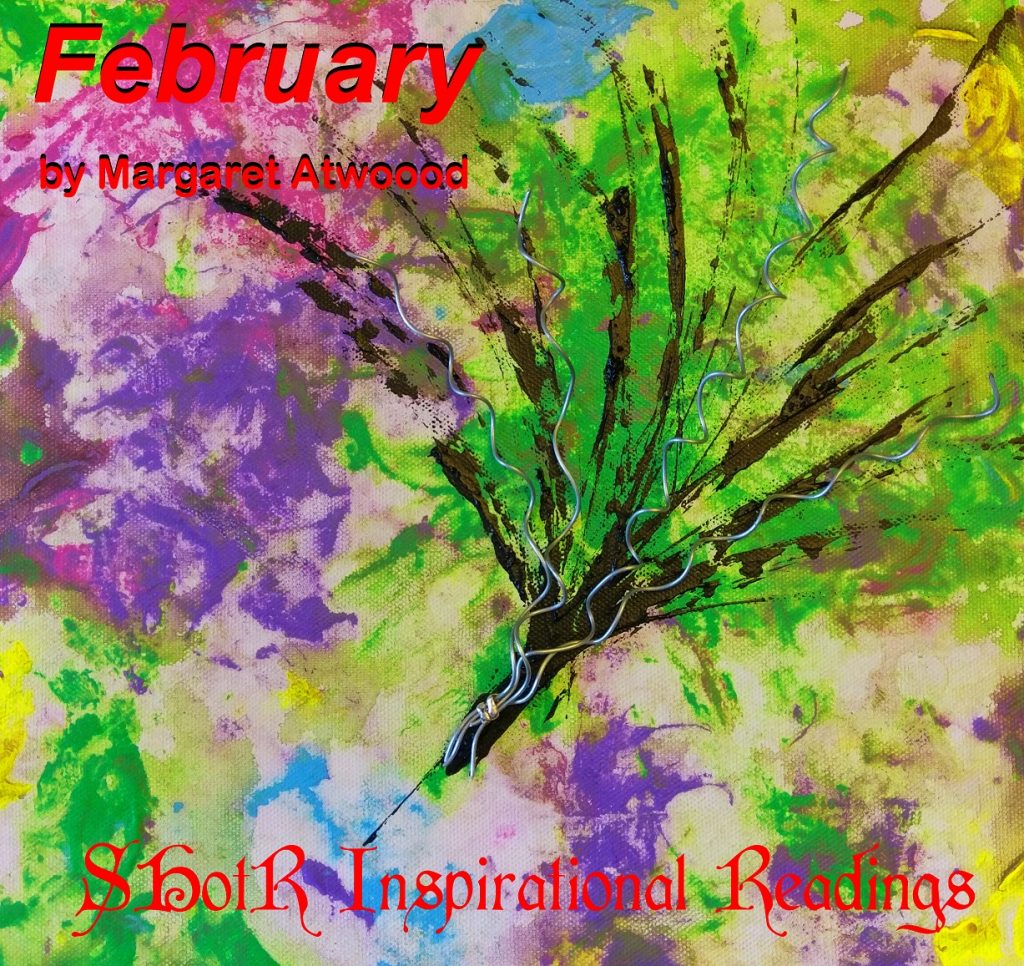
Margaret Eleanor Atwood CC OOnt CH FRSC (born November 18, 1939) is a Canadian poet, novelist, literary critic, essayist, teacher, environmental activist, and inventor. Since 1961, she has published 18 books of poetry, 18 novels, 11 books of non-fiction, nine collections of short fiction, eight children’s books, and two graphic novels, as well as a number of small press editions of both poetry and fiction. Atwood has won numerous awards and honors for her writing, including the Booker Prize (twice), Arthur C. Clarke Award, Governor General’s Award, Franz Kafka Prize, Princess of Asturias Awards, and the National Book Critics and PEN Center USA Lifetime Achievement Awards. A number of her works have been adapted for film and television. Atwood’s works encompass a variety of themes including gender and identity, religion and myth, the power of language, climate change, and “power politics”. Many of her poems are inspired by myths and fairy tales which interested her from a very early age. Atwood is a founder of the Griffin Poetry Prize and Writers’ Trust of Canada. She is also a Senior Fellow of Massey College, Toronto. Atwood is also the inventor of the LongPen device and associated technologies that facilitate remote robotic writing of documents.

Grace Schulman (born Grace Jan Waldman, 1935, New York City) is an American poet, living in New York City and East Hampton. In 1959, she was married to scientist, Jerome L. Schulman, M. D.; they were married 57 years, until his death in 2016. Schulman received the 2016 Frost Medal for Distinguished Lifetime Achievement in American Poetry, awarded by the Poetry Society of America. In 2019, she was inducted as member of the American Academy of Arts and Letters. Schulman studied at Bard College, and graduated from American University in 1955, and from New York University with a Ph.D. in 1971. She is Distinguished Professor of English at Baruch College, CUNY, and has taught poetry writing at Princeton University, Columbia University, Wesleyan University, Bennington College, and Warren Wilson College. Schulman’s seventh collection of poems is Without a Claim (Mariner, Houghton Mifflin Harcourt, 2013). Her memoir is Strange Paradise: Portrait of a Marriage (Turtle Point Press, 2018). Her collection of essays is First Loves and Other Adventures (U of Michigan Press, 2010). She is the author of Days of Wonder: New and Selected Poems, which was selected by Library Journal as one of the “best poetry books of 2002,” and was a finalist for the Phi Beta Kappa Award of that year. Wallace Shawn wrote of her poems, “When I read her, she makes me want to live to be four hundred years old, because she makes me feel there is so much out there, and it’s unbearable to miss any of it,” and Harold Bloom wrote of The Paintings of Our Lives: “These elegiac lyrics are reveries upon art, street scenes, and the beloved dead. Many of them are so exquisite in their sensibility, so intricate in their texture, that they are likely to endure as long as we have discerning readers.” Schulman’s honors include the Aiken Taylor Award for Poetry; the Delmore Schwartz Memorial Award; a Guggenheim Fellowship; five Pushcart Prizes; New York University’s Distinguished Alumni Award; The American Scholar named “Headstones” as Best Poem of 2004, and she received a Fellowship from the New York Council on the Arts. Her poems have appeared in anthologies such as Best American Poetry (1995), Best of the Best American Poetry 1989-99 (1999), and American Religious Poems (2006). Her work has appeared in the New Yorker, the New Republic, Paris Review, Antaeus, Grand Street, the Yale Review, the Hudson Review, Atlantic Monthly, and the Kenyon Review.
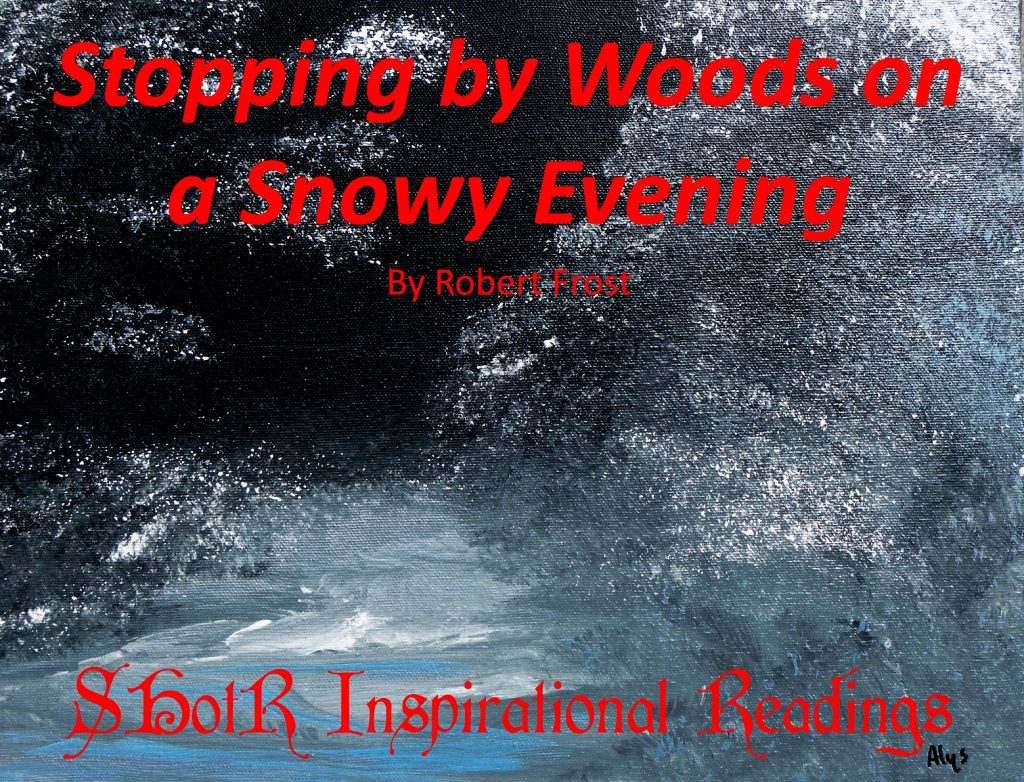
Robert Lee Frost (March 26, 1874 – January 29, 1963) was an American poet whose work was first published in England. In his poetry, he used rural life in New England in the early twentieth century to examine complex social and philosophical themes. In 1924, Frost won the first of four Pulitzer Prizes for the book New Hampshire: A Poem with Notes and Grace Notes. He also won Pulitzers for Collected Poems in 1931, A Further Range in 1937, and A Witness Tree in 1943. Frost was awarded the Congressional Gold Medal in 1960 for his poetic works. On July 22, 1961, he was named poet laureate of Vermont. Robert Frost’s personal life was full of grief and loss. In 1885, when he was 11 years old, his father died of tuberculosis, leaving the family with eight dollars. Five years later, Frost’s mother died of cancer. In 1920, Robert had to commit his younger sister Jeanie to a mental hospital; she died there nine years later. Mental illness ran in the Frost family: both he and his mother suffered from depression, and his daughter Irma was committed to a mental hospital in 1947. Frost’s wife, Elinor, also experienced bouts of depression. Elinor and Robert Frost had six children: son Elliot (1896–1900, died of cholera); daughter Lesley Frost Ballantine (1899–1983); son Carol (1902–1940, committed suicide); daughter Irma (1903–1967); daughter Marjorie (1905–1934, died as a result of puerperal fever after childbirth); and daughter Elinor Bettina (died just one day after her birth in 1907). Only Lesley and Irma outlived their parents. Frost’s wife had heart problems throughout her life, and developed breast cancer in 1937. She died of heart failure in 1938. Robert Frost died in Boston on January 29, 1963 of complications from prostate surgery, and was buried at the Old Bennington Cemetery in Bennington, Vermont. His epitaph quotes the last line from his poem, The Lesson for Today (1942): I had a lover’s quarrel with the world.
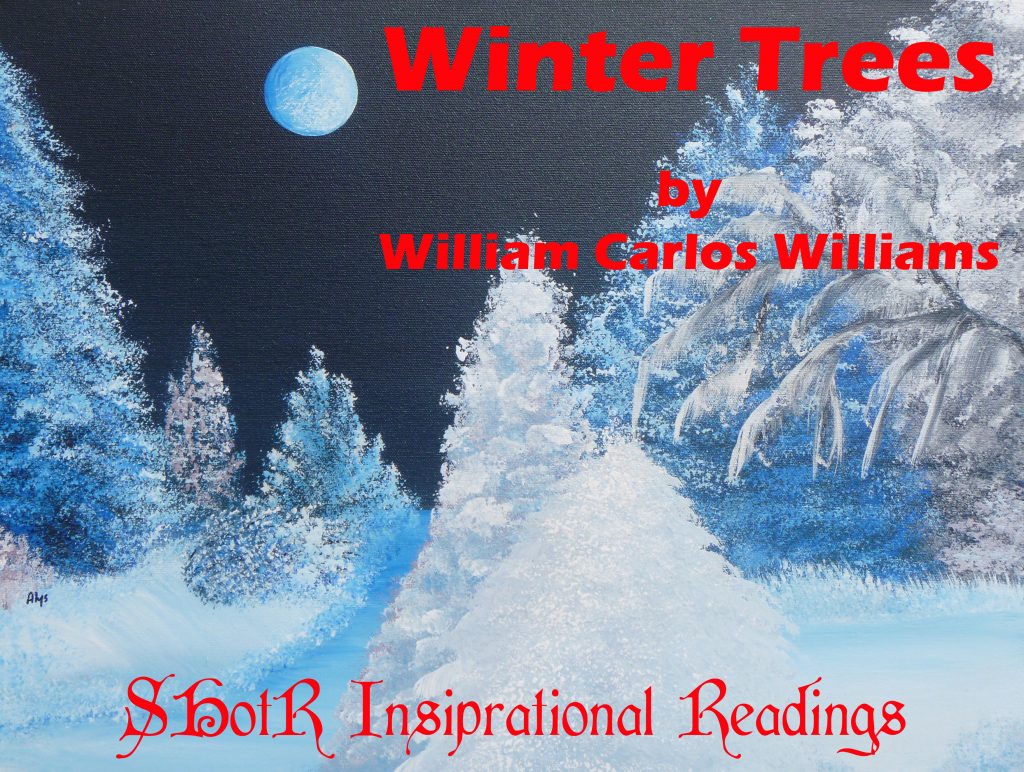
William Carlos Williams (September 17, 1883 – March 4, 1963) was a Puerto Rican-American poet, writer, and physician. His poetry is associated with modernism and imagism. Raised in a home filled with Caribbean culture, Williams’ consciousness was steeped in dual culture; he wrote in English, but Spanish was his first language. In 1897 he spent two years at a school near Geneva and then went to the Lycée Condorcet in Paris. Williams then attended the Horace Mann School in New York City and passed a special examination to be admitted to the University of Pennsylvania’s medical school (he graduated in 1906). Williams interned at two New York hospitals, French Hospital and Child’s Hospital, then went to Leipzig (Germany) for advanced study of pediatrics. He published his first book, Poems, in 1909. Williams married Florence Herman (1891–1976) in 1912 after he returned from Germany. They moved to Rutherford, New Jersey. Williams’ second book of poems, The Tempers, was published by a London press through the help of his friend Ezra Pound. Around 1914, Williams and his wife had their first son, William E. Williams, followed by their second son, Paul H. Williams, in 1917. In 1922, Williams published Spring and All, one of his seminal books of poetry, which contained the classic poems By the road to the contagious hospital, The Red Wheelbarrow, and To Elsie. However, the same year, T.S. Eliot’s The Waste Land became a literary sensation and overshadowed Williams’ very different brand of poetic Modernism. In his Autobiography, Williams later wrote, “I felt at once that The Waste Land had set me back twenty years and I’m sure it did. Critically, Eliot returned us to the classroom just at the moment when I felt we were on a point to escape to matters much closer to the essence of a new art form itself – rooted in the locality which should give it fruit.” Although he respected the work of Eliot, Williams criticized Eliot’s overly-intellectual style and frequent use of foreign languages and allusions to classical and European literature; Williams preferred colloquial American English. In his modernist epic collage of place titled Paterson (published between 1946 and 1958), an account of the history, people, and essence of Paterson, New Jersey, Williams wrote his own modern epic poem, focusing on “the local.” The poem also examined the role of the poet in American society and famously summarized his poetic method in the phrase, No ideas but in things (found in his poem A Sort of a Song and repeated again and again in Paterson). In his later years, Williams mentored and influenced many younger poets, and had a significant influence on American literary movements of the 1950s, including the Beat movement, the San Francisco Renaissance, the Black Mountain school, and the New York School. One of Williams’ dynamic mentoring relationships was with fellow New Jersey poet Allen Ginsberg. Williams included several of Ginsberg’s letters in Paterson, stating that one of them helped inspire the fifth section of that work, and in 1956 he wrote the introduction to Ginsberg’s first book Howl and Other Poems. Williams suffered a heart attack in 1948, and after 1949, a series of strokes; severe depression after one stroke confined him to Hillside Hospital, New York, for four months in 1953. He died on March 4, 1963 at the age of 79 at his home in Rutherford; he is buried in Hillside Cemetery in Lyndhurst, New Jersey. In addition to his writing, Williams had a long career as a physician practicing both pediatrics and general medicine, and was affiliated with Passaic General Hospital, where he served as the hospital’s chief of pediatrics from 1924 until his death. The hospital, which is now known as St. Mary’s General Hospital, paid tribute to Williams with a memorial plaque that states, We walk the wards that Williams walked.
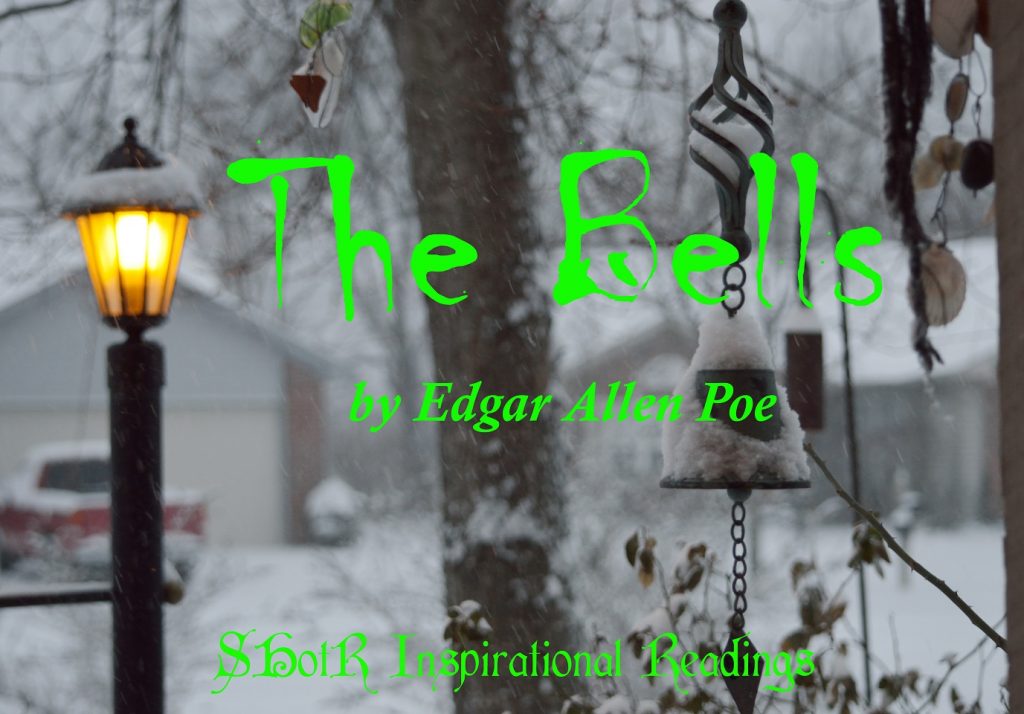
Edgar Allan Poe ( January 19, 1809 – October 7, 1849) was an American writer, poet, editor, and literary critic. Poe is best known for his poetry and short stories, particularly his tales of mystery and the macabre. He is widely regarded as a central figure of Romanticism in the United States and of American literature as a whole, and he was one of the country’s earliest practitioners of the short story. He is considered the inventor of the detective fiction genre and is credited with contributing to the emerging genre of science fiction. Poe was the first well-known American writer to earn a living through writing alone, resulting in a financially difficult life and career. Poe was born in Boston, the second child of actors David and Elizabeth “Eliza” Poe. His father abandoned the family in 1810, and his mother died the following year. Poe attended the University of Virginia but left after a year due to lack of money; he enlisted in the United States Army in 1827 under an assumed name. It was then that his publishing career began, with the anonymous collection Tamerlane and Other Poems (1827), credited only to “a Bostonian”. Poe failed as an officer cadet at West Point and declared a firm intent to be a poet and writer. He switched his focus to prose and spent the next several years working for literary journals and periodicals, becoming known for his own style of literary criticism. His work forced him to move between several cities, including Baltimore, Philadelphia, and New York City. He married his 13-year-old cousin, Virginia Clemm, in 1836; she died of tuberculosis in 1847. In January 1845, Poe published his poem The Raven to instant success. He planned for years to produce his own journal The Penn (later renamed The Stylus), but before it could be produced, he died in Baltimore on October 7, 1849, at age 40. The cause of his death is unknown and has been variously attributed to disease, alcoholism, substance abuse, suicide, and other causes. Poe and his works influenced literature and specialized fields (like as cosmology and cryptography) around the world. He and his work appear throughout popular culture in literature, music, films, and television, and some of his homes are dedicated museums today. The Mystery Writers of America present an annual award known as the Edgar Award for distinguished work in the mystery genre.
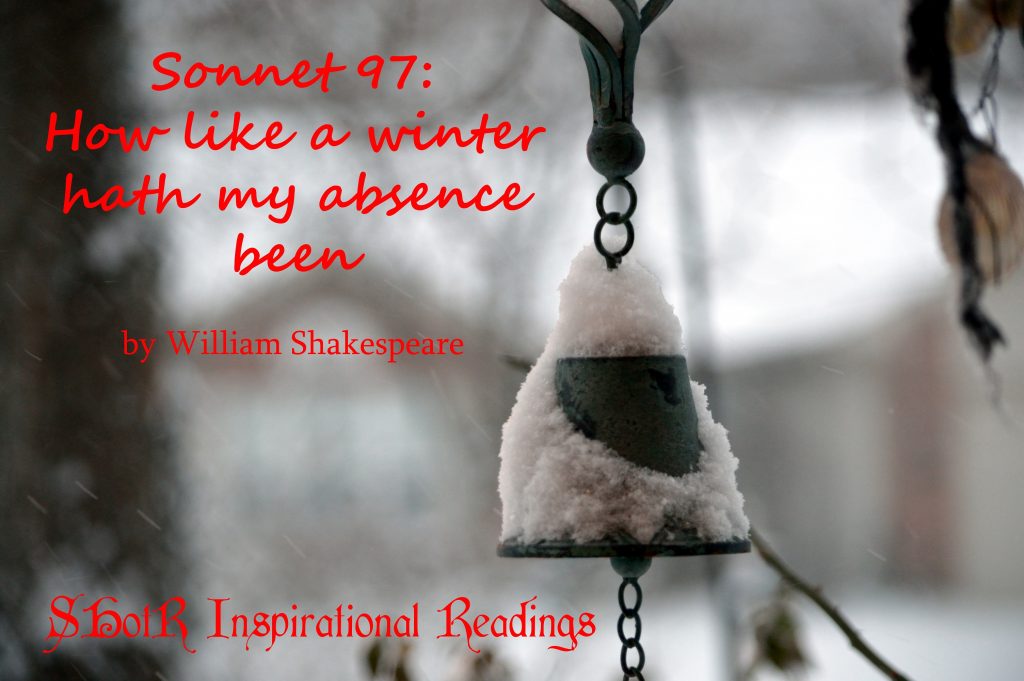
William Shakespeare (1564 – 1616) wrote 154 sonnets, which were apparently composed during a period of ten or a dozen years starting in about 1592-1593. They were published by Thomas Thorpe in 1609. Unlike the narrative poems, they enjoyed only limited commercial success during Shakespeare’s lifetime, and no further edition appeared until Benson’s in 1640. The 154 sonnets are conventionally divided between the “young man” sonnets (1-126) and the “dark lady” sonnets (127-152), with the final pair often seen as an envoy or coda to the collection. Shakespeare employs the conventional English sonnet form: three quatrains capped with a couplet. Drama is conjured within individual poems, as the speaker wrestles with some problem or situation; it is generated by the juxtaposition of poems, with instant switches of tone, mood, and style, and it is implied by cross-references and interrelationships within the sequence as a whole. Shakespeare’s whose exact birth date remains unknown. He was baptized in Holy Trinity Church in Stratford-upon-Avon on April 26, 1564, He was his mother’s third child, but the first to survive infancy. Scholars believe that he was born on April 23rd, given the era’s convention of baptizing newborns on their third day. Shakespeare died on April 23, 1616, on what may have been his 52nd birthday.

Annie Finch is an award-winning feminist poet and writer. Her seven books of poetry include The Poetry Witch Little Book of Spells, Calendars (finalist for the National Poetry Series), Spells: New and Selected Poems, and an epic poem on abortion, Among the Goddesses: An Epic Libretto in Seven Dreams, which received the 2012 Sarasvati Award from ASWM. Annie’s books on poetic meter and craft include The Body of Poetry: Essays on Women, Form, and the Poetic Self and A Poet’s Craft: A Comprehensive Guide to Making and Sharing Your Poetry (University of Michigan Press) as well as the anthologies A Formal Feeling Comes: Poems in Form by Contemporary Women, Villanelles, and Measure for Measure: An Anthology of Poetic Meters. She is also the editor of Choice Words: Writers on Abortion (Haymarket Books). Annie’s poetry has been performed at Carnegie Hall and the Metropolitan Museum of Art, installed in the Cathedral of St. John the Divine, and published in Poetry, The Paris Review, The New York Times, and The Penguin Book of Twentieth-Century American Poetry. She holds a BA from Yale and a Ph.D from Stanford and was awarded the Robert Fitzgerald Award for her lifetime contribution to the study of Versification. Known for her mesmerizing performances of her work, she has collaborated widely with artists in theater, dance, and music. She teaches poetry, meter, and scansion through her website and online community, and travels to teach and perform.
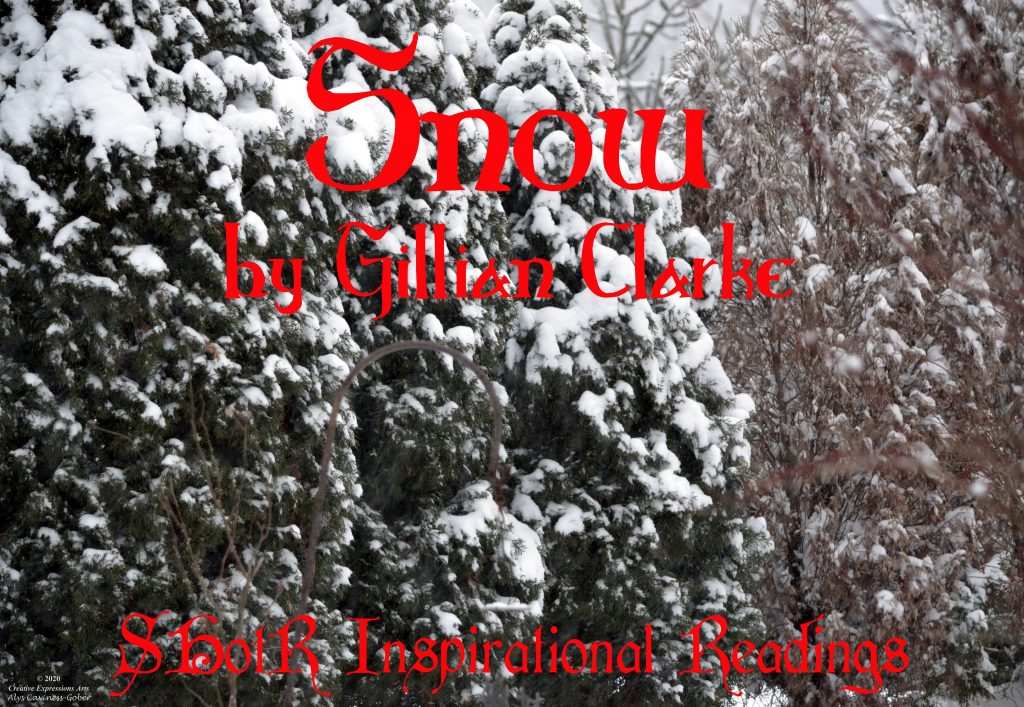
Gillian Clarke was born in Cardiff and lives in Ceredigion. She was the National Poet of Wales from 2008-2016. Clarke’s work has been on the GCSE and A Level exam syllabus for over thirty years, and she performs her poetry regularly for student audiences at Poetry Live, and in several European cities. She was awarded the Queen’s Gold medal for Poetry in 2010, and the Wilfred Owen Award in 2012. Clarke’s prose works include a writer’s journal, At the Source, and Clarke has written radio and theatre drama, and translated poetry and prose from Welsh. The Gathering/Yr Helfa, a commission from the National Theatre of Wales, was performed on Snowdon in September, 2014. Picador published her Selected Poems in 2016. Her tenth collection of poems, Zoology, was published by Carcanet in 2017. Clarke’s version of the book-long 7th century Welsh poem, Y Gododdin, was published by Faber in 2019.

Christina Georgina Rossetti (5 December 1830 – 29 December 1894) was an English poet who wrote romantic, devotional, and children’s poems. Rossetti’s Christmas poem, In the Bleak Midwinter, became popular in the English-speaking world after her death when it was set as a Christmas carol, first by Gustav Holst and later by Harold Darke. Her poem Love Came Down at Christmas (1885) has also been widely arranged as a carol. Rossetti’s parents were Gabriele Rossetti, a poet and a political exile from Vasto, Abruzzo (Italy) and Frances Polidori, the sister of Lord Byron’s friend and physician, John William Polidori. Rossetti had two brothers and a sister: Dante Gabriel became a poet and an influential artist and William Michael and Maria both became writers. Christina was the youngest, a lively child, who, before she had learned to write, dictated her first story to her mother. When she was 12 years old (1842), Rossetti began writing down and dating her poems. In 1847 she began experimenting with verse forms such as sonnets, hymns, and ballads, using narratives from the Bible, folk tales, and the lives of saints. Her early pieces often feature meditations on death and loss, in the Romantic tradition. When she was 14, Rossetti suffered a nervous breakdown and left school; she suffered henceforth from bouts of depression and related illnesses. It was during that time she, her mother, and her sister became absorbed in the Anglo-Catholic movement that developed in the Church of England, and religious devotion became important in Rossetti’s life. Rossetti published her first two poems (Death’s Chill Between, Heart’s Chill Between) in the Athenaeum in 1848, when she was 18. She was engaged three times: first in her late teens to the painter James Collinson; he, like her brothers Dante and William, was a founding members of the avant-garde artistic group, the Pre-Raphaelite Brotherhood (founded 1848). Their engagement was broken in 1850 when he reverted to Catholicism. Under the pseudonym Ellen Alleyne, she contributed to the literary magazine, The Germ, published by the Pre-Raphaelites from January to April 1850 and edited by her brother William, marking the beginning of her public career. In 1853, due to the Rossetti family’s financial difficulties, Christina helped her mother keep a school in Fromefield, Frome (Somerset, England), but it was not a success. In 1854 mother and daughter returned to London, where Rossetti’s long-ill father died. She became involved with linguist Charles Cayley, but then she declined to marry him for religious reasons. The third offer of marriage came from the painter John Brett, whom Rossetti turned down. Rossetti’s more critical reflections on the artistic movement begun by her brother Dante Garbriel began with her 1856 poem In the Artist’s Studio, in which she reflects on seeing multiple paintings of the same model. For Rossetti, the artist’s idealized vision of the model overwhelms his work, until “every canvas means/the one same meaning.” Dinah Roe, in her introduction to the Penguin Classics collection of Pre-Raphaelite poetry, argues that this critique of Rossetti’s brother and similar male artists is not so much about “the objectification of women” as it is about “the male artist’s self-worship”. Rossetti’s famous collection, Goblin Market and Other Poems, was published in 1862, when she was 31. It received widespread critical praise, establishing her as the foremost female poet of the time. The title poem is one of Rossetti’s best known. Although it is ostensibly about two sisters’ misadventures with goblins, critics have interpreted the piece in a variety of ways, seeing it as an allegory about temptation and salvation, a commentary on Victorian gender roles and female agency, and a work about erotic desire and social redemption. Rossetti sat for several of her brother Dante Gabriel’s most famous paintings: in 1848, she was the model for the Virgin Mary in his first completed oil painting, The Girlhood of Mary Virgin, which was the first work he inscribed with the initials PRB to signify the Pre-Raphaelite Brotherhood, and in 1849 Rossetti modelled for her brother’s two paintings, the Annunciation and Ecce Ancilla Domini. A line from her poem Who shall deliver me? inspired the famous painting by Fernand Khnopff called I lock my door upon myself. In 1849 she became seriously ill again, suffering from depression. Rossetti was a volunteer worker from 1859 to 1870 at the St Mary Magdalene house of charity in Highgate, a refuge for former prostitutes, and some scholars suggest that Goblin Market might have been inspired by the “fallen women” she came to know there. Scholars have found feminist themes in her poetry, but in life, Rossetti was ambivalent about women’s suffrage. That said, she opposed slavery (in the American South), cruelty to animals (in the prevalent practice of animal experimentation), and the exploitation of girls in under-age prostitution. Sometime around 1857 she had a major religious crisis. Rossetti continued to write and publish for the rest of her life, focusing mainly on devotional writing and children’s poetry. Rossetti was diagnosed with Graves’ disease in 1872, after suffering a near-fatal attack in the early 1870s. In 1892, she wrote The Face of the Deep, a book of devotional prose, and the next year Rossetti oversaw publication of a new and enlarged edition of Sing-Song. She developed breast cancer in 1893, and the tumor was removed; there was a recurrence in September 1894. Rossetti died on 29 December 1894, in Torrington Square, Bloomsbury (London); the location is marked with a stone tablet. She is buried in Highgate Cemetery in north London.

Claude McKay (1889 – 1948) was born Festus Claudius McKay in Sunny Ville, Jamaica in 1889. He was a poet and novelist, and a key figure in the Harlem Renaissance literary movement of the 1920s. His work ranged from vernacular verse that celebrated peasant life in Jamaica to poems that protested racial and economic inequities. His philosophically ambitious novels of Black life in both Jamaica and America address instinctual/intellectual duality, which McKay found central to the Black individual’s efforts to cope in a racist society. He is the author of The Passion of Claude McKay: Selected Poetry and Prose (1973), The Dialectic Poetry of Claude McKay (1972), Selected Poems (1953), Harlem Shadows (1922), Constab Ballads (1912), and Songs of Jamaica (1912), among many other books of poetry and prose. Harlem Shadows, a collection from previous volumes and periodicals publications, contains a lot of his most acclaimed poems; the collection cemented his place as a leading member of the Harlem Renaissance. By the mid-1940s, McKay’s health had deteriorated. He endured several illnesses throughout his last years and eventually died of heart failure in 1948.
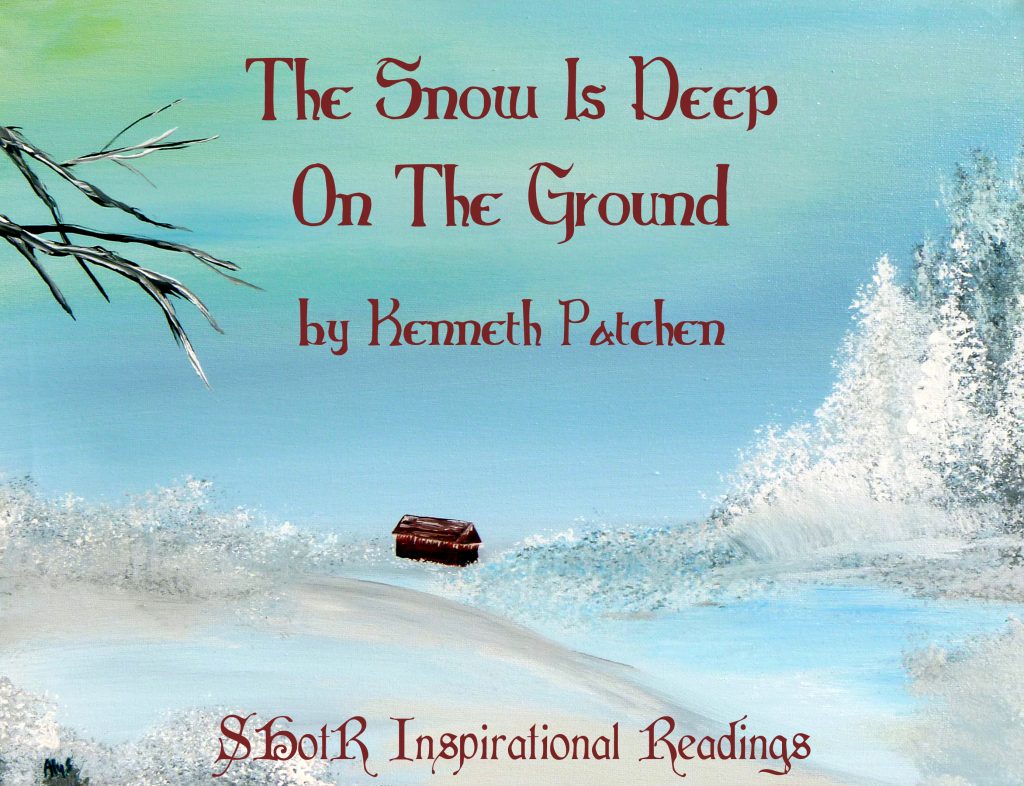
Kenneth Patchen (1911–1972) was born into a poor family in Niles, Ohio. In 1936, he published his first book of poems, Before the Brave, followed by 40+ books of poetry include Wonderings (1971), But Even So (1968), Poems of Humor and Protest (1960), To Say If You Love Someone (1959), and Selected Poems (1946). A back injury in 1937, when he was 26 years old, left Patchen disabled and confined to bed for long periods. He suffered constant internal pain, which, coupled with his sensitivity to the injustices of the world, made him infuse his writings with quirky drawings and splashes of color. “The sickness of the world probably didn’t cause mine,” he wrote to his friend Henry Miller, “but it certainly conditions my handling of it. Actually (the worst part) is that I feel that I would be something else if I weren’t rigid inside with the constant pressure of illness; I would be purer, less inclined to write (say) for the sake of being able to show my sick part that it can never become all powerful; I could experience more in other artists if I didn’t have to be concerned so closely with happenings inside myself.” Despite his disability, Patchen produced more than forty volumes of poetry and prose, most with a visual component. In his earlier works of the 1930s and 1940s, including First Will and Testament and The Journal of Albion Moonlight, he experimented with the typographical arrangement of words to convey meaning — a practice that over a decade later, in 1956, was named “concrete poetry.” He also accompanied his text with his own original abstract drawings and illustrations, sometimes including hand-written pages in the midst of typeset ones. Patchen believed in innovating new forms of expression to engage the reader and viewer. During and after World War II, Patchen’s poetry was popular with college students, and his antiwar poetry was embraced by students protesting the Vietnam War in the late 1960s. A writer for the New York Times Book Review once wrote that, “there is the voice of anger — outspoken rage against the forces of hypocrisy and injustice in our world.” Patchen was also known for creating painted poems; in 1942, unable to pay for a fine-print edition of his book The Dark Kingdom, he designed and painted his own book covers, publishing a limited edition of 75 copies. He then published nine more titles known as the “painted books.” Each book had a unique cover created by Patchen with original paintings and holograph colophons: he created a total of 956 individual book covers. “Like Picasso,” wrote Henry Miller in 1946, “he makes use of everything. The innovator and initiator are strong in him….One is no longer looking at a dead, printed book but at something alive and breathing, something which looks back at you with equal astonishment. Novelty is employed not as seduction but like the stern fist of the Zen master to awaken and arouse the consciousness of the reader.” Throughout the 1950s, Patchen became famous for reading his poetry to the accompaniment of jazz music. He underwent an operation in the early 1950s, funded by his fellow poets, including T. S. Eliot, William Carlos Williams, and E. E. Cummings, that allowed him to regain his mobility, but a mistake during a follow-up surgery in 1959 left Patchen almost completely bedridden for the remaining thirteen years of his life. It was during that 13-year period that he created his most visually remarkable works: 151 “painted poems” — free verse poems with whimsical imagery using pieces of Japanese paper and common construction paper, glue, tempera, watercolors, casein, crayons, ink, pencils, cloth dyes, cloth string, and coffee and tea (used as dyes). In 1967, he was recognized by the National Foundation on the Arts and Humanities for “a life-long contribution to American letters.” Patchen died in Palo Alto, California in 1972.
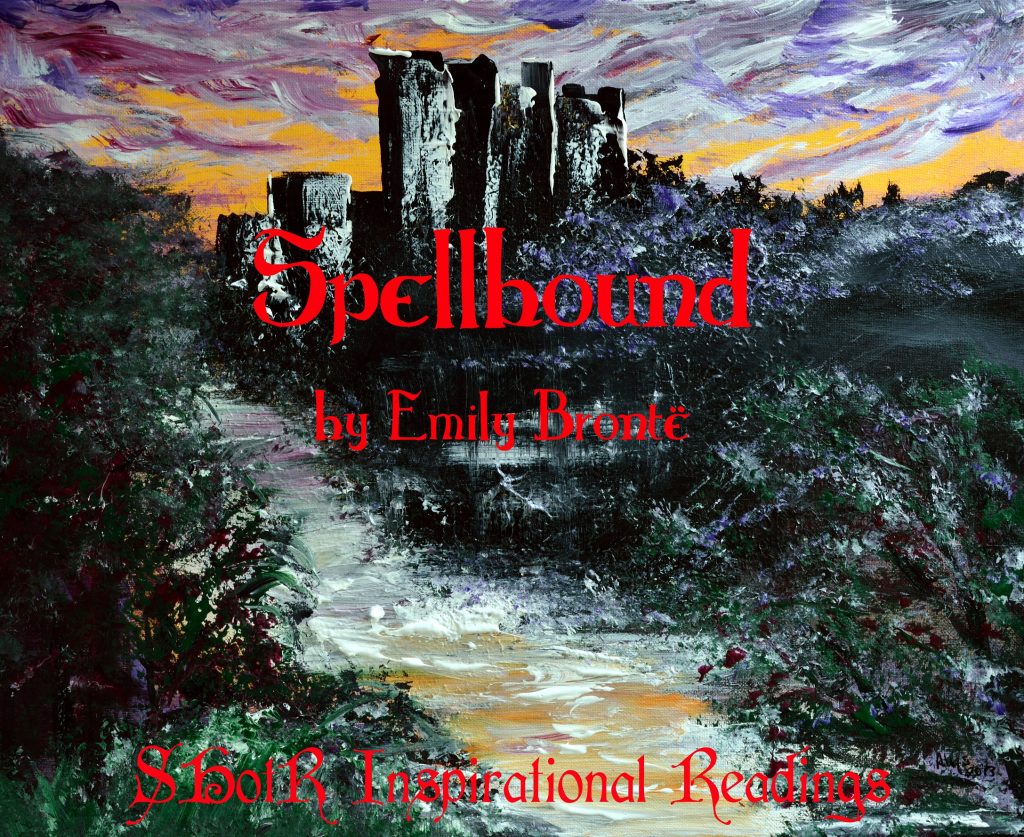
Emily Jane Brontë (30 July 1818 – 19 December 1848) was an English novelist and poet. She is best known for her only novel, Wuthering Heights (1847), now considered a classic of English literature. Emily was the second-youngest of the four surviving Brontë siblings (Charlotte, Branwell, Emily, and Anne). In 1846, she and her sisters Charlotte and Anne published a book of poetry titled Poems by Currer, Ellis, and Acton Bell (the Bell names were pen names for the sisters: Currer was Charlotte, Ellis was Emily, and Acton was Anne). Emily’s poems received critical praise. The Athenaeum reviewer praised Ellis Bell’s work for its music and power, saying his poems were the best in the collection: “Ellis possesses a fine, quaint spirit and an evident power of wing that may reach heights not here attempted.” The Critic reviewer recognized in Ellis Bell’s poetry “the presence of more genius than it was supposed this utilitarian age had devoted to the loftier exercises of the intellect.”
In 1847, Wuthering Heights was published in London by Thomas Cautley Newby; the book was published in two volumes under Emily’s pen name, Ellis Bell. The novel’s innovative structure puzzled some critics, and Wuthering Heights’s violence and passion confirmed to the Victorian public and many reviewers that it had been written by a man. That a woman could write a novel with such “masculine” content was something that people had a hard time believing. According to British historian Juliet Gardiner, “the vivid sexual passion and power of its language and imagery impressed, bewildered and appalled reviewers.” Literary critic Thomas Joudrey said: “Expecting in the wake of Charlotte Brontë’s Jane Eyre to be swept up in an earnest Bildungsroman, they were instead shocked and confounded by a tale of unchecked primal passions, replete with savage cruelty and outright barbarism.” Even though the novel received mixed reviews when it first came out and was often condemned for its portrayal of amoral passion, the book became an English literary classic. During the year after the publication of Wuthering Heights, Emily’s already fragile health was weakened by the harsh climate and by the Brontë home’s source water being contaminated by run off from the church’s graveyard. Her brother Branwell died suddenly, on 24 September 1848, and at his funeral a week later, Emily caught a severe cold that quickly led to tuberculosis. Her condition worsened steadily, but she rejected medical help and remedies, saying that she would have “no poisoning doctor” near her. On the morning of 19 December 1848, Charlotte, fearing for her sister, wrote: “She grows daily weaker. The physician’s opinion was expressed too obscurely to be of use – he sent some medicine which she would not take. Moments so dark as these I have never known – I pray for God’s support to us all.” At noon that day, Emily could only whisper in gasps. Her last audible words to Charlotte were, “If you will send for a doctor, I will see him now,” but it was too late. Emily died that same day at about two in the afternoon. She had become so thin that her coffin measured only 16 inches wide; the carpenter said he had never made a narrower one for an adult. Emily Brontë’s mortal remains were interred in the family vault in St Michael and All Angels’ Church, Haworth. Emily Brontë never knew the extent of fame she achieved with her only novel, because she died a year after its publication, aged 30. Although a letter from her publisher, sent before her death, indicates that Emily had begun to write a second novel, that manuscript has never been found. Scholars posit that either she herself destroyed it when she realized she’d became too ill to finish it, or that Charlotte eventually destroyed it after Emily’s death, for reasons unknown. Emily Brontë’s name did not appear as the true author of Wuthering Heights until the publication of a commemorative edition in 1850, two years after her death.
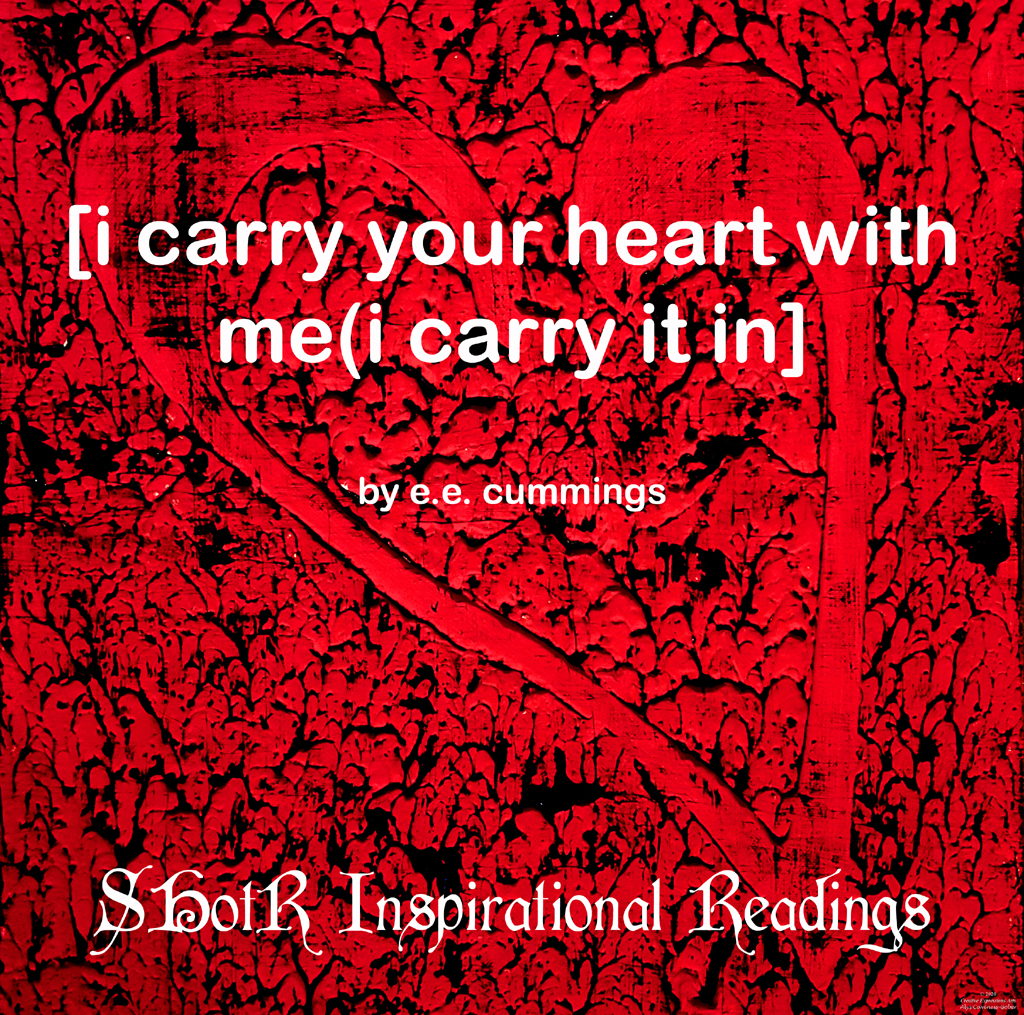
Edward Estlin “E. E.” Cummings (October 14, 1894 – September 3, 1962), often styled as e e cummings, was an American poet, painter, essayist, author, and playwright. He wrote approximately 2,900 poems, two autobiographical novels, four plays, and several essays. Often considered as one of the most important American poets of the 20th century, Cummings is associated with modernist free-form poetry, and use of idiosyncratic syntax and lower-case spellings. Cummings’ poems include controversial subject matter, including eroticism and ethnic slurs; he stated his work pointed out prejudices but did not condoned them. Cummings died of a stroke on September 3, 1962, at the age of 67 in New Hampshire. He is buried at Forest Hills Cemetery in Boston, Massachusetts. At the time of his death, Cummings was recognized as the second most widely read poet in the United States, after Robert Frost.

Maggie Smith (1977 –) is an award-winning American poet and essayist. Her poem Good Bones first appeared in Waxwing (Issue 10, June 2016). In 2016, the poem went viral internationally; since then it has been translated into nearly a dozen languages. The poem was read on the CBS primetime drama Madam Secretary (Season 3, Ep 18) and was read by Meryl Streep at the 2017 Academy of American Poets gala at Lincoln Center. Smith is the author of Keep Moving: Notes on Loss, Creativity, and Change (One Signal/Simon & Schuster, May 5, 2020), Good Bones (Tupelo Press, 2017); The Well Speaks of Its Own Poison (Tupelo Press, 2015), winner of the Dorset Prize and the IPPY Gold Medal in Poetry; and Lamp of the Body (Red Hen Press, 2005), winner of the Benjamin Saltman Award. She is also the author of three prizewinning chapbooks: Disasterology (Dream Horse Press, 2016); The List of Dangers (Kent State/Wick Poetry Series, 2010); and Nesting Dolls (Pudding House, 2005). Smith’s poems and essays have appeared or are forthcoming in the New York Times, The New Yorker, Poetry, The Best American Poetry 2017, The Paris Review, AGNI, Ploughshares, Image, the Washington Post, Virginia Quarterly Review, American Poetry Review, The Southern Review, and many other journals and anthologies. Smith has received fellowships from the National Endowment for the Arts, the Ohio Arts Council, the Sustainable Arts Foundation, and the Virginia Center for the Creative Arts. She can be found online at www.maggiesmithpoet.com.
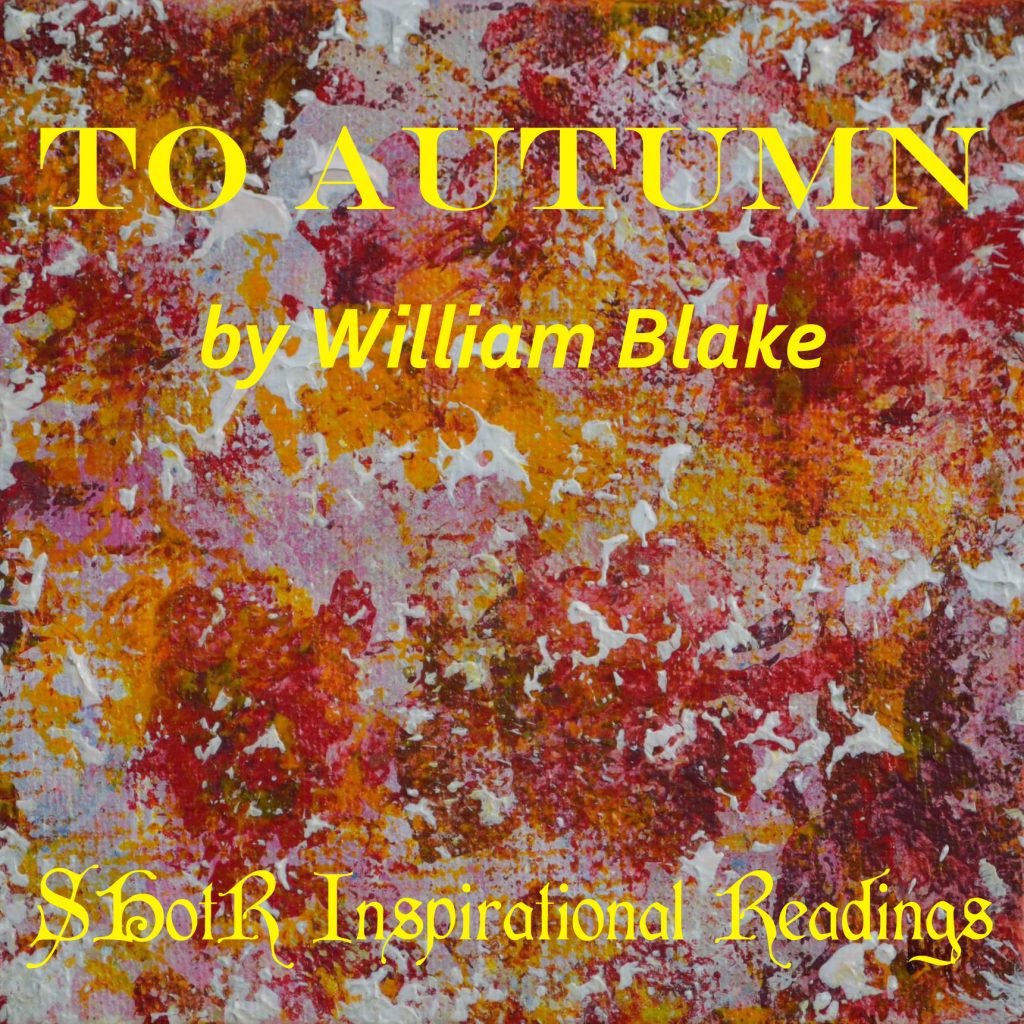
William Blake (28 November 1757 – 12 August 1827) was an English poet, painter, and printmaker. Although he was basically unrecognized during his lifetime, Blake is considered a seminal figure in the history of the poetry and visual arts of the Romantic Age. 19th-century scholar William Michael Rossetti called him “a man not forestalled by predecessors, nor to be classed with contemporaries, nor to be replaced by known or readily surmisable successors”.
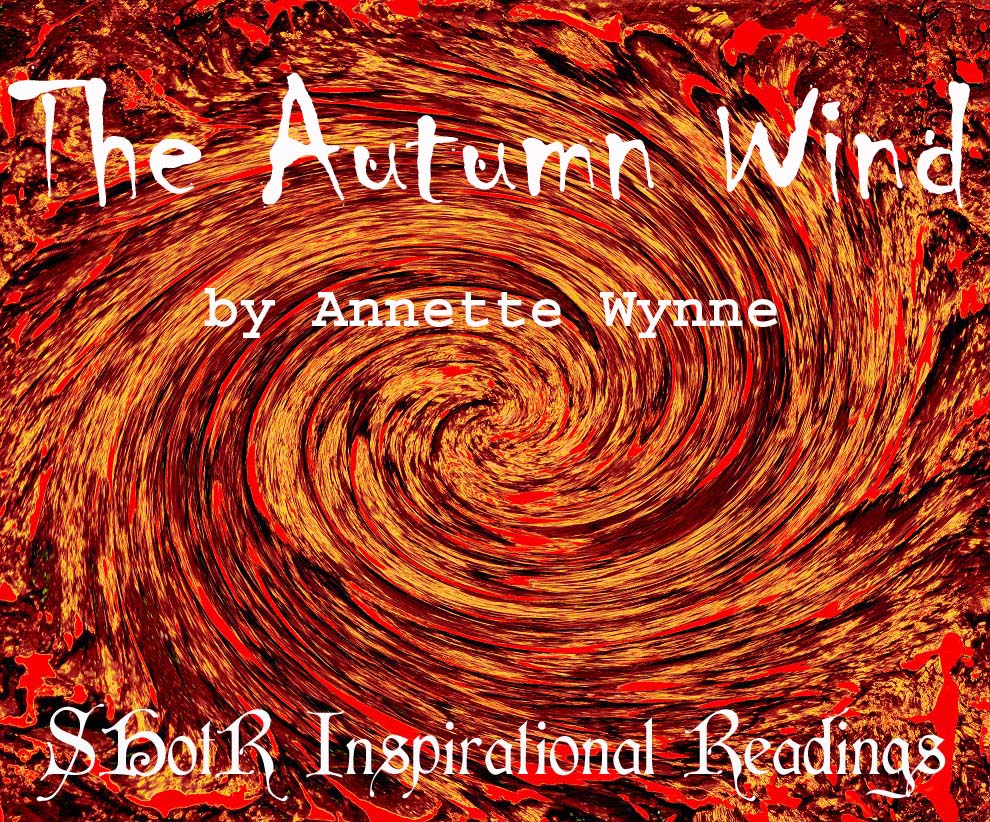
Annette Wynne was an American poet specializing in children’s poetry. Her book of children’s poems, For Days and Days: A Year Round Treasury of Child Verse was published in 1919, followed by Treasure Things in 1922.
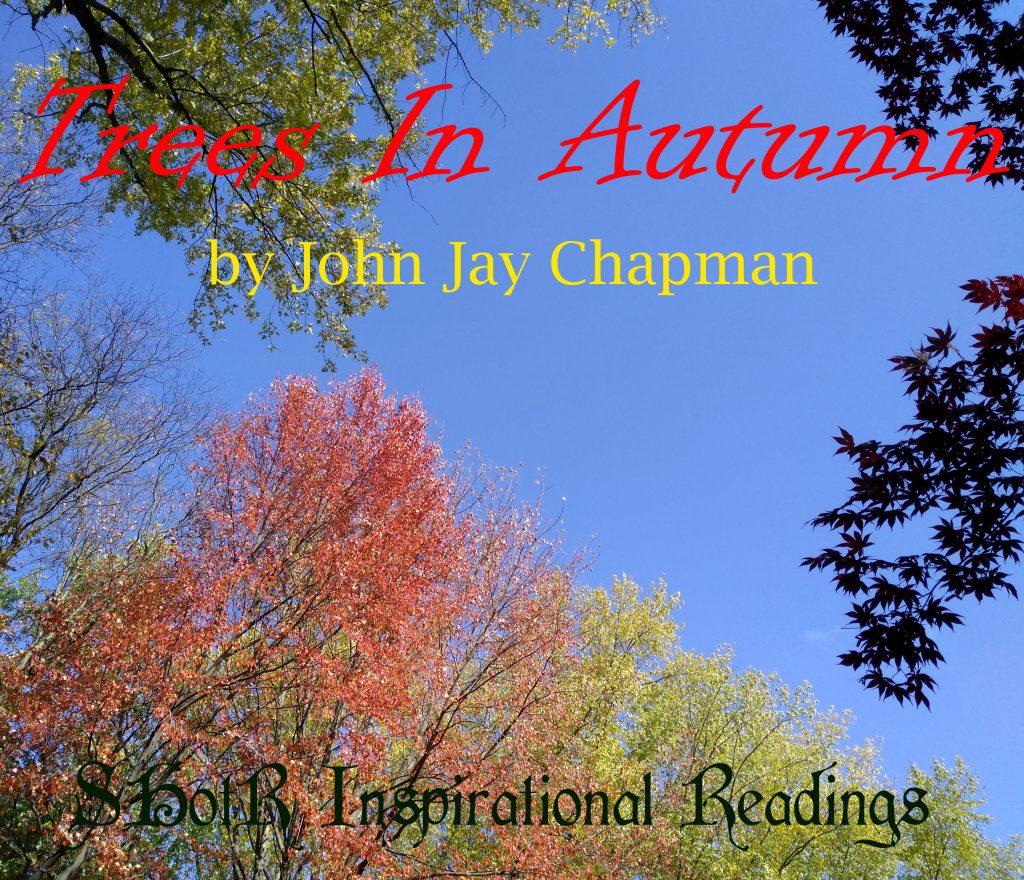
John Jay Chapman (March 2, 1862 – November 4, 1933) was an American author. His paternal grandmother, Maria Weston Chapman, was one of the leading campaigners against slavery and worked with William Lloyd Garrison on The Liberator. After graduating from Harvard in 1884, Chapman traveled around Europe before returning to study at the Harvard Law School. Chapman was a man of extreme, sometimes violent impulses: his Harvard friends had called him “mad Jack.” When he was a law student, Chapman beat up a supposed rival in love, but then, tormented by remorse, deliberately burned his own left hand so badly it had to be amputated. Throughout his life, he suffered breakdowns and bouts of psychosomatic illness. Chapman lost a son in World War I, and against his character he became a hysterical war-lover. In the 1920s, he supported the paranoid cause of crank anti-Catholicism. These obsessions discredited him, especially among the skeptical younger generation, and contributed to his writings being dismissed and ultimately almost forgotten. He was an Emersonian writer, declaring the individual as the only source of truth, but Chapman was actually a better writer than Emerson. His writing was clearer, to the point, and had what Emerson’s lacked: humor. Chapman’s main form was literary essay: complex compositions in which he recorded his own responses to the subject at hand, not as a scholar but as a reader. In essays on Shakespeare, Emerson, Whitman, or Browning, Chapman presented these familiar authors as if for the first time, to renew and redirect the reader’s understanding of them. He also wrote social criticism and history. He wrote a long essay in 1913 on the abolitionist agitator William Lloyd Garrison; it is an extraordinary work of biography, a study of character, and the force of history, as well as a painful meditation on the depth and permanence of the tragedy visited on American society by slavery. Chapman published nine collections of essays, as well as plays, poems, and translations of Dante, Sophocles, and Euripides. He was never a large-selling author, but he was renowned among educated readers of his time. Chapman died on November 4, 1933 in Poughkeepsie, New York.
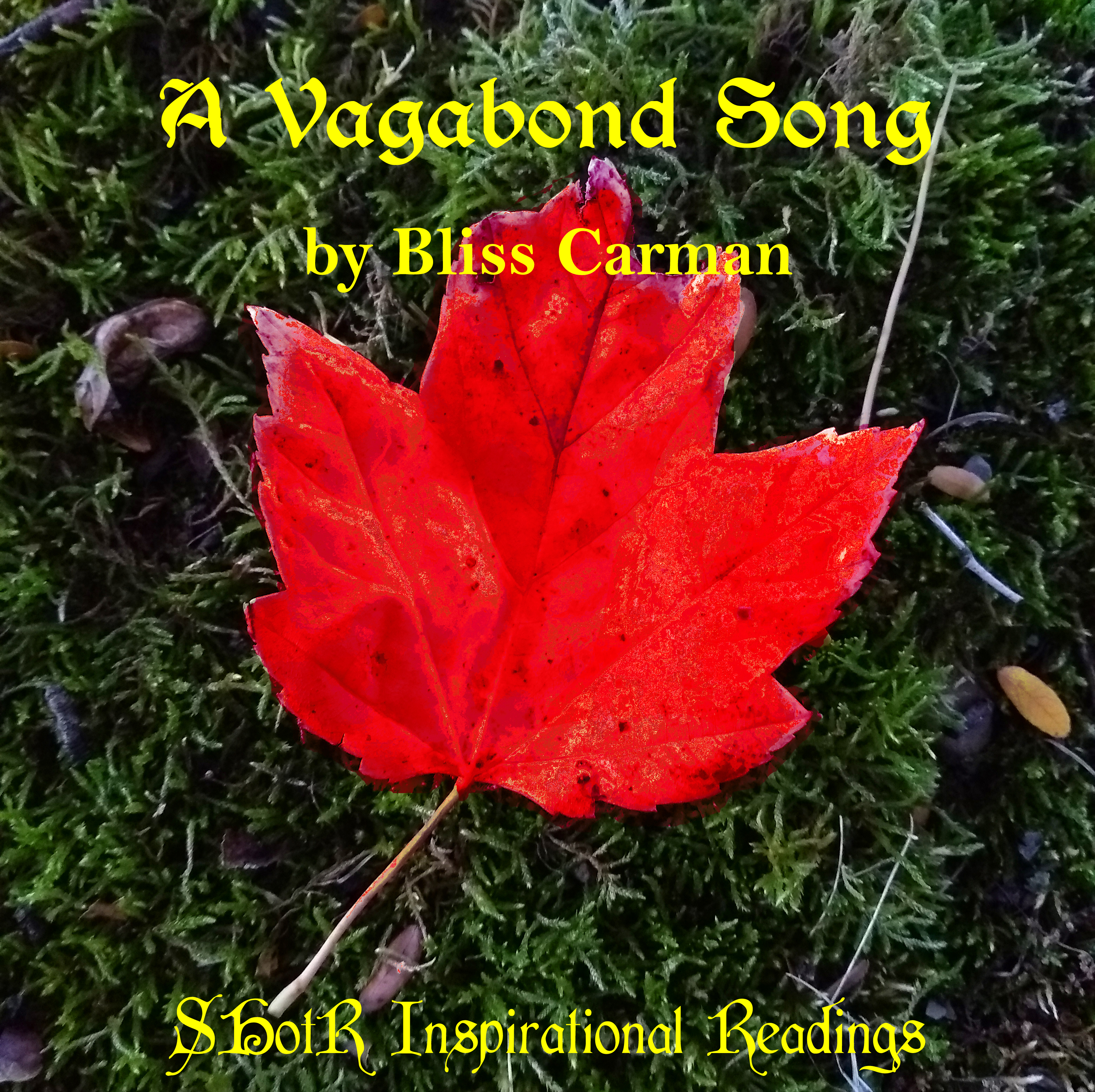
William Bliss Carman (April 15, 1861 – June 8, 1929) was a Canadian poet who lived most of his life in the United States, and was Canada’s poet laureate during his later years. Carman’s poetry has a lyric touch and achieved international recognition. American poet Richard Hovey, was Carman’s close friend and collaborator on the successful Vagabondia poetry series. Songs of Vagabondia (the first Hovey-Carman collaboration) was published by Copeland & Day in 1894. From 1896 on, Carman had a long-standing relationship with Mrs. Mary Perry King, who was his friend, patron, and occasional lover. WWI saw a decline in his poetry’s popularity and his health, but by the mid-1920s, his work was again popular. Carman died of a brain hemorrhage at the age of 68 in New Canaan, and his ashes were buried in Forest Hill Cemetery, Fredericton, with a national memorial service held at the Anglican cathedral there. On May 13, 1954, a scarlet maple tree was planted at his gravesite, to grant the request he wrote into his 1892 poem, The Grave-Tree:
Let me have a scarlet maple For the grave-tree at my head, With the quiet sun behind it, In the years when I am dead.

Oscar Fingal O’Flahertie Wills Wilde (16 October 1854 – 30 November 1900) was an Irish Catholic poet and playwright. He was, from childhood, intelligent, talented, and independent. Wilde’s style and wit developed further whilst in college (Trinity College, Dublin): he was first in his class in his first year, won a scholarship by competitive examination in his second and, in his finals, won the Berkeley Gold Medal in Greek, the University’s highest academic award. Wilde won the 1878 Newdigate Prize for his poem Ravenna. In November 1878, he graduated from Trinity College with a double first in his B.A. of Classical Moderations and Literae Humaniores (Greats). Wilde wrote to a friend, “The dons are ‘astonied’ beyond words – the Bad Boy doing so well in the end!” He was encouraged to compete for a demyship (a half-scholarship worth £95 (£8,900 today) per year) to Magdalen College, Oxford, which he won. It was at Magdalen College that Wilde became well known for his role in the aesthetic and decadent movements. He wore his hair long, openly scorned “manly” sports (he occasionally boxed, and was good at it), and he decorated his rooms with peacock feathers, lilies, sunflowers, blue china, and other objets d’art. He published a book of poems and lectured in the United States and Canada on the new “English Renaissance in Art” and interior decoration. Back in London, Wilde met Constance Lloyd in 1881, and they married on 29 May 1884. The couple had two sons together, Cyril (1885) and Vyvyan (1886). Wilde’s marriage began to unravel after his wife’s second pregnancy; it was then that he was introduced to homosexuality by Robert Ross (Ross was a precocious homosexual seventeen-year-old, who was determined to seduce Wilde). In 1890, Wilde incorporated themes of decadence, duplicity, and beauty into what would be his only novel, The Picture of Dorian Gray (1890). Wilde was drawn to playwriting, and he wrote Salome (1891) while in Paris; it was refused a production license for England due to a prohibition against the portrayal of Biblical subjects on the English stage. In the early 1890s, Wilde wrote society comedies, including Lady Windermere’s Fan, A Woman of No Importance, and An Ideal Husband, which made him one of the most successful playwrights of late-Victorian London. In mid-1891, Wilde met Lord Alfred Douglas, an undergraduate at Oxford, and by 1893 Wilde was infatuated with Douglas, who introduced Wilde to the Victorian underground of gay prostitution. From 1892 onwards Wilde rendezvoused with a series of young working-class male prostitutes. At the height of his fame and success, while The Importance of Being Earnest (1895) was still being performed in London, Wilde, encouraged by Douglas and against the advice of his friends, initiated a lawsuit against Douglas’ father, the Marquess of Queensberry, for criminal libel after the Marquess left his calling card at Wilde’s club, inscribed: “For Oscar Wilde, posing somdomite (sic).” Under the 1843 Libel Act, Queensberry could avoid conviction only by proving that his accusation was true, and that there was some “public benefit” to having made the accusation openly. Queensberry’s lawyers hired private detectives to find evidence of Wilde’s homosexual liaisons. The libel trial became a cause célèbre when salacious details of Wilde’s private life appeared in the press. Queensberry’s lawyers recorded interviews with blackmailers, male prostitutes, cross-dressers, and homosexual brothels: most were coerced to appear as witnesses because they could otherwise be prosecuted as accomplices to the crimes of which Wilde was accused. The opening speech for the defense announced that they had found several male prostitutes who would testify that they had had sex with Wilde. On the advice of his lawyers, Wilde dropped the prosecution, and Queensberry was found not guilty. The court declared that his accusation against Wilde was justified, “true in substance and in fact” and Wilde was arrested on charges of sodomy and gross indecency. He endured two trials (the jury couldn’t come to a verdict in the first trial), and on 25 May 1895 he was convicted and sentenced to two years’ hard labor, the maximum penalty. Wilde was jailed from 1895 to 1897. During his last year in prison, he wrote De Profundis (published posthumously in 1905), a long letter that discussed his spiritual journey through his trials. When he was released from jail, Wilde left immediately for France; he never returned to Ireland or England. In France, he wrote his last work, The Ballad of Reading Gaol (1898), a long poem commemorating the harshness of prison life. Wilde’s health had suffered greatly in prison. By 25 November 1900 Wilde had developed meningitis, which most likely stemmed from the rupturing of his eardrum after a fall he suffered in prison; he died on 30 November 1900. Oscar Wilde is buried in Paris, France. Homosexuality was decriminalized in England and Wales in 1967. With the passage of the Policing and Crime Act 2017, Wilde was among some 50,000 men pardoned for homosexual acts no longer considered offences (the 2017 Act is known informally as the Alan Turing law).
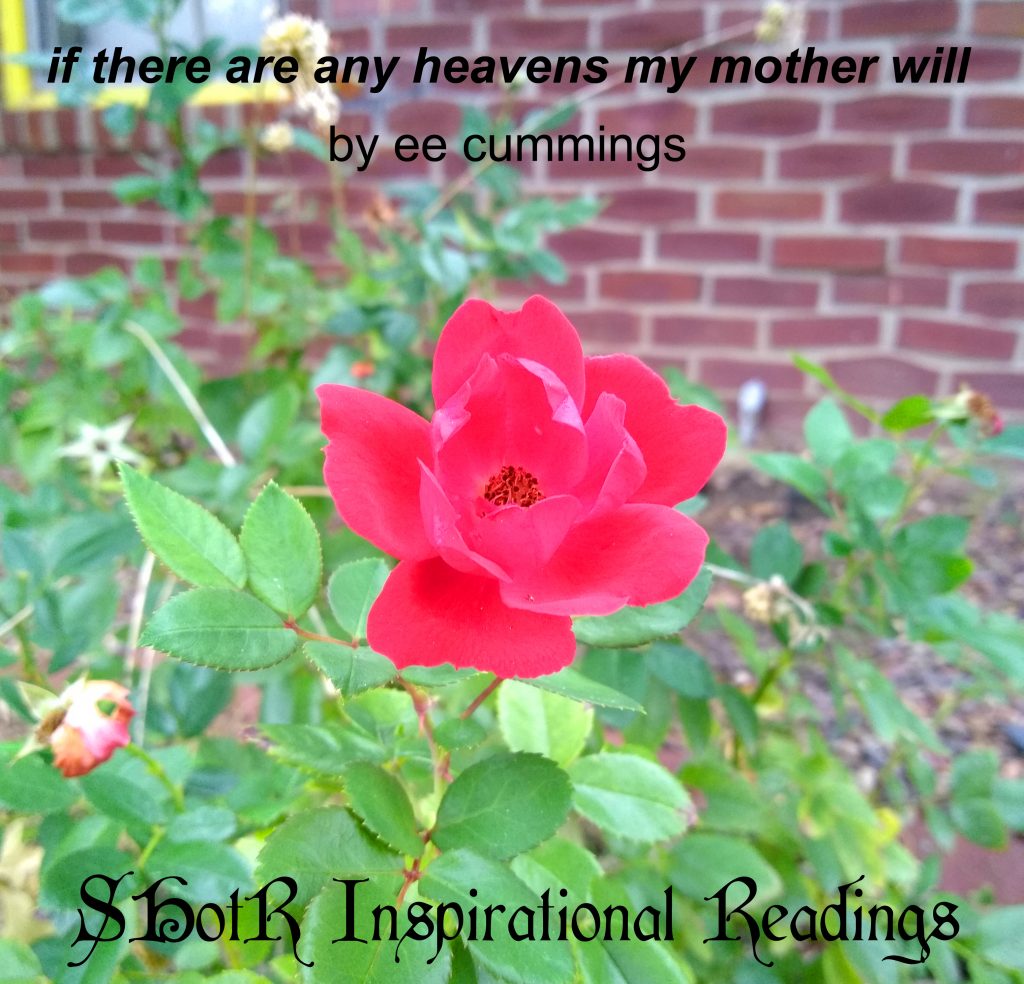
Edward Estlin “E. E.” Cummings (October 14, 1894 – September 3, 1962), often styled as e e cummings, was an American poet, painter, essayist, author, and playwright. He wrote approximately 2,900 poems, two autobiographical novels, four plays, and several essays. Often considered as one of the most important American poets of the 20th century, Cummings is associated with modernist free-form poetry, and use of idiosyncratic syntax and lower-case spellings. Cummings’ poems include controversial subject matter, including eroticism and ethnic slurs; he stated his work pointed out prejudices but did not condoned them. Cummings died of a stroke on September 3, 1962, at the age of 67 in New Hampshire. He is buried at Forest Hills Cemetery in Boston, Massachusetts. At the time of his death, Cummings was recognized as the second most widely read poet in the United States, after Robert Frost.

In stark contrast to material things that can be destroyed or stolen, investments in one’s soul can’t be threatened by others: this passage is Jesus’ rational and economic argument for piety. This idea, of heaven as a storehouse for spiritual treasures, existed before Jesus, in Jewish tradition and in the Hindu concept of karma. Both John the Baptist and Jesus were Essenes and taught the ancient Sacred Mysteries, including reincarnation. Matthew 6:19-21 is referring to the transmigration of the soul and taking one’s “treasures” (spirituality, talents, and education) into the soul’s next incarnation.

Marianne Craig Moore (November 15, 1887 – February 5, 1972) was an American modernist poet, critic, translator, and editor. Her poetry is characterized by linguistic precision, probing descriptions, and keen observations. Her poems often reflect a preoccupation with relationships between the common and the uncommon, and they advocate discipline in both art and life, restraint, modesty, and humor. She frequently used animals to emphasize independence, honesty, and the integration of art and nature. What Are Years examines the nature of the soul, taking a poetic journey through ways that expressing oneself to the fullest can make one “grow taller,” like a singing bird. The poem expresses connections between nature, the soul, and living one’s best life. Moore’s work is frequently grouped with poets like H.D., T.S. Eliot, William Carlos Williams, Wallace Stevens, Ezra Pound, and Elizabeth Bishop. In Eliot’s introduction to her Selected Poems (1935), he wrote: “Living, the poet is carrying on that struggle for the maintenance of a living language, for the maintenance of its strength, its subtlety, for the preservation of quality of feeling, which must be kept up in every generation … Miss Moore is, I believe, one of those few who have done the language some service in my lifetime.” Moore’s Collected Poems (1951) won the Pulitzer Prize in poetry and the National Book Award, and in 1953 she was awarded the Bollingen Prize. Other honors and awards included the Poetry Society of America’s Gold Medal for Distinguished Development, the National Medal for Literature, and an honorary doctorate from Harvard University. Marianne Moore died in 1972 in New York City.
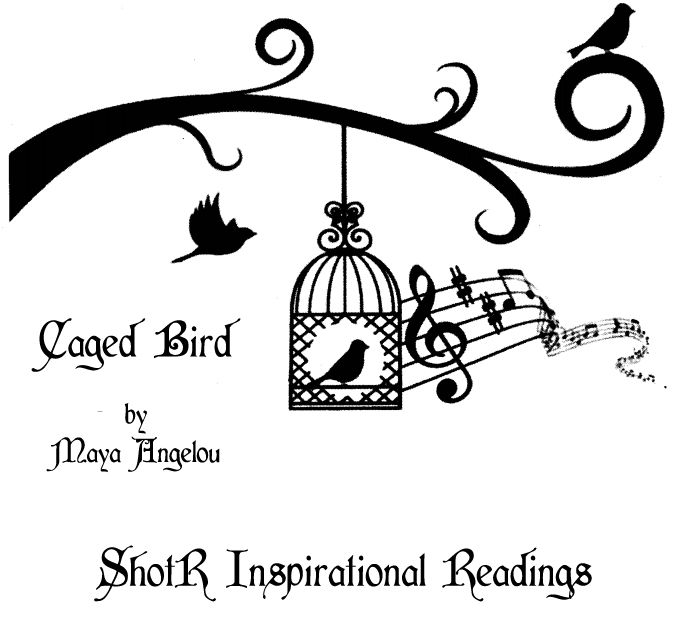
Maya Angelou (/ˈændʒəloʊ/), born Marguerite Annie Johnson (April 4, 1928 – May 28, 2014), was an American poet, memoirist, and civil rights activist. She became a poet and writer after a string of odd jobs during her young adulthood, that included fry cook, sex worker, nightclub performer, Porgy and Bess cast member, Southern Christian Leadership Conference coordinator, and working as a correspondent in Egypt and Ghana during the decolonization of Africa. She published seven autobiographies, three books of essays, and several books of poetry. She was also an actress, writer, director, and a producer and writer on five decades worth of plays, movies, and television shows. Angelou is best known for her series of seven autobiographies, which focus on her childhood and early adult experiences. The first, I Know Why the Caged Bird Sings (1969), tells of her life up to the age of 17 and brought her international recognition and acclaim. I Know Why the Caged Bird Sings was written in 1968; its content was inspired by her experiences at a dinner party in Accra. Angelou attended with James Baldwin, cartoonist Jules Feiffer and his wife Judy, and she was challenged by Random House editor Robert Loomis to write about her experiences.At the age of eight, Angelou was sexually abused and raped by her mother’s boyfriend, a man named Freeman. She told her family; Freeman was found guilty, jailed for only one day, and four days after his release, he was murdered (probably by her uncles). Angelou became mute for almost five years, because: “I thought, my voice killed him; I killed that man, because I told his name. And then I thought I would never speak again, because my voice would kill anyone.” According to Marcia Ann Gillespie, who co-wrote a biography about Angelou, it was during this period of silence that Angelou developed an extraordinary memory, her love for books and literature, and her ability to listen and observe the world around her.
Angelou lived in Accra, Ghana in the 1960s, and she became close friends with Malcolm X when he visited in the early 1960s. Angelou returned to the U.S. in 1965 to help him form a new civil rights organization, the Organization of Afro-American Unity; he was assassinated shortly after she returned. Devastated, she moved to Hawaii, resuming her singing career, then moved Los Angeles to focus on her writing. Working as a market researcher in Watts, she witness first-hand the riots in the summer of 1965. Angelou acted in and wrote plays while in LA, then moved to New York in 1967. There she met her lifelong friend Rosa Guy and renewed her friendship with James Baldwin, whom she had met in Paris in the 1950s. Angelou referred to Baldwin as “my brother.” In 1968, Martin Luther King Jr. asked Angelou to organize a march, but it was postponed because King was assassinated on her 40th birthday. Devastated again, her friend James Baldwin helped her out of her depression. As Gillespie wrote, “If 1968 was a year of great pain, loss, and sadness, it was also the year when America first witnessed the breadth and depth of Maya Angelou’s spirit and creative genius”. Despite having almost no experience, Angelou wrote, produced, and narrated Blacks, Blues, Black!, a ten-part documentary series about the connection between blues music and Black Americans’ African heritage, for National Educational Television, the precursor of PBS. After I Know Why the Caged Bird Sings was published, Angelou publicly discussed aspects of her personal life, becoming respected as a voice for black people and women. Her works are viewed as a defense of black culture, widely used in schools and universities worldwide; there have been attempts to ban her books from some U.S. libraries. Angelou’s most celebrated works are categorized as autobiographies because she made a deliberate attempt to challenge the common structure of the autobiography by critiquing, changing, and expanding the genre. Her books center on themes such as racism, identity, family, and travel.
Throughout her life Angelou received many honors, including being named the first Reynolds Professor of American Studies (1982) at Wake Forest University in Winston-Salem, North Carolina. Active in the Civil Rights Movement, she worked alongside both Martin Luther King Jr. and Malcolm X. She started lecturing in the 1990s while in her 60s, making around 80 appearances a year on the lecture circuit; she continued to lecture into her 80s. In 1993, Angelou recited her poem “On the Pulse of Morning” (1993) at the first inauguration of Bill Clinton; she was the first poet to present an inaugural recitation since Robert Frost (for John F. Kennedy, 1961). Angelou’s Georgia, Georgia (1972), produced by a Swedish film company and filmed in Sweden, was the first screenplay written by a Black woman. Angelou worked as a composer, writing for singer Roberta Flack, and composing movie scores. She also wrote articles, short stories, TV scripts, documentaries, autobiographies, produced plays, and was named visiting professor at several colleges and universities. Despite chronic pain due to her dancing career and respiratory failure, she wrote four books during the last ten years of her life. Angelou died on the morning of May 28, 2014 at the age 86.

Robert Lee Frost (March 26, 1874 – January 29, 1963) was an American poet whose work was first published in England. He used settings from rural life in New England in the early twentieth century to examine complex social and philosophical themes. In 1924, Frost won the first of four Pulitzer Prizes for the book New Hampshire: A Poem with Notes and Grace Notes. He also won Pulitzers for Collected Poems in 1931, A Further Range in 1937, and A Witness Tree in 1943. Frost was awarded the Congressional Gold Medal in 1960 for his poetic works. On July 22, 1961, he was named poet laureate of Vermont. Robert Frost’s personal life was full of grief and loss. In 1885, when he was 11 years old, his father died of tuberculosis, leaving the family with only eight dollars. Five years later, Frost’s mother died of cancer. In 1920, Robert had to commit his younger sister Jeanie to a mental hospital; she died there nine years later. Mental illness ran in the Frost family: both he and his mother suffered from depression, and his daughter Irma was committed to a mental hospital in 1947. Frost’s wife, Elinor, also experienced bouts of depression. Elinor and Robert Frost had six children: son Elliot (1896–1900, died of cholera); daughter Lesley Frost Ballantine (1899–1983); son Carol (1902–1940, committed suicide); daughter Irma (1903–1967); daughter Marjorie (1905–1934, died as a result of puerperal fever after childbirth); and daughter Elinor Bettina (died just one day after her birth in 1907). Only Lesley and Irma outlived their parents. Frost’s wife had heart problems throughout her life, and developed breast cancer in 1937. She died of heart failure in 1938. Robert Frost died in Boston on January 29, 1963 of complications from prostate surgery, and was buried at the Old Bennington Cemetery in Bennington, Vermont. His epitaph quotes the last line from his poem, The Lesson for Today (1942): “I had a lover’s quarrel with the world.”

Wallace Stevens (October 2, 1879 – August 2, 1955) was an American modernist poet, born in Reading, Pennsylvania. He graduated from Harvard and New York Law School, and worked as an insurance executive for most of his life. Stevens’ first publication was in 1923, the Harmonium collection, in which Domination of Black appeared; he selected it as his “best poem” for the anthology This Is My Best (1942). Stevens received the annual National Book Award for Poetry twice, in 1951 for The Auroras of Autumn, and in 1955 for Collected Poems. In 1909, he married Elsie Stevens, and they had a daughter, Holly. Elsie later became mentally ill. In his biography of Stevens, Paul Mariani says that by the mid-1930s the couple was living in the same house but separated by nearly a decade in age and by keeping separate bedrooms. In April of 1955, Stevens was diagnosed with stomach cancer; his daughter Holly was advised by doctors not to tell him. He died August 2, 1955, a few months after he had won the Pulitzer Prize for Poetry for his Collected Poems.
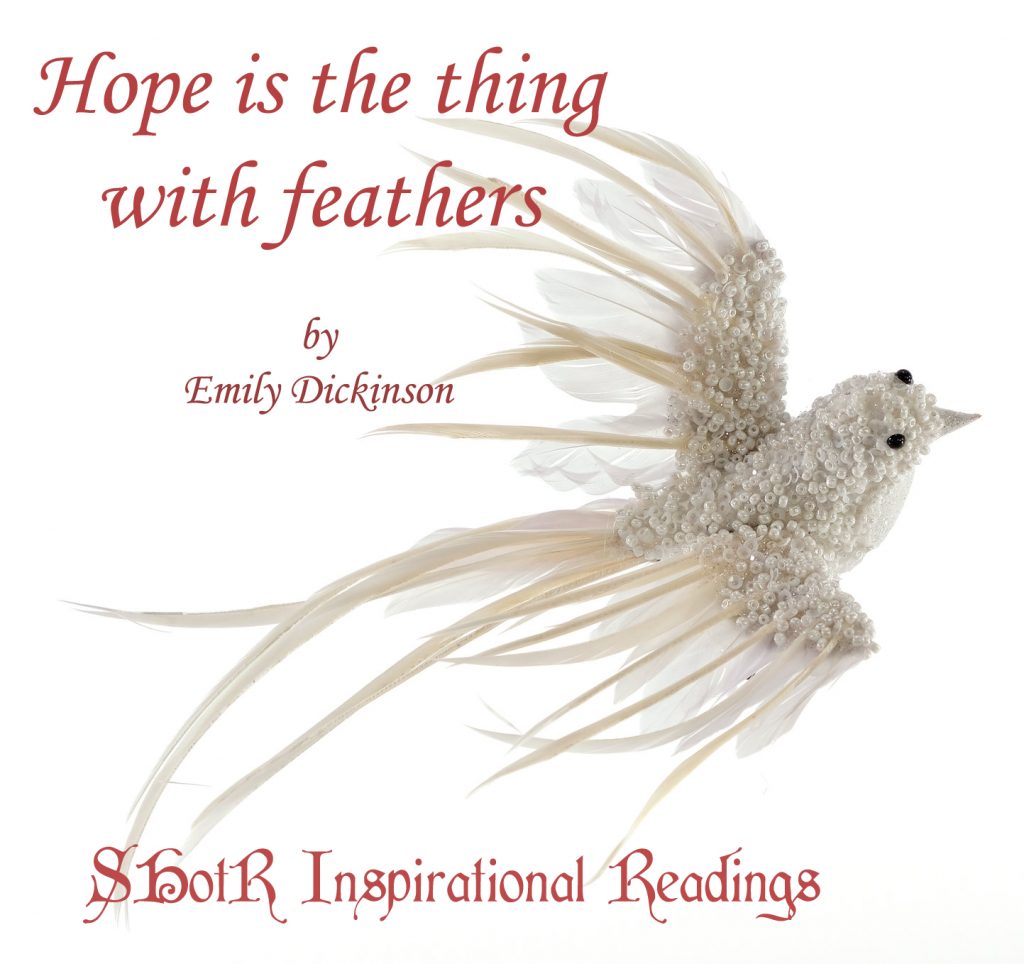
Emily Elizabeth Dickinson (December 10, 1830 – May 15, 1886) was an American poet, born in Amherst, Massachusetts. Dickinson lived much of her life in isolation, and was thought of as an eccentric by locals. She never married, and the friendships she fostered depended entirely upon written correspondence. Dickinson also suffered from depression; she revealed the extent of her depression to a friend after one of her mentors passed away:
. . . some of my friends are gone, and some of my friends are sleeping – sleeping the churchyard sleep – the hour of evening is sad – it was once my study hour – my master has gone to rest, and the open leaf of the book, and the scholar at school alone, make the tears come, and I cannot brush them away; I would not if I could, for they are the only tribute I can pay the departed . . .
Dickinson was a prolific writer, but her only one letter and only 10 of her nearly 1,800 poems were published during her lifetime. Her poems explore aesthetics, society, nature, spirituality, death, and immortality. After her death in 1886, Lavinia Dickinson (Emily’s younger sister) discovered Dickinson’s cache of poems, and her work became public. A 1998 New York Times article revealed the name Susan was often deliberately removed from Dickinson’s poems, and that at least eleven poems were originally dedicated to her sister-in-law Susan Huntington Gilbert Dickinson. A complete and mostly unaltered collection of her poetry became available for the first time when scholar Thomas H. Johnson published The Poems of Emily Dickinson in 1955.

Elizabeth Bishop (February 8, 1911 – October 6, 1979) was an American poet and short-story writer. She was Consultant in Poetry to the Library of Congress from 1949 to 1950, the Pulitzer Prize winner for Poetry in 1956, the National Book Award winner in 1970, and the recipient of the Neustadt International Prize for Literature in 1976. Dwight Garner argued that she was perhaps “the most purely gifted poet of the 20th century.” In 1951, Bishop set off to circumnavigate South America by boat. Arriving in Santos, Brazil in November of that year, Bishop expected to stay two weeks but stayed 15 years. She lived in Petrópolis with architect Lota (Maria Carlota) de Macedo Soares. The relationship is depicted in the 2013 film Reaching for the Moon. One Art, from The Complete Poems 1926-1979. Copyright © 1979, 1983 by Alice Helen Methfessel. Used by permission of Farrar, Straus & Giroux, LLC, http://us.macmillan.com/fsg. All rights reserved.

More about Anne Brontë (17 January 1820 – 28 May 1849): Anne was the youngest of the Brontë children. She lived most of her short life in the family home in Haworth, a village in City of Bradford, West Yorkshire, England, on the bleak Yorkshire moors. At age 15, Anne went to boarding school some 17 miles away from home, at Roe Head in Mirfield, in Kirklees, West Yorkshire. Her sister Charlotte taught there; Anne replaced Emily at the school after Emily left due to homesickness. Anne was at the school for two years, returning home for summers and Christmas vacations. At age 19, she left home to work as a governess, first for the Ingham family at Blake Hall near Mirfield and then to the children of Reverend Edmund Robinson and his wife Lydia at Thorp Green Hall near York. She remained their governess until she was 25 years old. Anne and her sisters Charlotte and Emily published a volume of poetry (Poems by Currer, Ellis, and Acton Bell, 1846), which included Anne’s poem, Memory. The sisters paid to have the collection published with the money their maternal aunt had left them. Anne’s novel, Agnes Grey, based upon her experiences as a governess, was published in 1847. Her second novel, The Tenant of Wildfell Hall, which is one of the first feminist novels, was published in 1848. The following year, Anne contracted influenza and then developed pulmonary tuberculosis; she died at the age of 29.

Lughnasa is a Gaelic festival marking the beginning of the harvest season, traditionally recognized as August 1, which is about halfway between the summer solstice and autumn equinox. Lughnasa is named after Lugh, one of the most prominent gods in Irish mythology. He is a warrior, a king, a master craftsman, a savior, and a god of the arts, oaths, truth, and the law, and thus rightful kingship. County Louth in Ireland and the village of Louth within it are named after him. In Irish mythology, the Lughnasa festival was begun by Lugh as a funeral feast and athletic competition commemorating his mother Tailtiu, who died of exhaustion after clearing the plains of Ireland for agriculture. Tailtiu was an earth goddess, whose death represented the dying vegetation of Autumn. In recent centuries, some Lughnasa celebrations are held on the Sundays nearest August 1st. Lughnasa (pronounced Loo-nuh-suh) is one of the four Gaelic seasonal festivals, along with Samhain (pronounce Saw-wayne), Imbolc (pronounced Im-bolk), and Beltane (pronounced Bell-tayne).
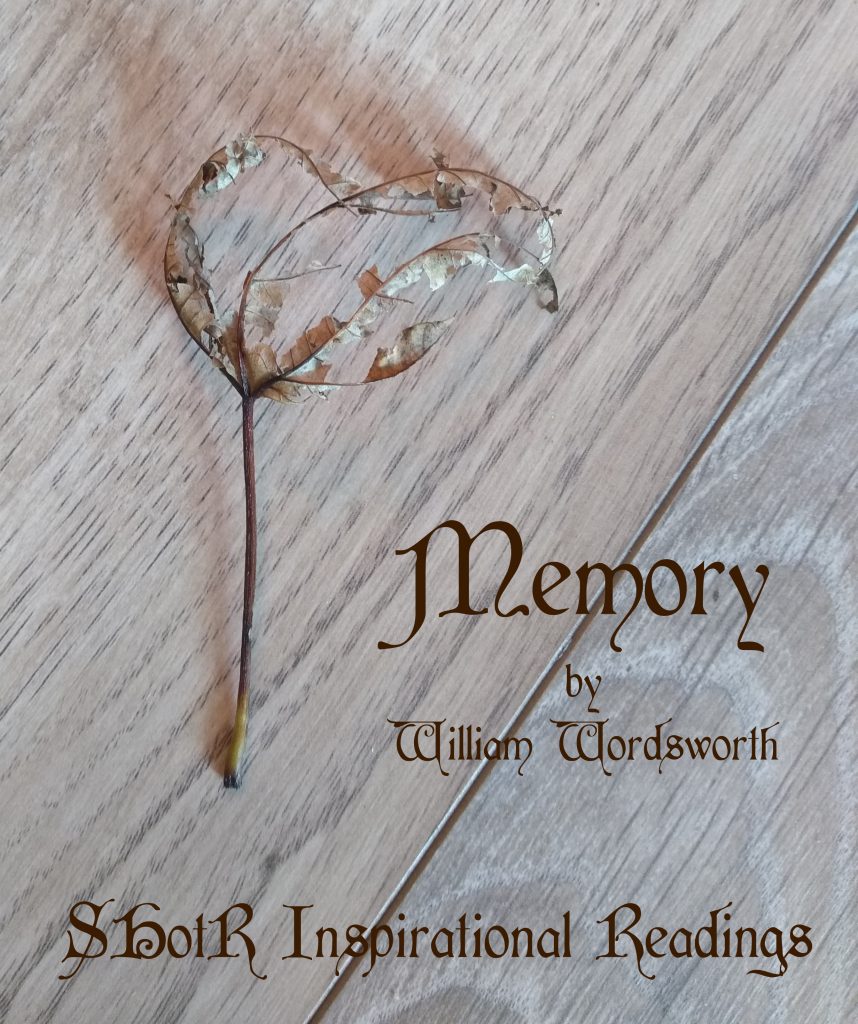
Today’s reading is the poem Memory by William Wordsworth. It is a poem that makes us think about what we see and feel “in the moment,” as well as the importance of how we later remember and write about our memories.
Today’s reading, the poignant poem Music by Percy Bysshe Shelley, beautifully describes how important music is as a healing and comforting element of our consciousness. It is dedicated to the memory of loved ones lost.
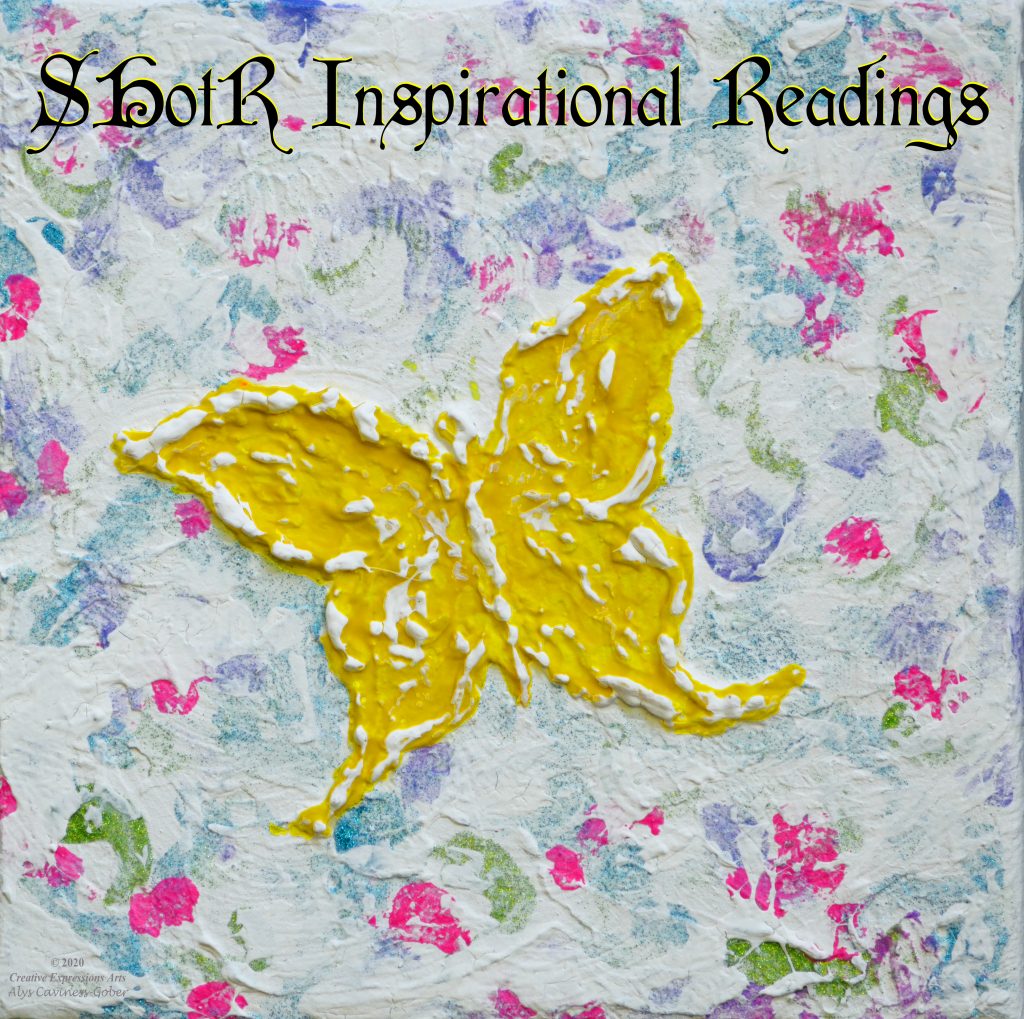
This week’s inspirational reading, Remember by Christina Rossetti, is dedicated to Radka Caviness (02 January 1939 – 08 July 2017). Rossetti’s thoughtful poem about love, loss, and life, is famous in part because the advice in the final lines has a bit of a twist, and is a bit unexpected.

Here’s a reading inspired by the summer sea, by Syrian poet Nazir Qabbani (نزار توفيق قباني, 21 March 1923 – 30 April 1998). Qabbani is one of the most revered contemporary poets in the Arab world, and is thought of as Syria’s National Poet.
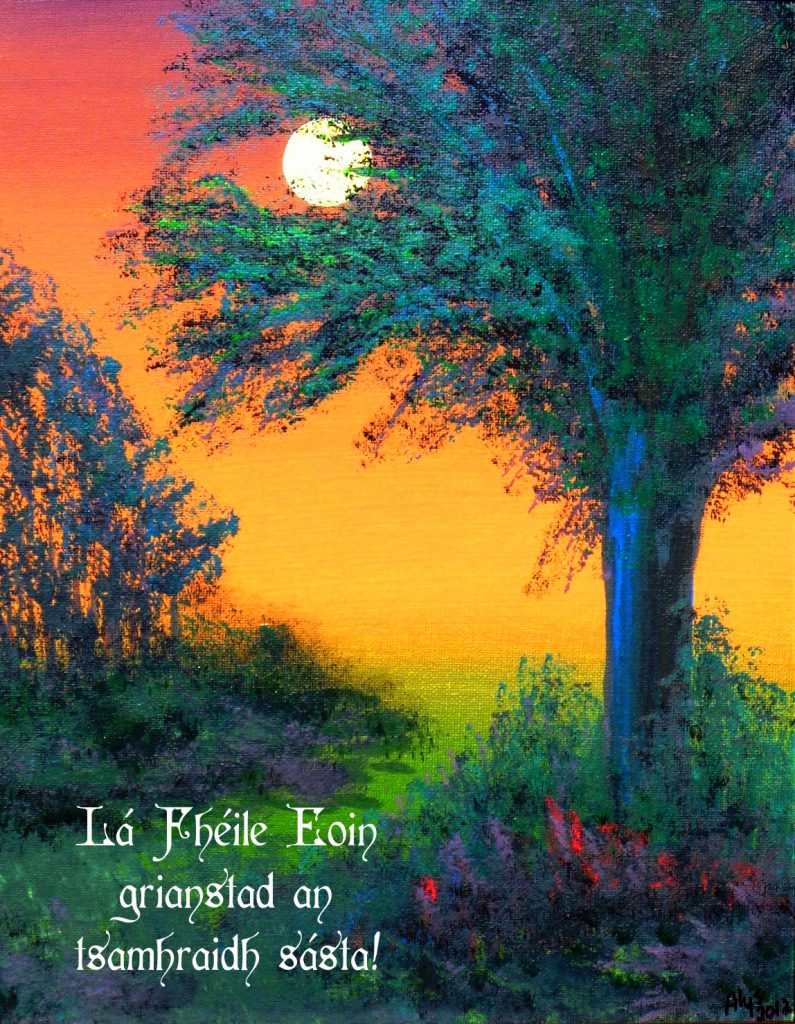
Note from Rev Alys: Yesterday was June 20, this year’s Summer Solstice, and I was inspired to record several readings. Now, I love them all, so I was hard pressed to decide which one to upload for today’s Inspirational Reading! In the end, I chose Shakespeare’s Sonnet 30. Stay tuned ~ lots of wonderful poems about memories and Summertime are coming over the next several weeks!



